Diddlebury Parish Flood Action Group
Report on Flooding on B4368 at Corfton by the Sun Inn – December 2020
The flooding was first noticed on the afternoon of Thursday 17th December when the two images below were taken.
B4368 looking south west from the Sun Inn The Bus Layby opposite the Sun Inn
It was difficult to see exactly where the water was coming from but it was emerging on the north side of the road and was ponding in front of Warwick Cottage where the owner had laid sand bags to protect his house. The water then ran across the road to pond in the Bus layby opposite the Sun Inn. A gully on the north side of the road was spewing water up which indicated a blockage downstream.
These images were sent by email to Highways Dept on the morning of Friday 18th with a request for action.
On Tuesday 22nd, a team from Highways Dept was on site and the cause of the problem was identified as a blocked pipe beneath the B4368. This pipe transmits water running down Corfton Bache beneath the B4368 to the south side of the road and hence into Lower Corfton. The pipe was cleared after some difficulty and the flooding subsided that evening.
An inspection on Wednesday 23rd December showed that the pipe in question started just inside the road reserve where the stream running down the Bache runs – just to the west of Warwick Cottage as shown on the map below.
The start of the pipe is unprotected as shown in the following two images. Water from the Bache stream passes through a grating in the hedge line into a depression where it should enter the pipe and get away. With the pipe being blocked, water had built up until it flooded across the road and into Warwick Cottage’s driveway.
Map of area round the Sun Inn Unprotected pipe entrance Adjacent chamber and pipe entrance
Road gully and chamber on south side of the B4368 Proposed development south of the B4368 showing “indicative route of underground drain” in blue
On the south side of the road, the pipe seems to discharge into a chamber near a road gully (as shown in the images above) and then the water presumably makes its way down the ditch at the side of the road to Lower Corfton. However, the plan of a proposed development of a field south of the B4368 shown above, shows in blue the indicative route of another drain, starting near the Bus layby and then crossing the field before ending at a track in Lower Corfton. We are unsure which of these routes, the water from the Bache follows.
The quick response from Highways Dept was much appreciated but it seems clear that the pipe beneath the B4368 will quickly block again unless a proper inlet arrangement is built. We hope that Highways Dept can arrange for this to be carried out before more flooding occurs.
G C Neden
23/12/2020
Diddlebury Parish Flood Action Group
Notes for CaBA Zoom Meeting on 19th November 2020
The FAG was started by a number of local residents who were motivated to take action by the numerous flood events which occurred in the village during 2012.
Whilst it is all very well to decide in principle to start a FAG, it is something else again to find out how to do this but luckily, the FAG in our neighbouring village of Culmington was already established so we went to their meetings to see what we should do and pick their brains. They were extremely helpful and in particular they introduced us to the NFF.
We soon became involved with Heather and her fellow members and they took us in hand and organised the gaggle of individuals into a formal Group. Following on from this we arranged regular MAM’s and produced a FAP. We received much initial encouragement and latterly financial assistance from the DPC and this is still ongoing. We were also successful in an application for funding from the Ludlow Rotary Club. Shropshire Council have assisted us with our Application for an OWC to allow for stream clearance works to be carried out from time to time and funded the first of these exercises. Our local MP Mr Philip Dunne has also been supportive of our work.
We were introduced to the concept of Slow the Flow by the use of NFM techniques and were very pleased to discover that the Corvedale was in the forefront of all this under the Shropshire Slow the Flow Steering Group funded by DEFRA and with the fieldwork being carried out by the SWT. We thus became part of a CaBA Partnership in the Corvedale.
Since that time we have grown to encompass the whole of Diddlebury Parish and now extend from the Brown Clee to Wenlock Edge. We also increased our membership to include members of the local farming community as their actions can have such a bearing on flooding. Our scope of work now includes regular working parties to keep the stream through the lower parts of the village clear of weed growth and excess gravel and an annual Litter Pick along the Diddle Brook. We also report back to the local Highways Depot on local flooding hot spots, blocked gullies and pipes and so on.
We are enthusiastic about NFM measures. We find that members of the local community are appreciative of our work and there is now, after an initial period of scepticism over leaky dams, a general perception that local flooding has been reduced by our efforts. Although there is already some anecdotal and empirical evidence for this view, we look forward to the Report from Cardiff University which will hopefully prove and quantify the efficacy of NFM principles.
The inclusion of local communities into such projects is in our view vital to their success. Whilst small groups such as ours do not have the technical expertise to devise solutions to our local flooding problems, we do have intimate information on the causes, location and effects of flooding in our areas and this data is essential to a holistic catchment based approach to solving these problems.
Geoff Neden
19/11/2020
Diddlebury Parish Flood Action Group
Progress Report October 2020
A working party cleared the stream at the bottom of Mill Lane on Thursday 22nd (after a rain delay on the 21st). An hour’s work saw it cleaned up and ready for the winter.
Highway’s Department have followed up their recent work in Lower Corfton by clearing the ditch running from the B road across the farm land to Lower Corfton.
We are now members of the Shropshire Flood Action Group Forum which, under the auspices of the National Flood Forum is a grouping of all the existing Flood Action Groups in the County. The Group is chaired by Bob Haddon who has done such great work in the Telford area. It is anticipated that the Group will carry more clout than the individual members in getting action from the various Agencies involved in Flood Prevention.
Geoff Neden
26th October 2020
Diddlebury Parish Flood Action Group
Drainage work in Lower Corfton
Following a site meeting earlier in the year, the Highways Dept. arrived with a JCB on Friday 18th September.
They carried out useful work as follows:
Cleaned out and extended the pond at the low spot to further its use as an attenuation pond in Slowing the Flow.
Located and checked the size and condition of the pipe/duct beneath the road at the low spot.
Cleared the upstream end of this pipe/duct and provided a temporary concrete cover for the adjacent chamber
Cleaned out and provided temporary concrete covers for chambers found near the pond.
Created new ditches to divert water from the road and the adjacent field into the pipe/duct beneath the road.
Confirmed that it is their intention that new, permanent metal chamber covers will eventually be provided to the newly discovered chambers and also the one at the upstream end of the pipe/duct beneath the road to facilitate future de silting and rodding exercises.
Confirmed that Highways Dept. will approach the farmer who owns the field upstream of the pipe beneath the road and try to gain his permission to carry out improvement works to the watercourse in that field which carries water from the B Road across it to the pipe/duct beneath the road.
Suggested that more de silting work may be necessary in the watercourse downstream of the pipe/duct beneath the road.
The following images show some of the work done.
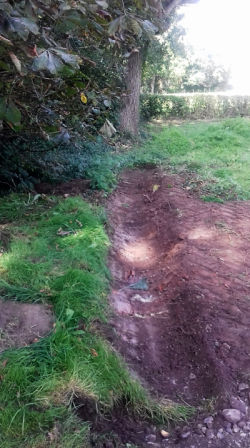
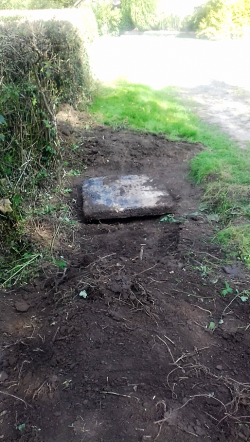
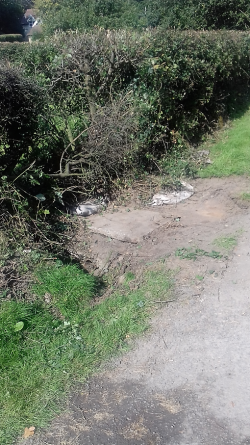
Geoff Neden
28th September 2020
Diddlebury Parish Flood Action Group
Progress Report 16 including the recent desilting exercise.
As our normal working parties were unable to operate this year due to the Covid 19 problem, weed growth in the stream at the bottom of Mill Lane, Diddlebury became excessive with encroachment right across the watercourse.
In addition, the stream bed had a deposition of excess gravel brought down by Storm Dennis in February.
To get all this cleared away in advance of winter storms, a desilting exercise was carried out on Tuesday 8th September under the Ordinary Watercourse Consent (OWC) granted for similar work in 2018 and which was still current. The work had to be completed before 1st October when fish spawning begins.
The scale of the work was such that it could no longer be tackled by normal means and machinery was needed. With the kind assistance of Topher Morgan, Andy Farnell and Patrick Wrigley, a tractor and trailer and a Mini Digger were used – all expertly driven by Andy. At the same time, local volunteers were on site directing traffic and strimming the banks.
The following “Before” and “After” images show what a huge difference was made and the stream is now ready for winter flows.
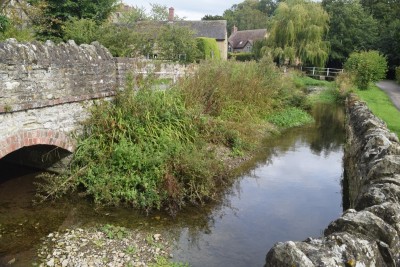
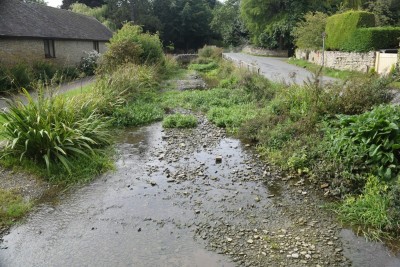
Before
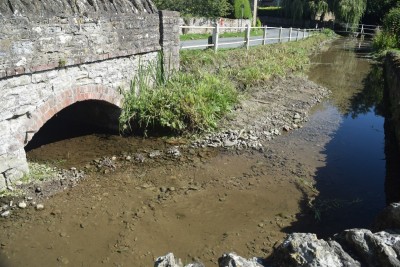
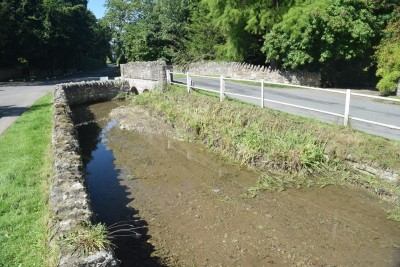
After
Otherwise, the Group has joined the recently formed Shropshire Flood Action Group Forum (SFAGF) which is intended as both a pressure group to get action from the various Agencies involved in flood prevention and to act as a forum for the exchange of ideas between the member Groups. This has been arranged under the auspices of the National Flood Forum (NFF).
Geoff Neden
09/09/2020
Diddlebury Parish Flood Action Group
Circular from Shropshire Council regarding assistance after Storm Dennis
This is being placed on the web page in case there are any members of the community who suffered from flooding during Storm Dennis and might be eligible for assistance but who have not yet registered with the Council
Dear resident,
You are being contacted as you have registered yourselves as having been affected by the recent flooding that affected large parts of Shropshire.
As you may be aware in addition to the hardship grant and Council Tax reductions for residential properties, and business rates relief available to businesses, the Ministry of Homes Communities and Local Government (MHCLG) recently published the Property Level Resilience Recovery Support Scheme 2020 for property and business owners who were internally flooded during Storm Dennis an subsequent widespread flooding across the County. Whilst this funding is being made available by Central Government it is being distributed by Shropshire Council.
The scheme provides up to £5000 towards making your property or business more resistant or resilient to future flood events though the installation of Property Flood Resilience (PFR) measures. These measures can include flood resistant door barriers and air brick covers to manage the amount of flood water entering the property, or the raising of electrics above the flood level and the replacement of carpets with tiling to make it easier to return a property to normal after a flood. Other resistance and resilience measures are available depending on the type of property and source of flooding.
To ensure that PFR measures are appropriate for your property, and to ensure that they will be effective in delivering flood resistance or resilience, the guidance provided by MHCLG states that a survey, undertaken by a suitably qualified surveyor is required before funding can be made available. Shropshire Council are currently working with MHCLG and the Environment Agency to deliver this funding as soon as possible, however with the current restrictions on non-essential travel and social distancing in response to Covid19, the delivery of this project at present is extremely difficult.
Shropshire Council will contact you again as soon as more information is available on how this project can be delivered within current guidelines. Whilst it is understood that you may wish to take action to protect your property as soon as possible, please be aware that it may not be possible to claim the costs of PFR measures retrospectively if you choose to purchase these prior to funding being approved.
I hope that you can understand the above position. Shropshire Council will be working hard to ensure that this funding can be made available as soon as possible once the current restrictions have been lifted.
Please note that this funding is available to the property or building owner only. If you have made the Council aware of the property flooding as the tenant, please call Shropshire Councils Customer Contact Centre to update our records. Where possible please provide the contact details of the owner of your property or the agency who manages your letting.
Regards,
John Bellis
Drainage and Flood Risk Manager
G C Neden
Diddlebury Parish Google Group
01/05/20
Diddlebury Parish Flood Action Group
Update on Storm Dennis for April 2020
Although I was unable to go to the Steering Committee last month, I did take part in the phone conference call and was able to put forward the problems which Diddlebury experienced. It was encouraging to hear what progress Cardiff University are making with their field and laboratory work with a view to formally quantifying the effects of leaky dams on flood flows.
At the request of the National Flood Forum, I put in some Notes for the EFRA Select Committee on Flooding on the way in which the Authorities dealt with Storm Dennis and made some suggestions for improvements. These Notes are included below this item
Since writing my last Report, I have learnt that two other buildings flooded during the storm – one of Topher Morgan’s farm buildings and the Corvedale C of E Primary School.
Storm Dennis was estimated to be a 1 in 100 year event whereas the previous storm in October 2019 was thought to be a 1 in 40 year event. We are trying to match the resulting flooding with the rainfalls and compare these with known flood levels in earlier, pre leaky dam, events so as to get an informal idea of what difference the leaky dams might have made.
We would normally be arranging the first work party of the year to keep vegetation in the Diddle Brook under control in the next few weeks. This of course cannot happen under present Regulations but perhaps alternative arrangements can be thought up and I will keep you posted.
Geoff Neden
08/04/2020
Diddlebury Parish Flood Action Group
Comments for the EFRA Select Committee Enquiry on Flooding – Deadline May 15th 2020
Terms of Reference
1. Are the current national and local governance and co-ordination arrangements for flood and coastal risk management in England effective?
2. What lessons can be learned from the recent floods about the way Government and local authorities respond to flooding events?
3. Given the challenge posed by climate change, what should be the Government’s aims and priorities in national flood risk policy, and what level of investment will be required in future in order to achieve this?
4. How can communities most effectively be involved, and supported, in the policies and decisions that affect them?
5. With increasing focus on natural flood management measures, how should future agricultural and environmental policies be focussed and integrated with the Government’s wider approach to flood risk?
6. How can housing and other development be made more resilient to flooding, and what role can be played by measures such as insurance, sustainable drainage and planning policy?
Comments by the Diddlebury Parish Flood Action Group
The following comments are made from the point of view of a local Flood Action Group in the Corvedale area of Shropshire. We have over the past few years been the beneficiary of much work in the field of Natural Flood Management (NFM) by a large number of Agencies. The results of this programme are now under assessment by a team from the University of Cardiff.
Item 1
The Corvedale area has suffered over the past 18 months or so owing to a vacancy in the post of Drainage and Flood Risk Manager, Flood and Water Management Team, Shropshire Council. The new incumbent, John Bellis, started work late last year and we hope to see an improvement in coordination soon.
Otherwise we have held regular Multi Agency Meetings which have been useful although the implementation of our requests for action – particularly from the Highways Dept – has been very slow. We understand that the cause of this does arise from the local staff but stems from higher up the chain and we have written to our MP asking for his assistance along with that of the local Councillor.
Item 2
Whilst all the Council staff involved in flooding worked extremely hard to assist those affected by it, they were overwhelmed by the scale of the problems. We understand that it is of course impracticable to have expensive resources (personnel, materials etc) held ready for long periods in the anticipation of flood events which happen relatively rarely but consider that more forward planning is required as severe events seem to be occurring with greater frequency.
On a practical level, our local flooding during Storm Dennis was made far worse by blocked highway drains and gullies. Reasons for this include less regular maintenance work as the result of financial cut backs to Council Agencies and also an increase in run off from agricultural land – resulting from changes in agricultural practices - which was not allowed for in the design of these drainage systems and which leads to their capacities being exceeded – even if they had been kept clear. Run off is both from the field surfaces and from underground drainage systems which discharge into roadside ditches. The surface run off contains top soil and silt which blocks the drains and gullies but also fertilisers which are environmentally harmful to the receiving watercourses. The loss of both topsoil and fertiliser must represent a financial loss and long term physical problem to the farming community and in our view this problem should be urgently addressed - taking into account the opinions and needs of all interested parties and looking at all possible means of mitigation. Legislation may be necessary.
It seems to us that the prioritisation of works by the Highways Authority in the field of surface water drainage is not always decided on a rational basis ie those required most urgently are not always those given priority. There are no doubt reasons for this situation but in our view the present method used for allocation of job priorities needs revisiting.
Item 3
This is beyond our level of competence but is clearly a vital concern.
Item 4
The gradual loss of Direct Works Departments within Council’s Highway Departments and their substitution by the use of Contractors who change on a regular tender basis, means that the knowledge which used to be gained and held over years by local men employed by the Council has been lost as the Contractor’s men have no prior knowledge of the area and the Registers of drainage systems etc are rarely either inclusive or accurate. All such Registers should be updated and then kept up to date with the data stored securely and made available to any bona fide and relevant organisation such as a Flood Action Group who may require it.
Local Flood Action Groups know their areas well and are available to assist Councils in both the preparation and updating of Registers. In the longer term, some means of assuring in house continuity of local knowledge within the Council’s staff would be a useful back up.
Item 5
A solution to the problems of agricultural run off mentioned in Item 2 above is required.
Our experience of NFM has been positive with much anecdotal evidence of the effectiveness of leaky dams. We eagerly await the results of the Cardiff University Study which hopefully will quantify the benefits.
Clarity is required on responsibilities for possible downstream flooding resulting from the failure of one or more leaky dams – possibly constructed on land belonging to several different owners.
Ownership of leaky dams and responsibility for their future maintenance and possible future renewal also requires clarification.
The unconventional range of procedures used for NFM quite possibly do not fall within existing legislation – as that deals more with conventional engineering and building works - and it may well be that this needs revisiting to keep it relevant.
In particular, it may in some instances be necessary to use Compulsory Powers – with all necessary safeguards - if land owners are otherwise unwilling to allow the construction of NFM structures in situations where their deployment is essential to prevent flooding downstream.
Access across private land to these structures for subsequent maintenance and/or monitoring purposes can also be problematical although it is recognised that outside of emergencies, such access visits should not interfere with normal agricultural practices. Perhaps some sensitive legislation could help with this.
Item 6
The prohibition of building new housing on flood plains seems a good place to start.
All Sustainable Urban Drainage Systems (SUDS) structures should conform to the requirements of the Building Regulations which may themselves require amendment to encompass less conventional approaches. The Draft Code of Practise produced by British Water should be the guideline for the design of SUDS features.
Lead Local Flood Authorities (LLFA’s) and/or their Agents should monitor the construction of all SUDS structures which are required under a Planning Approval – perhaps best carried out by the enhanced use of Building Inspectors as they check the rest of the building works at different construction stages.
The Register of Surface Water Assets should include all those Assets on private property which should be formally “designated” and it should be kept up to date with each new owner made aware of their existence, dimensions, location and purpose. A site location plan should be used for this purpose.
LLFA’s and/or their Agents should ensure that all necessary ongoing maintenance of SUDS structures (including their eventual replacement) is carried out in perpetuity by the builder and all subsequent owners. To achieve this, the scope of Local Authority Searches should be expanded to include these Assets – their location, dimensions, use and maintenance requirements – using the location plans recommended above. The need to keep such Assets available for inspections should be highlighted to prospective owners who should also be made aware that they are not allowed to alter the “designated” structures without first having applied for permission from the relevant Authority. The above applies equally to situations where one SUDS facility serves multiple building ownerships although in this case, some form of legal Agreement would be required to which all new owners would have to sign up.
The Legal Profession when Conveyancing properties, should be under a legal obligation to notify prospective purchasers of the existence of these Assets and their responsibilities in terms of ongoing inspection/maintenance/replacement requirements.
The Insurance business could also assist by insisting on properties they insure being flood resilient and requiring the regular maintenance of SUDS features to keep Policies valid.
There seems to be no formal control over how Community Infrastructure Levy (CIL) monies are used. Sometimes they are not available for use in building necessary upstream flood prevention measures but are instead put to different uses by Councils. This situation needs regularising.
The cost of obtaining necessary Ordinary Water Course Consents (OWC’s) is considerable (even though the swingeing increases in these costs recently requested by the Environment Agency were not allowed) and act as a deterrent to local Flood Action Groups who generally have only limited funding. The use of a proportion of such limited funds for administrative purposes goes against logic. Such Consents should be freely available for bona fide uses by Flood Action Groups.
This whole topic of Riparian Ownership seems to be a legal minefield where as laymen it seems impossible to get answers as to who owns what and whose responsibility it is to maintain watercourses on or adjacent to private properties. Clarity on this issue would be most welcome.
Geoff Neden
Diddlebury Parish Flood Action Group
06/04/2020
Diddlebury Parish Flood Action Group
Update on Flood Event of the night of 15th/16th February 2020.
Since writing the Report dated 18th February, I have been alerted to two further properties which flooded over the same weekend.
These are Mill House, Bache Mill which had about 6 inches of water in one room and the garage of Brook Cottage Peaton.
Highways Dept visited Corfton Bache and Lower Corfton on 10th March and unblocked all the gullies including the final one near Corfton Manor. We have asked that they return as soon as possible and clear out the storm drains in between the gullies and elsewhere.
The residents of Middlehope have removed a troublesome section of hedge and replaced it with a gate through which storm water can flow to the road. This gate can be strutted to withstand the force of flood water when debris builds up behind it in subsequent storms when it will act as an informal leaky dam.
In company with Rhian Townsend from the Flood and Water Management Team Shropshire Council, on the 5th March I visited all the properties which suffered from flooding and we spoke with all the inhabitants.
The coronavirus is having a malign effect on the FAG and not only has the Corvedale Catchment Group Meeting planned at Culmington on 26th March been cancelled but so has the quarterly Steering Group Committee meeting in Shrewsbury, planned for 24th March although there will be a teleconference instead. This Meeting would have provided an update on the activities of Cardiff University and also an opportunity for me to present community feed back from Diddlebury Parish.
Luke Neal from the Shropshire Wildlife Trust has recently had an operation on his foot so will not be able to carry out the survey to see how the leaky dams fared during Storm Dennis for a month or two. I did go and look at some accessible leaky dams below Wilderhope soon after the storm and they appeared to have survived well.
The Government has made funding available to those who suffered flooding and it is available on application to the Shropshire Council, Corporate Finance Dept – contact: Cheryl.Sedgley@shropshire.gov.uk.
G C Neden
Diddlebury Parish Flood Action Group
19/03/2020
Diddlebury Parish Flood Action Group
Below are a set of Notes kindly prepared by Sharon Constable following her attendance at the recent NFF Conference in York.
National Flood Forum (NFF) Conference
National Railway Museum, York
5th March 2020
Notes for FAG
Paul Cobbing, the Chief Executive, gave an excellent opening address on the work of the NFF with flood victims and Government agencies after storms Ciara and Dennis. The need for help has been unprecedented as many homes have experienced delays, disinterest and problems particularly with their Insurance companies.
The NFF have become the voice of many people in flood hit areas as they seek recompense and help from the many agencies involved.
One thing that came out strongly was the question: ”whose water is it” with householders being pinged from one agency to another as no one seems to want to take ownership of care for flooding situations.
The government has promised (prebudget) £4.4 billion over the next 5 years for local authorities to use in flood defences, but the question is how is this money best spent? Shifnal for example have refused their personal flood repair budget for each home in favour of a longer term solution to the cause of flooding upstream. This amounted to £500,000.
The question of agricultural run off was discussed in some of the workshops and what incentives are there to help farmers alleviate this problem. There is Environmental Land Management (ELM) which promises farmers and landowners grants to aid climate change mitigation management among other things. However, this does not come into action until 2021 and it’s take up will depend on farmers signing up.
As a flood victim, the advice given from NFF I took away with me was the mantra “The insurance company is not your friend”. Given the stories I heard from many victims every piece of advice should be carefully monitored by householders, and building contractors be checked up on as to their expertise - especially on heritage buildings.
I also attach below Notes from all the workshops which are being collated and sent as a document to DEFRA with the expectation of NFF, Defra and other agencies working together to find a way forward for further climate change mitigation.
A good and informative day. I thoroughly enjoyed it.
Sharon Constable
Glebe Cottage
Diddlebury
19th March 2020
Workshop Notes
Summary
- Flooding destroys lives
- people centric approaches are needed
- The challenge is huge and we need to act now. This is a moment for change
- National policy needs to set the scene
- to provide a cross society framework
- create the ambition
- FCERM and Planning White Paper
- Strategic coordination and delivery is needed in places
- Making it happen
- Behaviour – we all have a role
- Delivering together – from planning to enforcement
- Funding
- Communities as equal partners
Future of property protection
- Policy changes
- Building standards
- Planning and development
- Insurance
- Behavioural change
- we all have a role in managing water in our professional and home lives
- organisations will need to learn how to work with communities for long term adaptation
- Accreditation based on a systems approach
- A certificate for all properties
Riparian management and Drainage
- Information packs on roles and responsibilities for every property with assets, not just residential ones
- Existing owners
- explain and educate
- update maps and records as much as possible
- Enforcement/management
- Needs policy and resources to help Lead Local Flood Authorities and other Risk Management Authorities
Surface water management
- Planning
- Surface water should be regarded as important as Flood Zone 3
- Schedule 3 enactment and enforcement
- Retrofitting capture of water on existing properties
- Remove developer’s right to connect
- To highways – need new legislation
- Sewers and drainage
- Communities are equal partners
- Making local decisions
- Finance and resources
The role of communities and organisations in a changing world?
- Place based local decision making
- Working together rather than in silos
- Funding for meaningful face to face conversations
Development – Planning not to flood
- Better strategic management
- Putting resilience at the forefront of a Department for Climate Change policy
- Refocus - Don’t let developers run the show
- Stricter requirements for developers
- Focus more on resilience, rather than numbers of homes
- Resources – skills, education, money
- Invest in knowledge
- Enforcement
- Having the right people in place
- Communication with everyone involved is key
Catchment area management.
- We want a national approach to integrated management
- Funding needs to hep catchment based approaches include all stakeholders
- How is Government going to align, coordinate and update a catchment based approach
Follow this link to the Codes of Practice for Property Flood Resilience produced by CIRIA .
Diddlebury Parish Flood Action Group
Below is a letter sent recently to our local MP, Mr Philip Dunne
Dear Mr Dunne,
Firstly may I congratulate you on your appointment as Chair of the Environmental Audit Committee. It is encouraging to have someone of your background and experience running such an important committee – particularly in these times of climate change.
As you will be aware, the Corvedale suffered from flooding last weekend. Though thankfully we were not affected as badly as Tenbury Wells, there was substantial damage and several properties were flooded.
Yesterday I called round the villages in the Diddlebury Parish to see how they had fared and it was noticeable that there was one common thread to all the comments I received.
This was that the flooding was made worse throughout the Parish by blocked storm drains and gullies. I have written to you – and our local Councillor - before on this problem and attach a Report I prepared for the NFF late last year in which I also highlighted this matter in Paragraph 6.
It seems that the past programme of regular drain and gully cleaning here has fallen away. Knowing the officials involved, I am sure that the problem lies not with them but higher up the chain.
I, and all members of the Flood Action Group, as well as all of the local residents would much appreciate some action being taken on this front. Storms are likely to become more frequent and more violent so it seems a dereliction of duty not to properly maintain the drainage systems already built to deal with flooding.
Of course there are also the causes of these blockages to consider. It appears to us that much of the problem is caused by silt and top soil running off farm fields in storm times and finding its way into the drainage system. We feel sure that our local farmers are aware of this and do their best to minimise it but perhaps forthcoming legislation could provide incentives to encourage such steps if for example, once taken they were to mean loss of arable land to buffer zones.
I look forward to hearing from you.
Yours Sincerely
Geoff Neden
Chair
Diddlebury Parish Flood Action Group
18/02/2020
Diddlebury Parish Flood Action Group
Report on Flood Event of the night of 15th/16th February 2020
Diddlebury village
With the land already saturated by Storm Ciara, there was an enormous run off from Storm Dennis. The depth gauge passed the lower alarm level (0.3m) at 11.30pm on the 15th and then the higher alarm level (0.8m) at 1.30 am on the 16th. It peaked at about 1.43m shortly afterwards. This is approximately 0.5m higher than the peak in October 2019.
As the peak occurred at night, I did not see it but there is much evidence of what happened.
As in October last year, the Diddlebrook burst its banks in the grounds of Glebe Farm and flood waters then came out onto the road causing flooding on the bend by Glebe Farm Cottage. This extended beyond the parking space by the Cottage. A flood mark shows that the water level was about 300mm up the Cottage wall by the gully (Fig 1). However the flood was such that it reverted to the old route of the Brook across the front lawn of Glebe Farm and hence into the path beside Glebe Farm Cottage. The flood gate at the end of this path prevented flood water from the road side entering but also prevented the flood water from the Glebe Farm lawn area from getting away so it must have built up along the length of the house. Given the stone construction of the Cottage, water seeped in all along the wall and most of the ground floor of the house was flooded. This last happened in 2007.
The road beside Diddlebrook Barn flooded and this extended onto the unmade track leading to the Malthouse which was surrounded by flood water (Fig 2). The wooden bridge serving Church Cottage was overtopped (Fig 3) as were the wooden footbridge on the public footpath and the concrete footbridge by Delbury Cottage. The grounds of Delbury Hall were partly inundated. The flooding level on the wall of Diddlebrook Barn was very similar to that in the 2012 event – about 300mm above ground level - and far higher than that in October 2019.
Mill Lane became a watercourse partly as the result of blocked gulleys and storm drains but also due to the amount of water running onto it from the Park lands to the west and off the B road. The green lane between Glebe Farm and Willowbrook was inundated and these flood waters washed a lot of gravel from here onto the road at the entrance to the Delbury Barns courtyard (Fig 4).
On the B4368, there was flooding just west of the village caused by run off from fields to the north (Fig 5). Flood waters came down the Pinstones road and also the concrete driveway opposite Mill Lane (Fig 6) and these caused flooding at the bridge which was slow to clear because of blocked gulleys (Fig 7). Damage was caused to the new driveway in Bache Mill House. A house immediately north of the bridge was flooded.
The leaky dams above Diddlebury are to be inspected shortly to see how they have coped with the winter storms. This was to have been carried out on Wednesday 19th but had to be postponed due to the wet conditions. I will circulate a Report on the results of this later. Those above Bouldon will also be surveyed shortly.
Elsewhere in the Parish
The road to Peaton was blocked by the River Corve flooding from the bridge onwards and the fields on both sides were watermeadows (Fig 8).
Peaton
Peaton was badly flooded – the main road through the village was inundated and judging by debris in roadside fences (Fig 9), the water came up nearly a metre and then found its way out via the old route by Brook Cottage. There was also some tree damage (Fig 10).
There was some flooding on the road between Peaton and Peaton Strand but this had cleared by the next day.
Peaton Cottage at Peaton Strand was flooded by about 300mm of water but Church House next door was not.
Bouldon
The flood in the Pye Brook at Bouldon peaked between 1.30am and 2.00am. Prior to that the level rose by over a metre in less than an hour. Sand bags were deployed in the village to barricade properties. The Tally Ho Car Park was flooded to a depth of about 450mm. Bouldon Farm House was not flooded by virtue of the earth berm at the top and the yard gate being closed off before the flood came down (Fig 11). Flood water was flowing across the top of the adjacent bridge. The event was comparable to that in 2012 but less bad than the one in 2007. Flood water was passing over the wall by the waterfall. The problem was made worse by the number of blocked drains and gulleys in and around the village.
Middlehope
Middlehope junction suffered the worst flooding for 16 years and one garage nearby was also flooded to a depth of 150mm and a newly raised driveway was damaged. The culvert overflow pipe beneath the road was blocked as were many chambers. These have now been cleared by local residents and the EMO.
Corfton
Karray Cottage in Lower Corfton was again flooded for the second time in 3 months. The culvert beneath the road nearby is clearly blocked or undersized and we have asked Highways to look at this on many occasions in the past 3 years.
General
Given the lack of response from Highways to the Corfton problem and also the apparent lack of any regular maintenance programme to keep drains and gulleys clear, I have written to our MP – who has recently been appointed as Chair of the Environmental Audit Committee – to ask for his assistance.
Fig 1 Fig 2 Fig 3 Fig 4 Fig 5
Fig 6 Fig 7 Fig 8 Fig 9 Fig 10
Fig 11
Geoff Neden
Diddlebury Parish Flood Action Group
18/02/2020
Diddlebury Parish Flood Action Group
Comments on the Surface Water Drainage Review – survey for Defra
We strongly support the Review and our comments are set out below. These are not in any way comprehensive but they do draw on our own experiences in the field. In view of the importance given by Defra and the EA to Community Input to their projects – including the ongoing one in The Corvedale - we hope that our comments are given due regard.
1 Natural Flood Management (NFM) in general
The unconventional range of procedures used for NFM quite possibly do not fall within existing legislation – as that deals more with conventional engineering and building works - and it may well be that this needs revisiting to keep it relevant.
In particular, it may in some instances be necessary to use Compulsory Powers – with all necessary safeguards - if land owners are otherwise unwilling to allow the construction of NFM structures in situations where their deployment is essential to prevent flooding downstream..
Access across private land to these structures for subsequent maintenance and/or monitoring purposes can also be problematical although it is recognised that outside of emergencies, such access visits should not interfere with normal agricultural practices. Perhaps some sensitive legislation could help with this.
2 Leaky dams
Clarity is required on responsibilities for possible downstream flooding resulting from the failure of one or more leaky dams – possibly constructed on land belonging to several different owners.
Ownership of leaky dams and responsibility for their future maintenance and possible future renewal also requires clarification.
3 SUDS structures
All such structures should conform to the requirements of the Building Regulations which may themselves require amendment to encompass less conventional approaches. The Draft Code of Practise produced by British Water should be the guideline for the design of SUDS features.
LLFA’s and/or their Agents should monitor the construction of all SUDS structures which are required under a Planning Approval – perhaps best carried out by the enhanced use of Building Inspectors as they check the rest of the building works at different construction stages.
The Register of Surface Water Assets should include all those Assets on private property which should be formally “designated” and it should be kept up to date with each new owner made aware of their existence, dimensions, location and purpose. A site location plan should be used for this purpose.
LLFA’s and/or their Agents should ensure that all necessary ongoing maintenance of SUDS structures (including their eventual replacement) is carried out in perpetuity by the builder and all subsequent owners. To achieve this, the scope of Local Authority Searches should be expanded to include these Assets – their location, dimensions, use and maintenance requirements – using the location plans recommended above. The need to keep such Assets available for inspections should be highlighted to prospective owners who should also be made aware that they are not allowed to alter the “designated” structures without first having applied for permission from the relevant Authority. The above applies equally to situations where one SUDS facility serves multiple building ownerships although in this case, some form of legal Agreement would be required to which all new owners would have to sign up.
The Legal Profession when Conveyancing properties, should be under a legal obligation to notify prospective purchasers of the existence of these Assets and their responsibilities in terms of ongoing inspection/maintenance/replacement requirements.
4 CIL Monies
There seems to be no formal control over how these monies are used. Sometimes they are not available for use in building necessary upstream flood prevention measures but are instead put to different uses by Councils. This situation needs regularising.
5 OWC’s
The cost of obtaining necessary Ordinary Water Course Consents is considerable (even though the swingeing increases in these costs recently requested by the EA were not allowed) and act as a deterrent to local Flood Action Groups who generally have only limited funding. The use of a proportion of such limited funds for administrative purposes goes against logic. Such Consents should be freely available for bona fide uses by Flood Action Groups.
6 Roadway gullies etc in Public Highways
The Registers of Surface Water Assets as they relate to those Assets on public highways are frequently fragmented and out of date. Although in theory these Registers exist, often the only record of the existence and location of the Assets is in the minds of long term employees of the LLFA’s. Once these individuals retire or are replaced by Contract staff, this knowledge is lost to the Authorities. All such Registers should be updated and then kept up to date with the data stored securely and made available to any bona fide and relevant organisation such as a Flood Action Group who may require it.
The necessary regular maintenance of these structures seems to no longer take place leading to unnecessary, preventable flooding. Undersized structures also lead to flooding and surely the Highway Authorities should ensure that such items – whether existing or proposed - are so sized as to be fit for purpose?
It seems to us that the prioritisation of works by the Highways Authority in the field of surface water drainage is not always decided on a rational basis ie those required most urgently are not always those given priority. There are no doubt reasons for this situation but in our view the present method used for allocation of job priorities needs revisiting.
7 Agricultural run off
In rural areas, particularly where there are sunken lanes, the ground water from land drains etc often ends up in roadway drainage systems. Surface run off - particularly from grass lands - also ends up in roadside drains and in heavy storms, top soil also gets onto roads. Is this situation dealt with in existing legislation or is new legislation required?
8 Riparian Ownership
This whole topic seems to be a legal minefield where as laymen it seems impossible to get answers as to who owns what and whose responsibility it is to maintain watercourses on or adjacent to private properties. Clarity on this issue would be most welcome.
Geoff Neden
Diddlebury Parish Flood Action Group
23rd November 2019
Diddlebury Parish Flood Action Group
Progress Report #15
November 2019
The flood event that occurred on the 26th October is reported on in full on our web page below. In summary, it appears that if the rainfall was similar to that which occurred in the 2012 floods, then there is a good chance that the leaky dams have been successful in reducing the flood level in Mill Lane Diddlebury by almost a foot (300mm). The flooding did show up some gaps in the pointing of the wall by the Mill Lane bridge and these have now been filled. We plan a survey of the leaky dams to see if they have suffered any damage from recent flood events but this will have to wait until the end of the shooting season in February 2020.
One property in Lower Corfton did flood and we had a site meeting on 12th November with the Council and the Highways dept at which they promised to investigate the problem here and come up with a solution. Unfortunately before this could take place, the more recent flooding on 14th November led to further flooding of the same property. We are pressing the Highways dept to act swiftly. Elsewhere, there was serious flooding of roads in the Parish but thankfully not of properties with the above exception.
Middlehope was unscathed by the more recent flooding but were cut off for a day by the combination of road works on the road to Diddlebury and flooding by Preens Barn on the road to Westhope. We are arranging a site meeting with Highways to see what can be done at this point as it was also flooded on November 26th.
The NFF are following up their October Meeting at Culmington with a further one in Beambridge starting at 6.30pm on Tuesday 7th January to further the establishment of the Corvedale Flood Forum. The Group are preparing their response to a nationwide Surface Water Drainage Review funded by Defra. Once finalised, this will be published on our web page.
It may be necessary to have one more working party to clear the stream at the bottom of Mill Lane and if so, I will send out a request for volunteers.
Geoff Neden
Diddlebury Parish Flood Action Group
November 2019
Diddlebury Parish Flood Action Group
Launch of National Flood Forum (NFF) Charter
Churchill Room, House of Commons
5th November 2019 – (a significant day to be there but they had checked the cellars)
I attended this event along with representatives of around 30 other Flood Action Groups from all round the Country and other interested parties such as the BRE.
The event was hosted and introduced by Rachael Maskell MP, who became involved in flood prevention after disastrous floods in her York Constituency.
Next was Mark Hoban, the Chair of Flood Re – the Insurance back up organisation set up by Government to run for a limited duration to ensure that all householders including those with a history of flooding can still get Insurance and at reasonable rates.
We were then addressed by Emma Howard Boyd, the Chair of the Environment Agency who confirmed the Agency’s determination to address flooding problems countrywide and who also pointed out the worsening effects brought about by climate change.
Finally, we were addressed by Paul Cobbing, the Chair of the NFF who described the process leading up to the launch of the Charter today and its main points.
A summary of the Charter is attached below.
Talking to these people brought up a couple of things which we were already exercised over. One is the lack of manpower and/or other problems in Councils leading to an insufficient standard of inspection during the construction phase of new buildings – in particular ensuring that all the SUDS features required under Planning Approvals are actually built and to the required Specification. Following on from this, there seems to be no Statutory requirement for Councils to check that such SUDS structures that are built are subsequently properly maintained. It is all very well to build an underground storage facility but if it fills with silt over the next few years, it ceases to function and the expectation of no run off in excess of the green field rate is no longer met. This is made more difficult as the properties in question are sold on. Suggestions were that the Legal profession could become involved during the Sale process to ensure that prospective new owners were made aware of the existence of such structures (they should be marked on site plans) and their responsibility to maintain them. Local Authority Searches should also flag up this information.
All in all an interesting meeting where I met new people involved in the flood management field – many of whom had far greater problems than us.
Geoff Neden
7th November 2019
Diddlebury Parish Flood Action Group
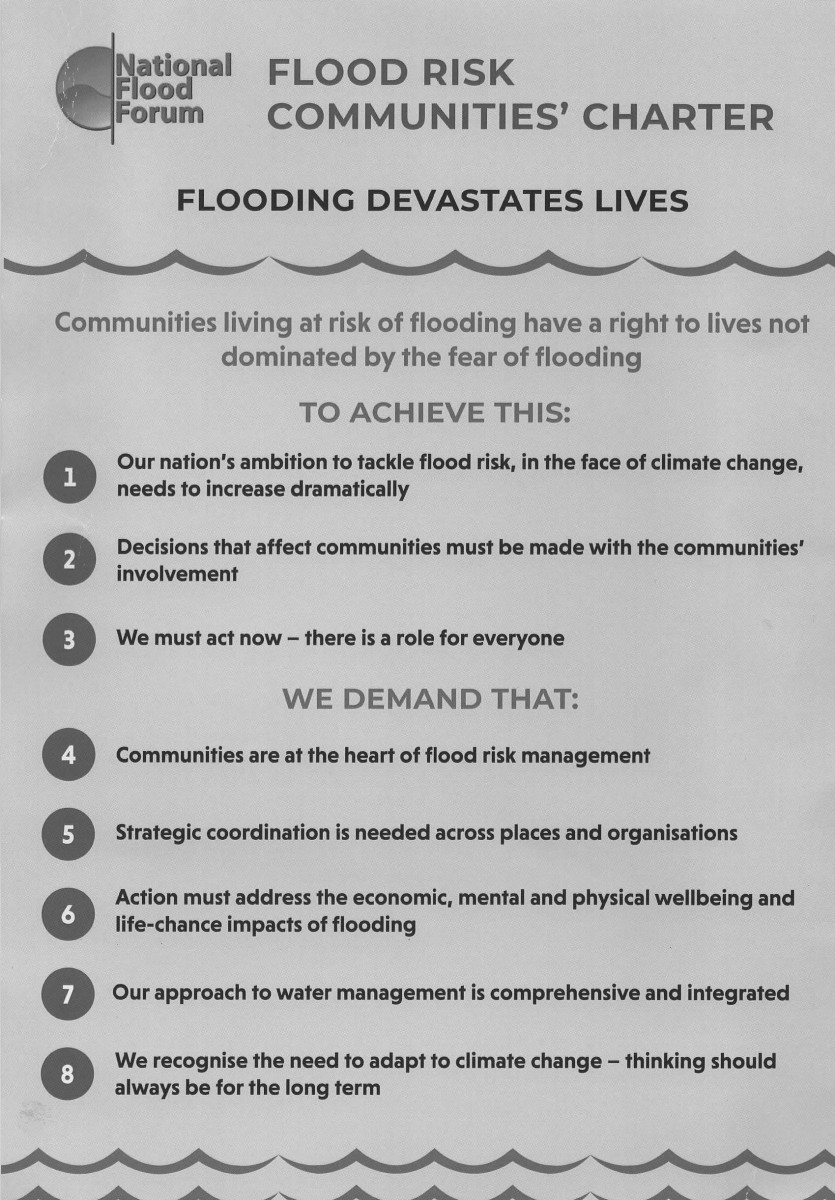
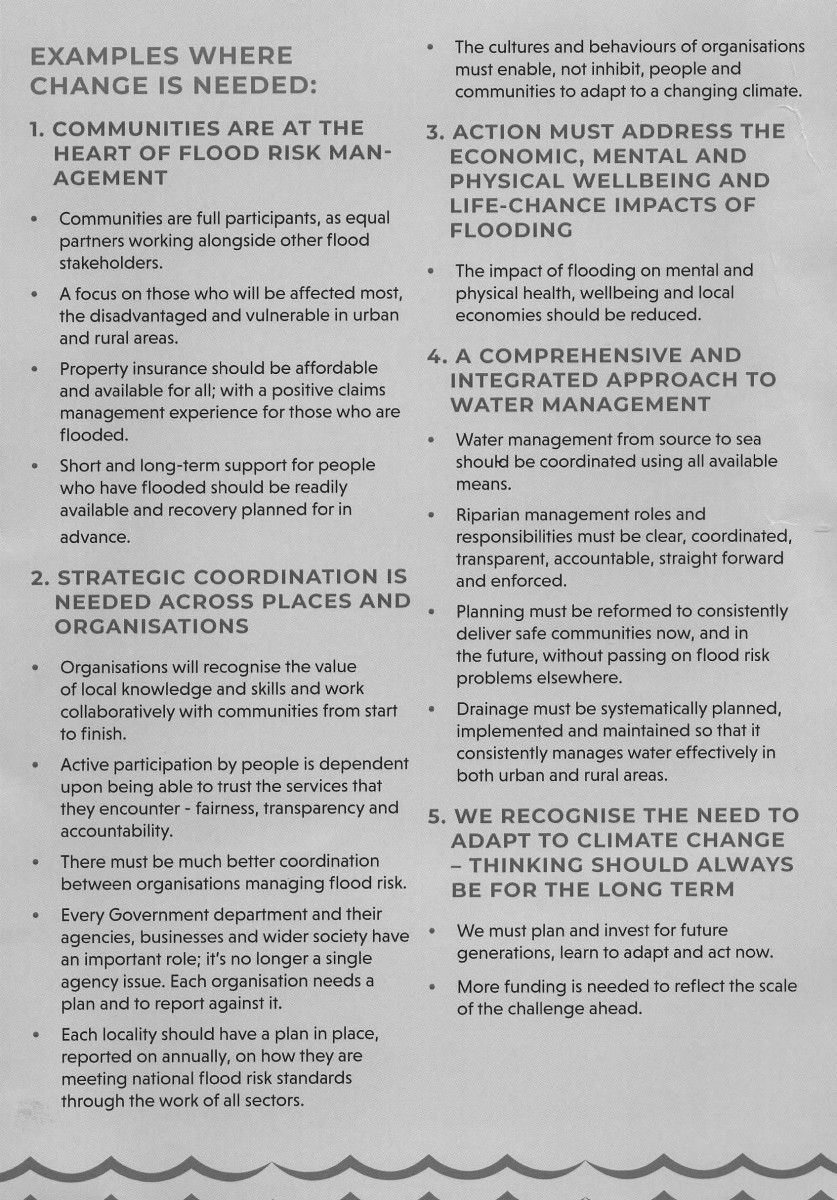
Diddlebury Parish Flood Action Group
Report on Flood Event of 26th October 2019
Diddlebury village
After several days of rain, the Diddle Brook (measured under the road bridge on the B4368) started to rise during the afternoon of Friday 25th. It exceeded the lower alarm level (0.3m) at 6.30 pm. The level continued to rise overnight, crossing the higher alarm level (0.8m) at 10.00 am on the 26th and peaked at about mid day on the 26th at just below 0.9m.
Water started to be forced out of the water course via a grip, between the road bridge and the foot bridge at the bottom of Mill Lane from about 10.30 onwards. The minor road outside Diddlebrook Barn was then flooded and this water eventually flowed round the end of Diddlebrook Barn and along the farm track towards the Malt House. It re entered the watercourse at the bend before the Malt House. The grounds of Delbury Hall below the Malt House were inundated.
Water started to overflow the banks of the brook in the garden of Glebe Farm at about 11.00 and this drained into the roadway causing flooding in Mill Lane at the bend by Glebe Cottage. The previous owners of Glebe Cottage (it has just changed hands) had had waterproof rendering applied to the front of the house and installed two flood gates. The flood level peaked about halfway up the rendering and did not reach the flood gates.
The two flood gates in the green way between Glebe Farm and Willowbrook worked well, allowing flood waters through and by today they had returned to their normal vertical configuration. Flood water did stand in the green way, covering the sump of the Severn Trent owned sewage pumping station but not entering the control kiosk which is on a plinth. The sump cover is not watertight so flood water must have been pumped for a time. Flood water did not pass along the greenway to discharge into Mill Lane as has happened on previous occasions.
The recently jetted storm water pipe down Mill Lane worked well and there was no appreciable surface water flooding down the roadway despite there being a large run off from the Pinstones road which crossed over the B road to enter Mill Lane.
The highest level of flood water in this area was some 300mm lower than it had been in 2012. This is quite an accurate measurement as in 2012 it rose to the bottom of the Diddlebrook Barn air bricks whereas this time it peaked 300mm below that height.
The flood water was dotted with woody debris as well as sleepers etc from ornamental bridges laid across the brook in the gardens of properties fronting Mill Lane and through whose rear gardens it flows. This makes one wonder if any damage occurred to the 50 leaky dams in the Diddle Brook upstream of the village.
Anecdotal evidence points to the event being substantially larger than that in 2018 and probably equivalent to the 2012 event. The 2007 event was probably even more severe.
It would be a useful exercise to correlate rain fall as measured in Gauges on Wenlock Edge with the flood event periods mentioned above (July 2007, July 2012, 30th May 2018 and 26th October 2019). This is very pertinent as if the 2012 rainfall was approximately equivalent to the recent event, then it seems likely that the leaky dams installed in the interim might have lowered the flood level in the village by 300mm. In fact this figure should probably be a little lower as the length of watercourse involved has been straightened since 2012 and it has been kept clear of weed growth, siltation etc. Even so, it would appear to be a significant reduction in flood level. This data correlation should also be of use to the team from Cardiff University.
The flood waters receded quickly after the peak as usually happens but by then, the damage has been caused.
Elsewhere in the Parish
The Pye Brook in Peaton came up but not quite far enough to flood adjacent properties. The road from Peaton to Diddlebury was flooded on the Peaton side of the River Corve bridge and the river was running at the underside of the bridge deck.
In Middlehope, the situation was rather anomalous. Given that in May 2018 one house there was seriously flooded whereas there was no flooding in Diddlebury one would have expected, due to the flooding taking place in Diddlebury this time, for it to be worse than 2018 as no flood alleviation work has been carried out above Middlehope in the meantime. In fact the situation in Middlehope was not bad and no flooding of property occurred. It may be that the spatial distribution of the rainfall was such that tributaries entering the Diddle Brook below Middlehope carried more water this time. Supporting this theory is the fact that flooding in the vicinity of Preens Barns, between Middlehope and Burwood was as bad this year as it was in 2018. Other factors include preventative measures taken by the owner of the house that flooded in 2018 in the meantime and possibly the fact that farmland between Middlehope and Wetmore which was grassland in 2018 is now ploughed.
In Lower Corfton, Karray Cottage was flooded to a depth of some 75mm. The cottage lies at the low point of the (approximately north/south) lane leading down into Lower Corfton from the B4368 which then rises again towards Christmas Cross as a green lane. In addition, it sits alongside a stream running approximately west to east and which crosses the lane beside the Cottage. The riparian owner of this stream downstream of the Cottage cleared out her length last year and it ran freely. The problem here is that water gathers at the low point from all 4 directions. The stream passes beneath the lane in a culvert which is inadequate or blocked which means that all water gathering to the west of the low point has to pond to a sufficient height to cross over the lane and find its way into the stream below the low point. In so doing, it exceeds the height of the Cottage floor level leading to flooding. The Flood Action Group has been asking Highways Dept for nearly 3 years to investigate the local drainage and sort out this problem but nothing has happened resulting in the flooding of the Cottage. Mr Chris Jackson who used to work for Highways in the Craven Arms Depot carried all the necessary knowledge of Lower Corfton drainage in his head but sadly had to retire due to ill health. If it is possible to contact him and he is willing and able to help, he could be extremely useful.
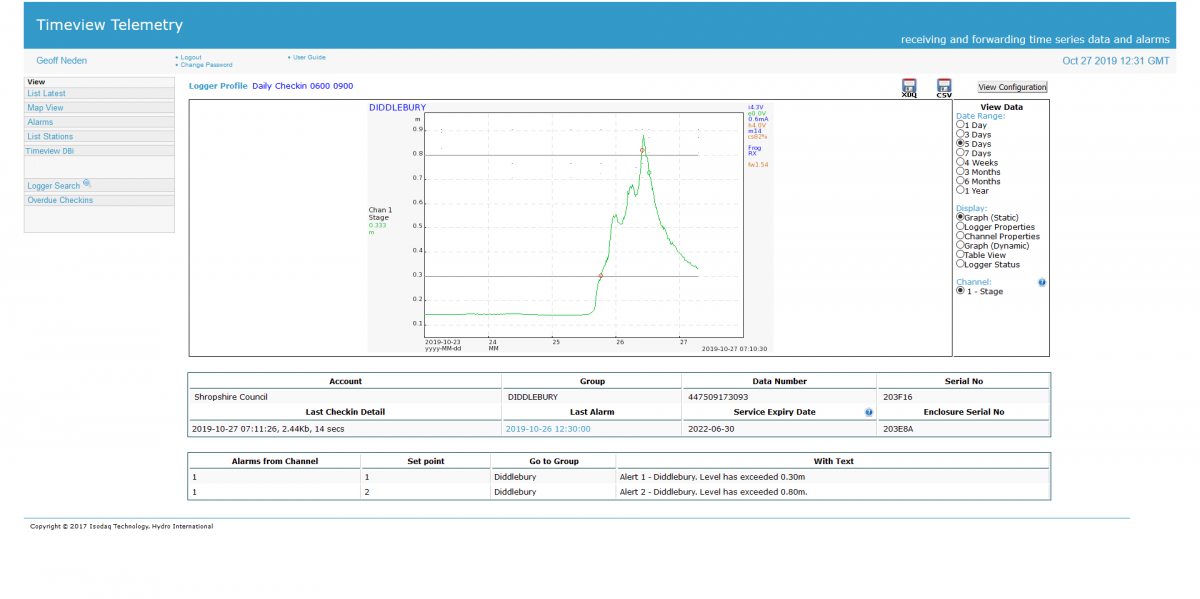
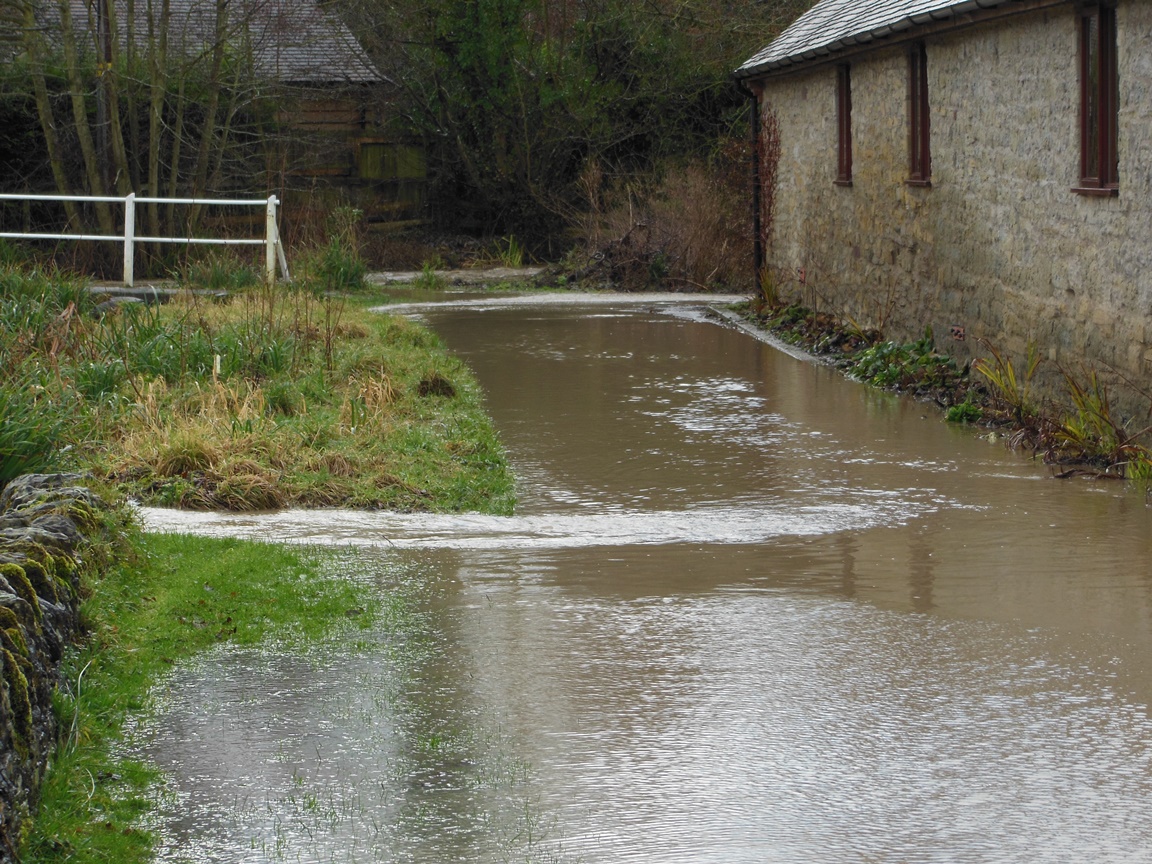
Graph from depth recorder under bridge Flooding along minor road alongside Diddlebrook Barn
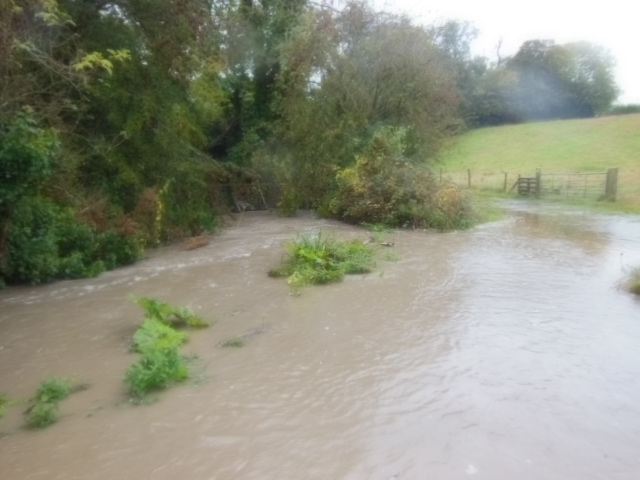
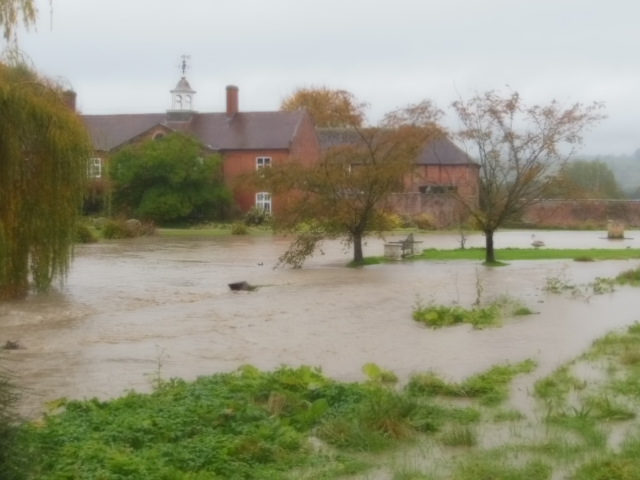
Farm track towards Malthouse Delbury Hall lawns
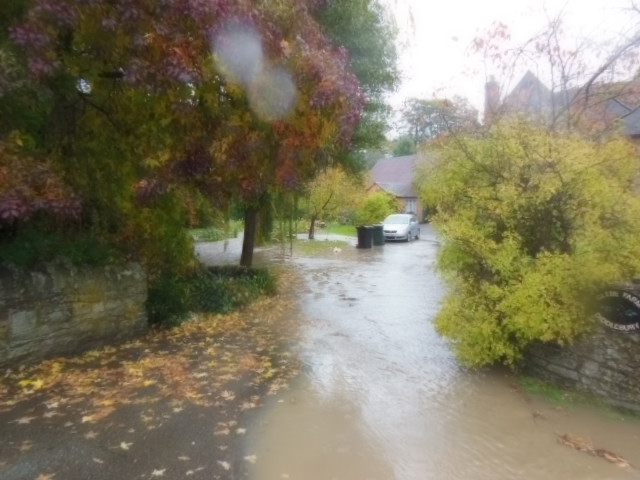
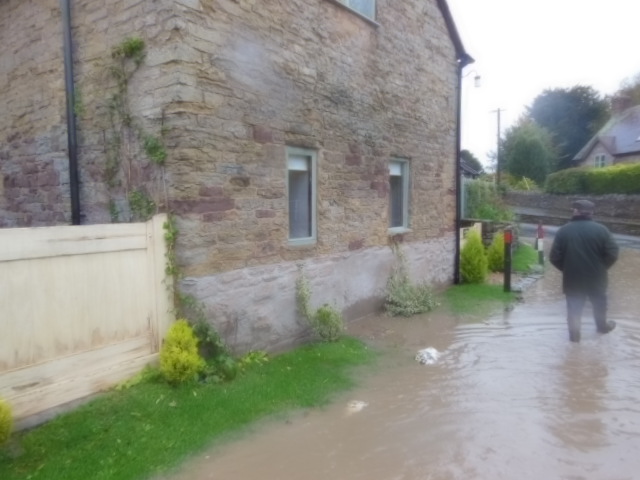
Flood water emerging from Glebe Farm garden Flood water in road beside Glebe Cottage
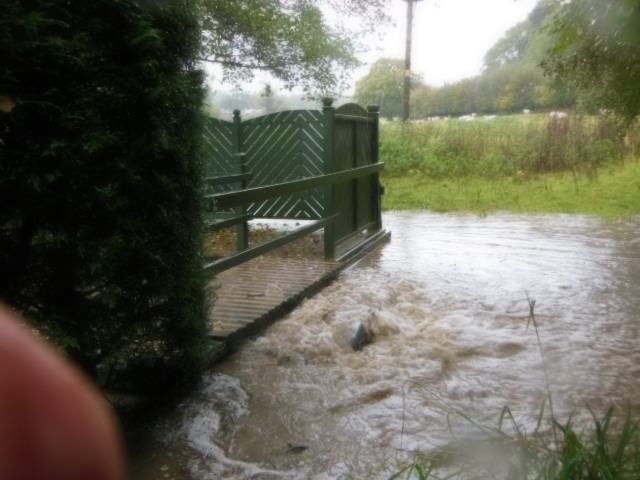
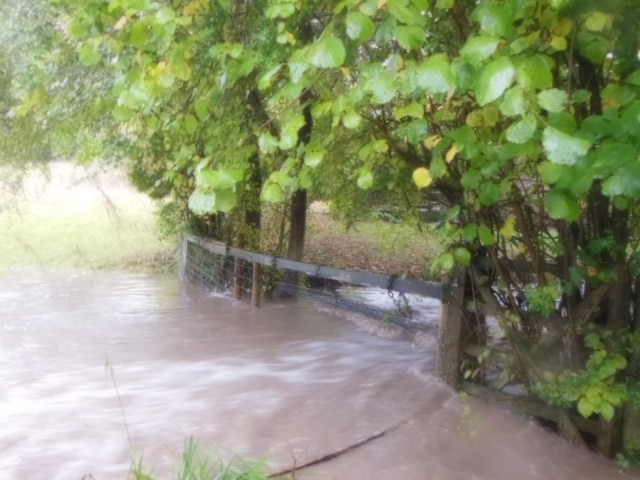
Flood gate by Willowbrook Flood gate by Glebe Farm
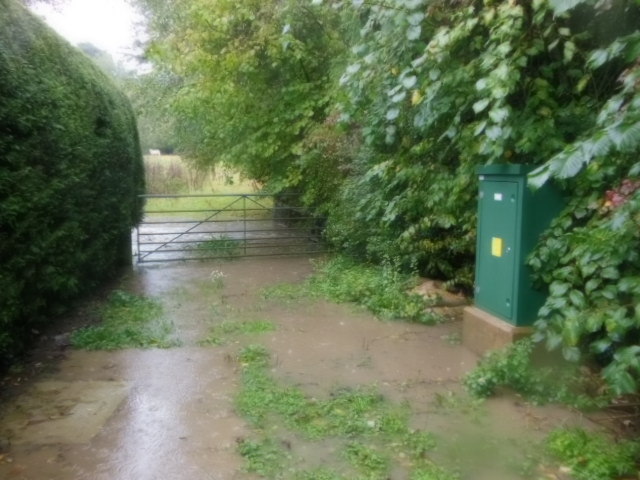
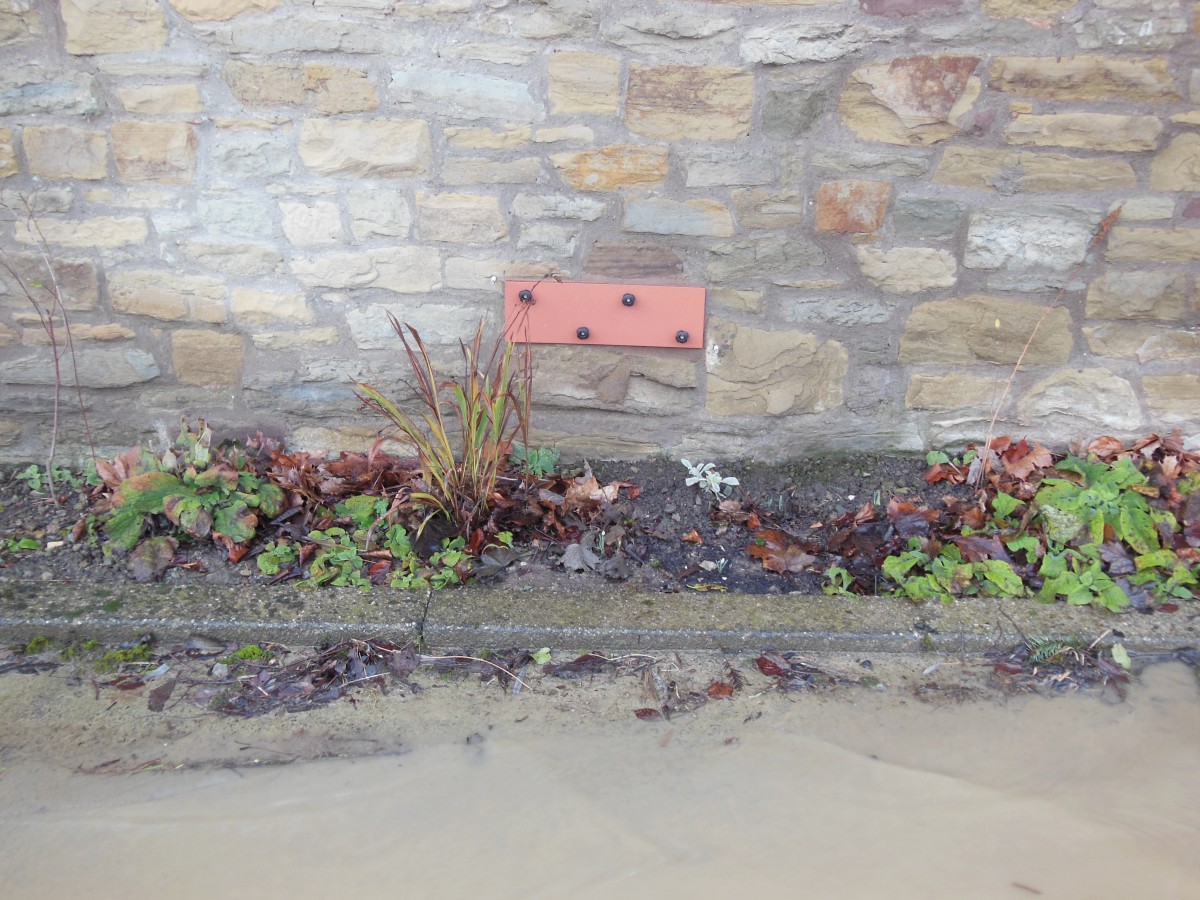
Sewage pumping station under water in green lane by Willowbrook Air brick at Diddlebrook Barn - about 300mm above road level
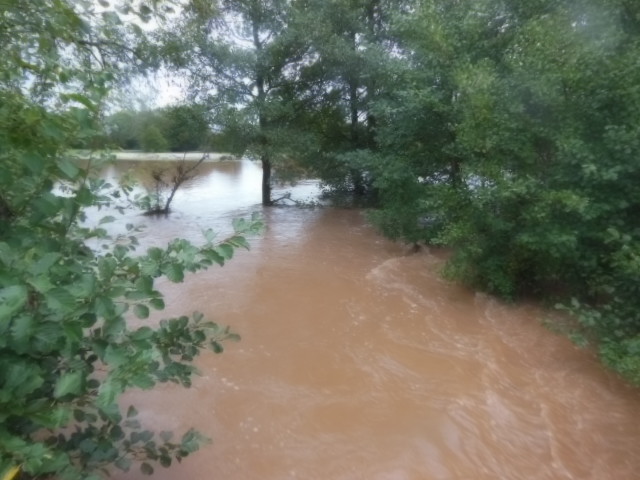
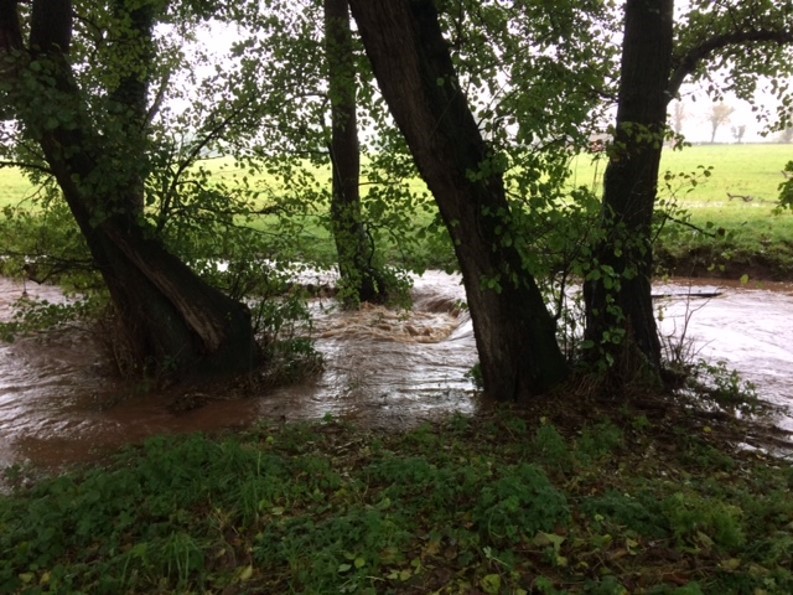
The River Corve below the bridge on the Diddlebury to Peaton Road Pye Brook in Peaton
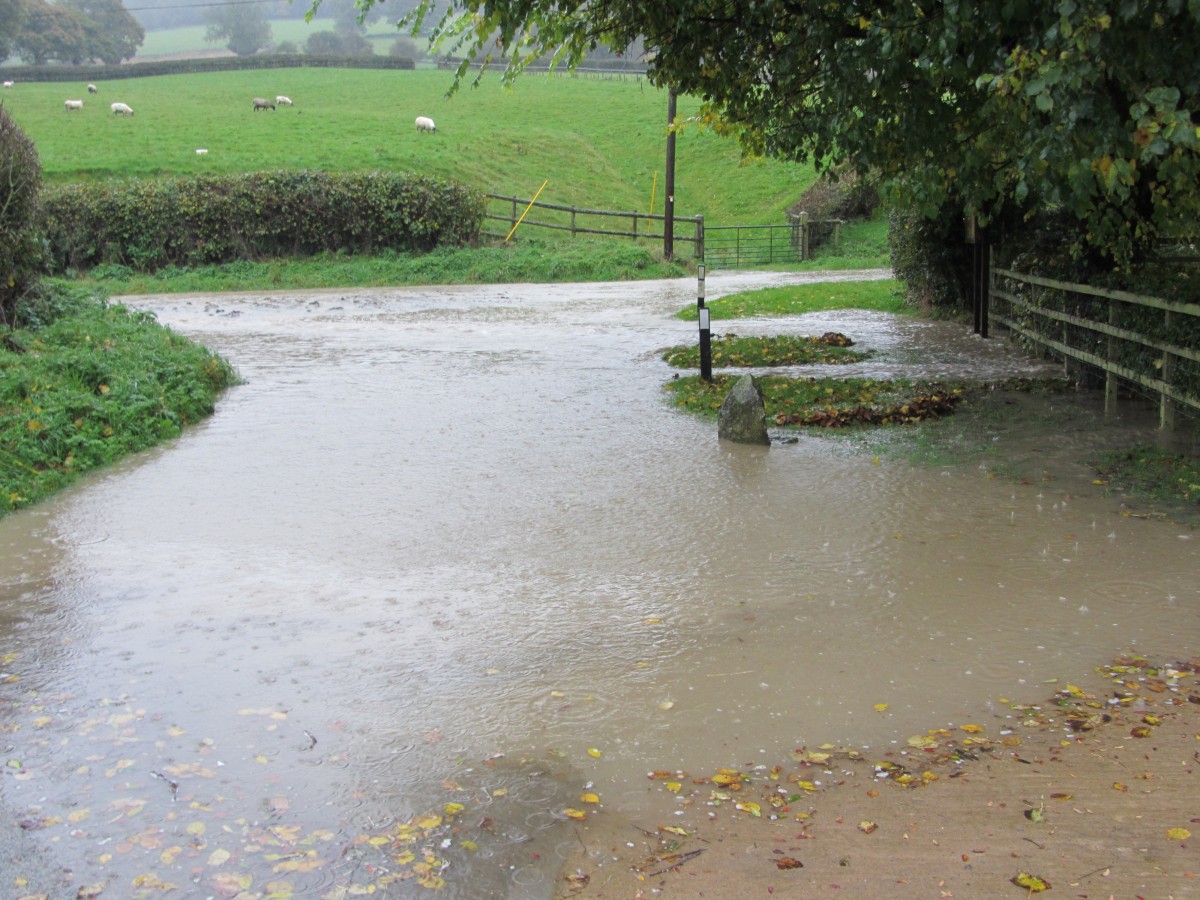
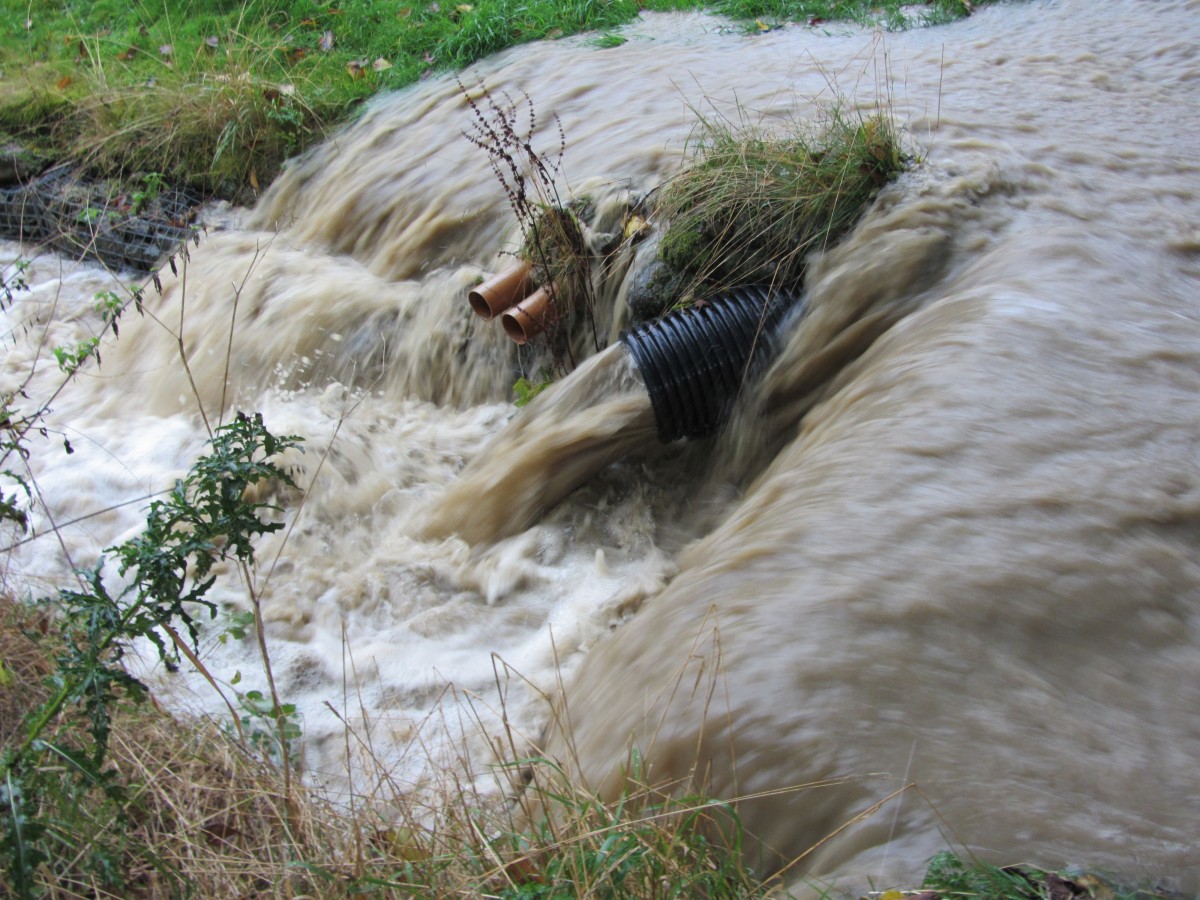
Flooding at Middlehope Flood water overtopping pipes in Middlehope
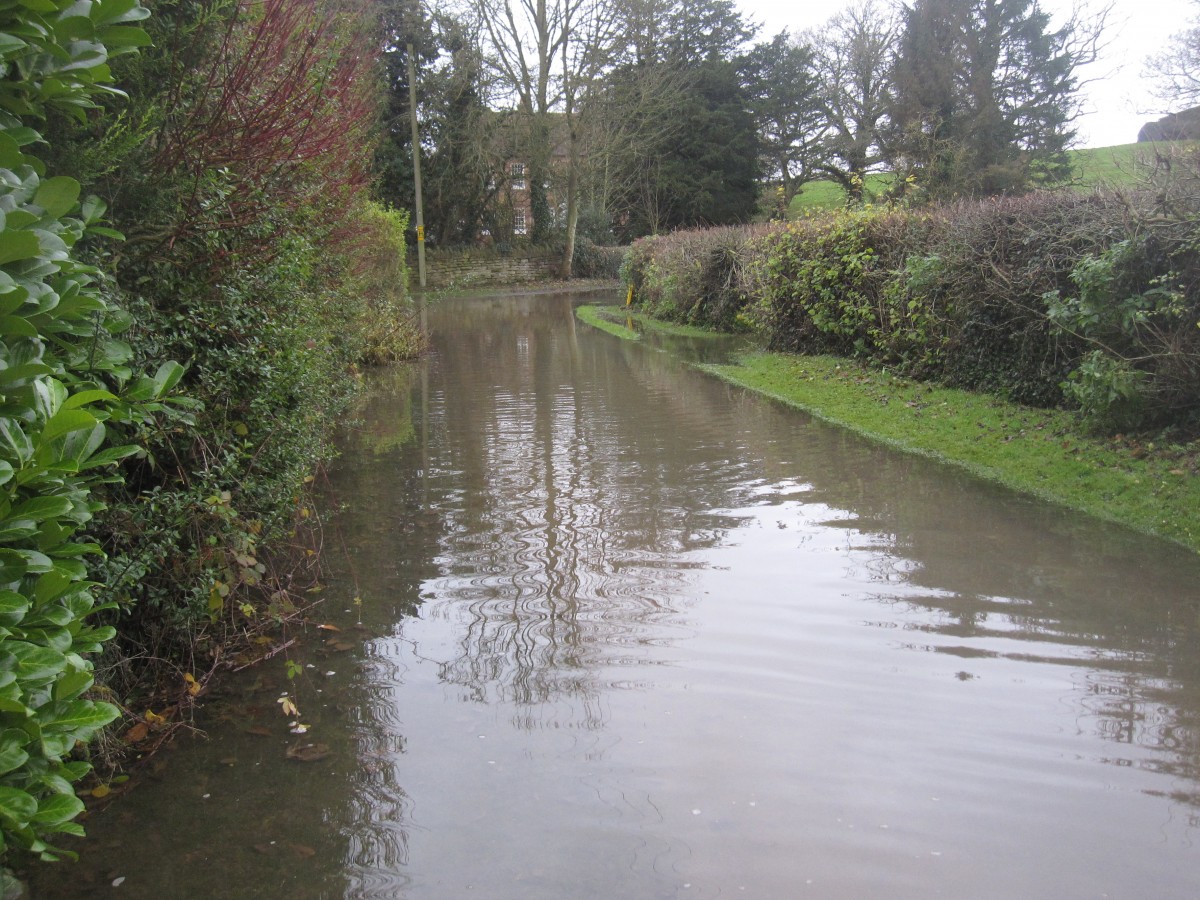
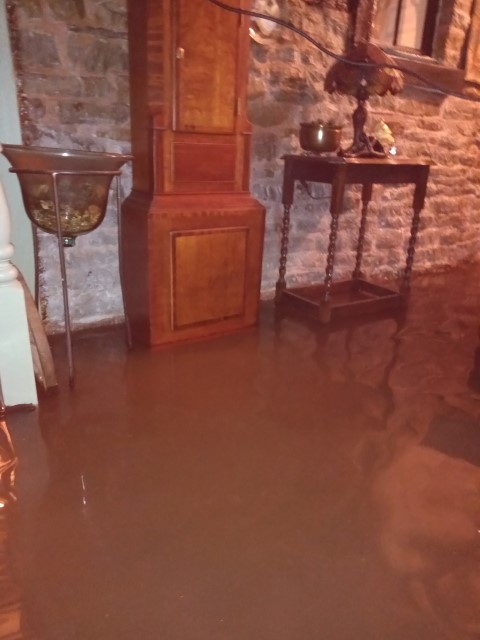
Flooding by Karray Cottage, Lower Corfton Flooding inside Karray Cottage
Geoff Neden
28th October 2019
Diddlebury Parish Flood Action Group
Diddlebury Parish Flood Action Group
Progress Report #14 October 2019
Since our last Progress Report, the FAG has held a Multi Agency Meeting (MAM). Members also attended the initial meeting held at Culmington, of the Corvedale Flood Forum – a grouping of all FAG’s in the Corvedale – arranged by the National Flood Forum (NFF).
The MAM was attended by John Bellis, the newly appointed Drainage and Flood Risk Manager for Shropshire Council. This post has been empty for 3 years which has led to increasingly poor service being received by groups such as ours. John – who used to work for Telford Council and who sits on the Steering Committee - is in my opinion just the right man for the job and I look forward to a far better response from the Council in the future when he has had a chance to catch up.
I attended a Steering Group Meeting this month at which the leader of the Cardiff University Project gave a detailed update of their work on monitoring the performance of the leaky dams in the Corvedale. An Information Sheet describing their work has been prepared and will be circulated shortly. Future funding from DEFRA for NFM (Natural Flood Management) flood prevention works depends on a successful outcome from this work.
Last month we held a Working Group which cleared the Diddle Brook in the village of excess weed growth, silt etc and this has prepared it for the winter rains. Stephen Povall kindly removed the material we excavated from the stream. Recently there have been sightings of a Kingfisher beside this stretch of the stream.
Shropshire Wildlife Trust (SWT) plan further work above Middlehope and at Heath. The project by the Small Woods Association to use coppice bundles to prevent soil erosion and nitrification of watercourses has commenced on land owned by Stephen Povall.
Luke from the SWT together with Stephen Povall the land owner have walked across his land in the Corfton catchment with a view to seeing if there are possibilities for managing the land in such a way as to further minimise run off.
We continue to push for better use to be made of CIL funds and also for future monitoring of SUDS schemes after their approval by the Council.
In November I will attend a Conference in London arranged by the NFF and Flood Re and which will be addressed by the Minister for Flooding. At this event, the NFF will be launching their Flood Risk Charter.
Geoff Neden
17th October 2019
Diddlebury Parish Flood Action Group
Diddlebury Parish Flood Action Group
Progress Report #13 - July 2019
Since the last Progress Report, the FAG has held two Meetings – one of which was a Multi Agency Meeting.
Following these Meetings, we wrote to Mr Philip Dunne – our MP- regarding poor attendance and lack of response from some Agencies – particularly Highways. We also expressed our concern over the Shropshire Council’s apparent hijacking of CIL monies. He has since responded saying that he is taking these matters up with the Council. We also wrote to Viscount Boyne regarding environmental concerns at Peaton and he too has responded.
The recent Meeting held in Diddlebury between local farmers and the NFU with the SWT in attendance threw up some interesting views which have been incorporated in plans for future NFM work in the Corvedale.
A design for improving the two floating flood fences across the Diddle Brook in the green way off Mill Lane has been made and agreed with the land owners. A tender for the work has been accepted and it should soon be completed.
The work funded by the Rotary Club of Ludlow has been completed.
The SWT has continued to erect more leaky dams in the Pye Brook catchment and is still looking at options above Middlehope.
Last month we held a Working Group which cleared the Diddle Brook in the village of excess weed growth, silt etc and this proved useful when we subsequently experienced heavy rains when the stream dealt with these high flows with no flooding.
A litter picking exercise on the Diddle Brook was carried out in early July and the amount of plastic waste found was far less than that collected last year. The growth of Himalayan Balsam was also much reduced from 2018.
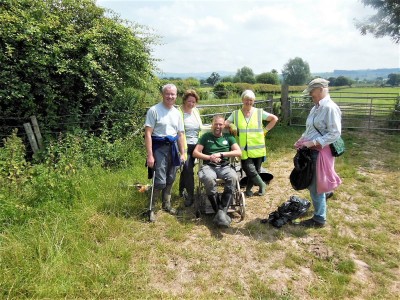
Luke relaxes in a scavenged wheel chair after a hard morning’s litter picking
I attended a Steering Group Meeting on July 10th at which it was confirmed that Mr John Bellis from Telford Council has been appointed as Drainage and Flood Risk Manager for Shropshire Council, starting in mid September. This is good news as in my view, John is just the right person for that job and in time, I think that we will receive an improved service from the Council.
Cardiff University continues its monitoring of the leaky dams in the Corvedale. An Information Sheet describing their work has been prepared and will be circulated shortly.
Geoff Neden
11th July
Diddlebury Parish Flood Action Group
Diddlebury Parish Flood Action Group
Report on work carried out using funds kindly provided by Ludlow Rotary Cares
Last year, Ludlow Rotary Cares awarded the FAG the sum of £300 to be used in building leaky dams in the Corvedale.
Initially we hoped to use this money in the area upstream of Middlehope but this proved to be impossible so with the approval of Rotary, we instead used it to build 3 leaky dams in tributaries of the Clee Brook (which becomes the Pye Brook) in the Cold Weston area of Clee Hill. In this work we were assisted by the Shropshire Wildlife Trust who managed the physical construction work on our behalf.
The dams have now been built and we have reported back to Ludlow Rotary Cares on the successful outcome.
Full details can be found in the attached Link : https://1drv.ms/f/s!Ail_2JCfvXY5gdAsDj17-GYUn6KzLQ
The images are also reproduced below.
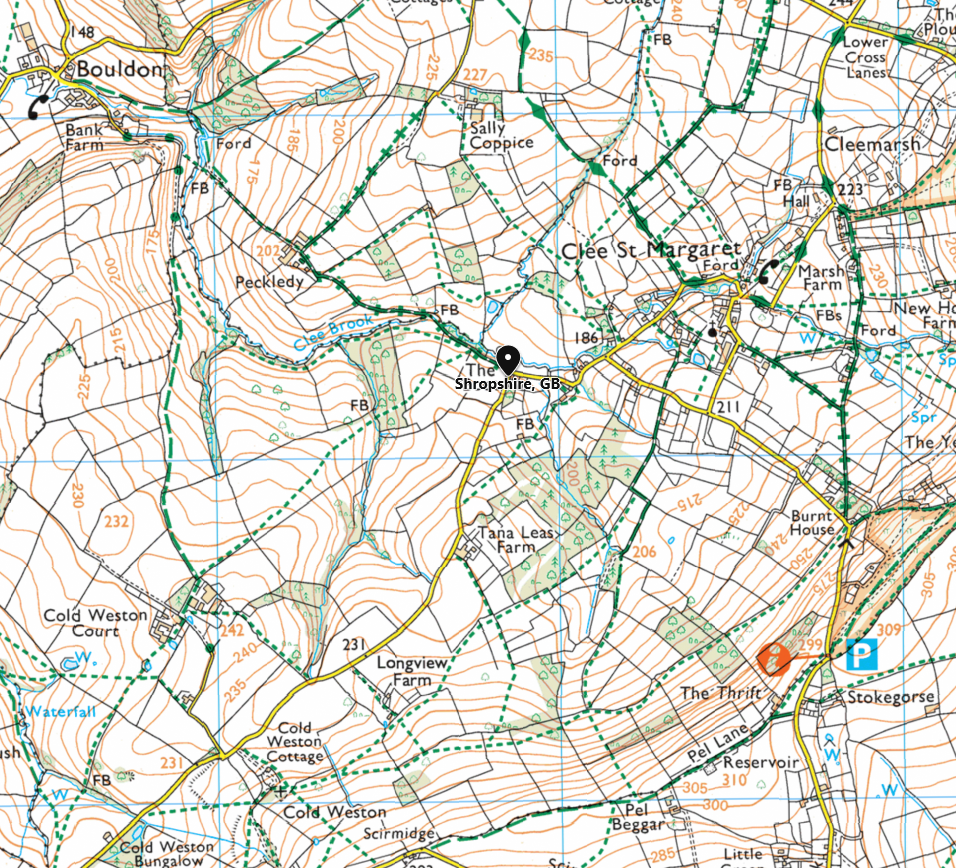
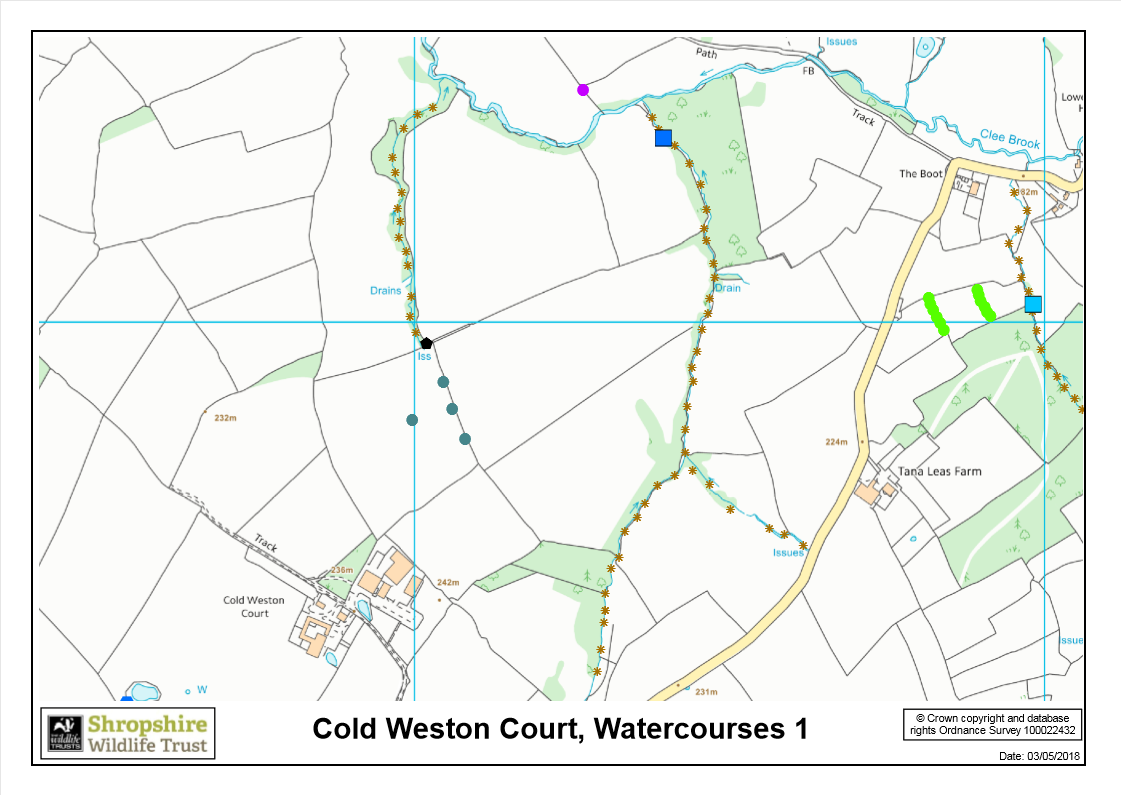
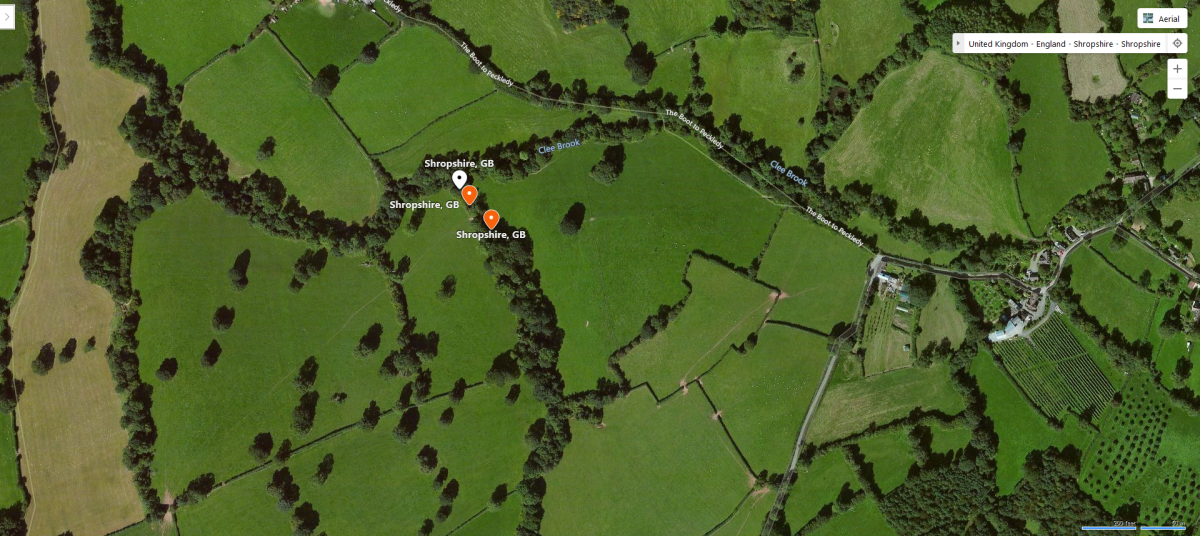
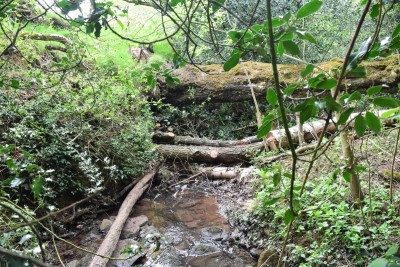
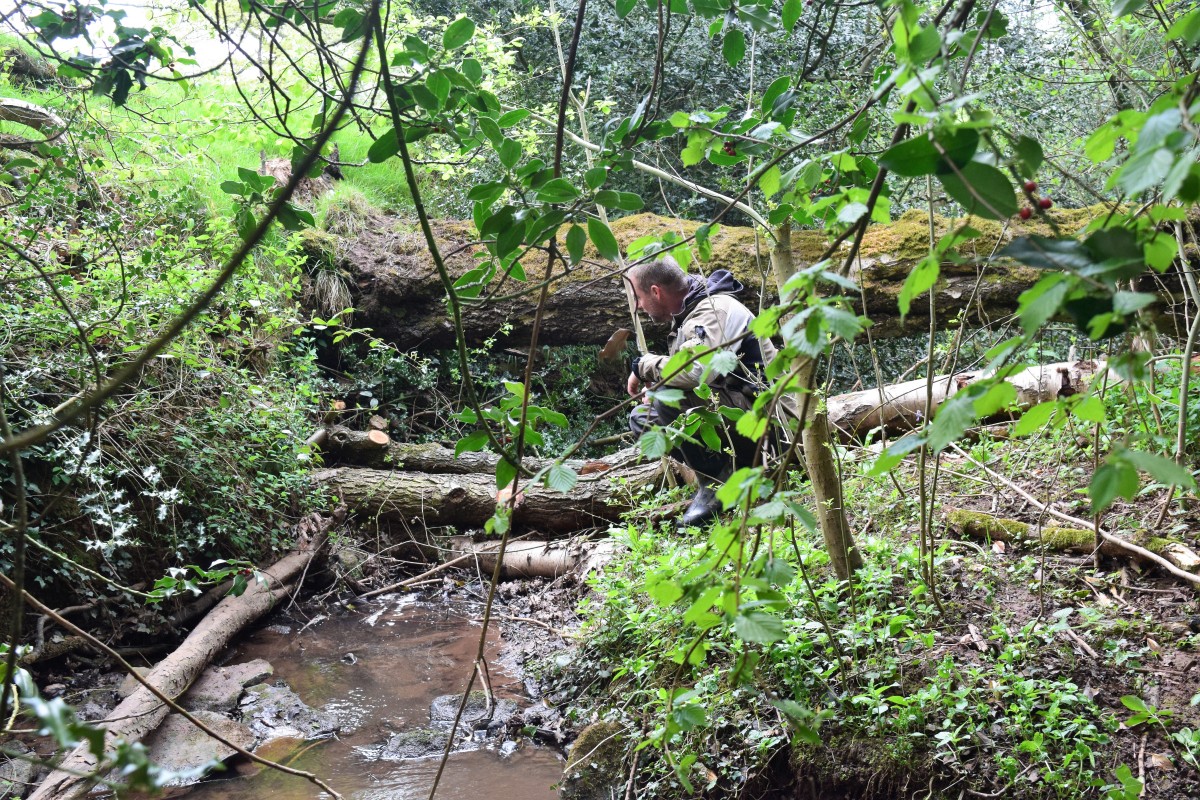

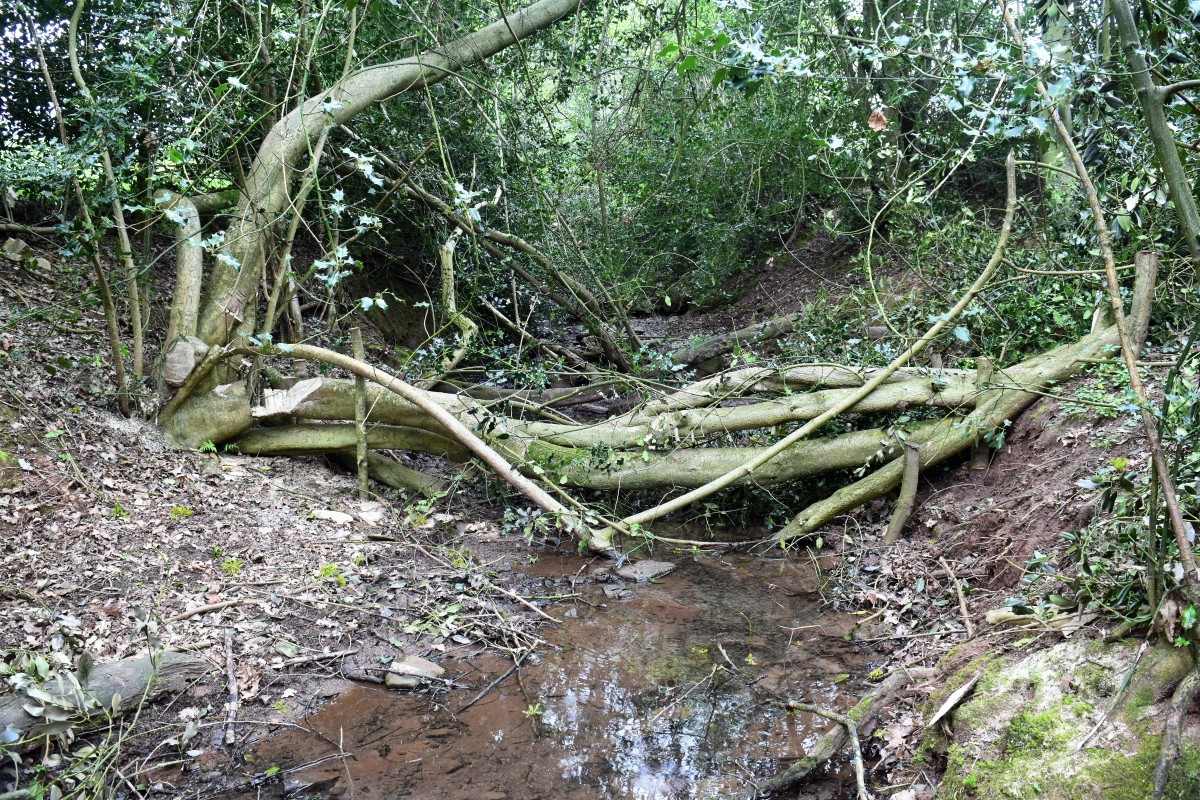
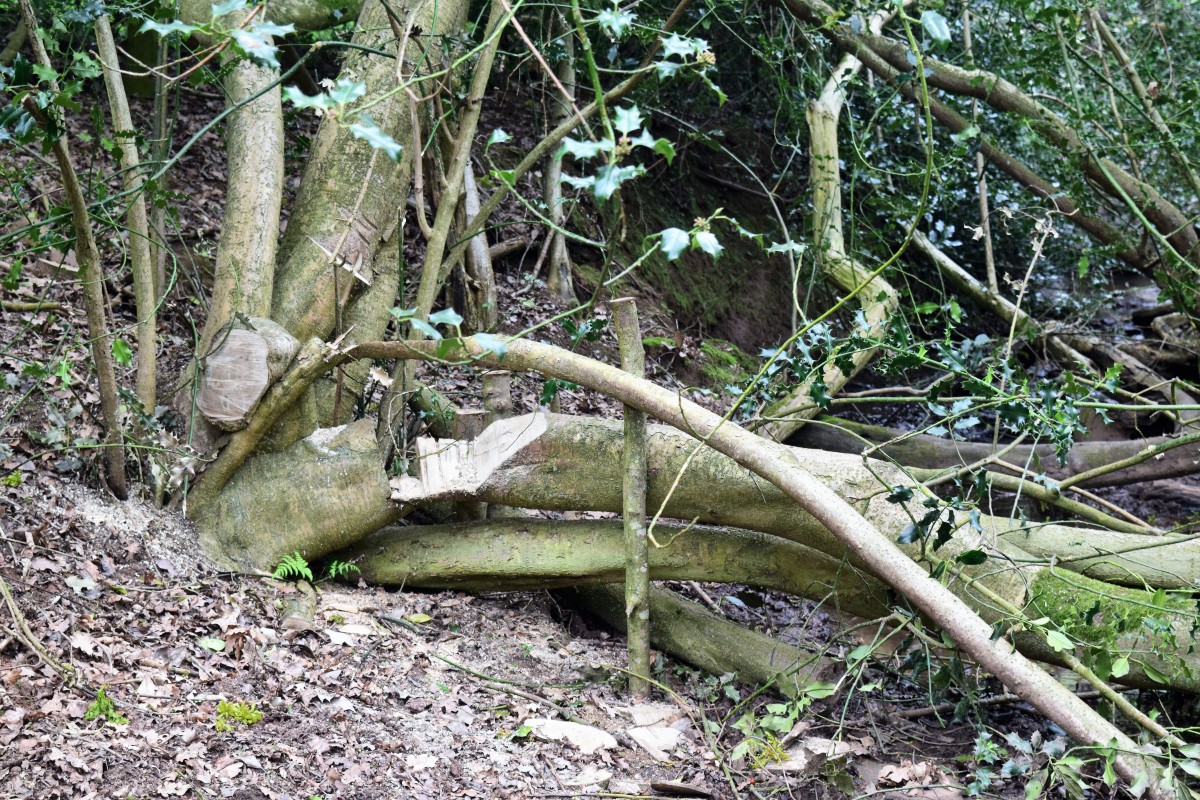
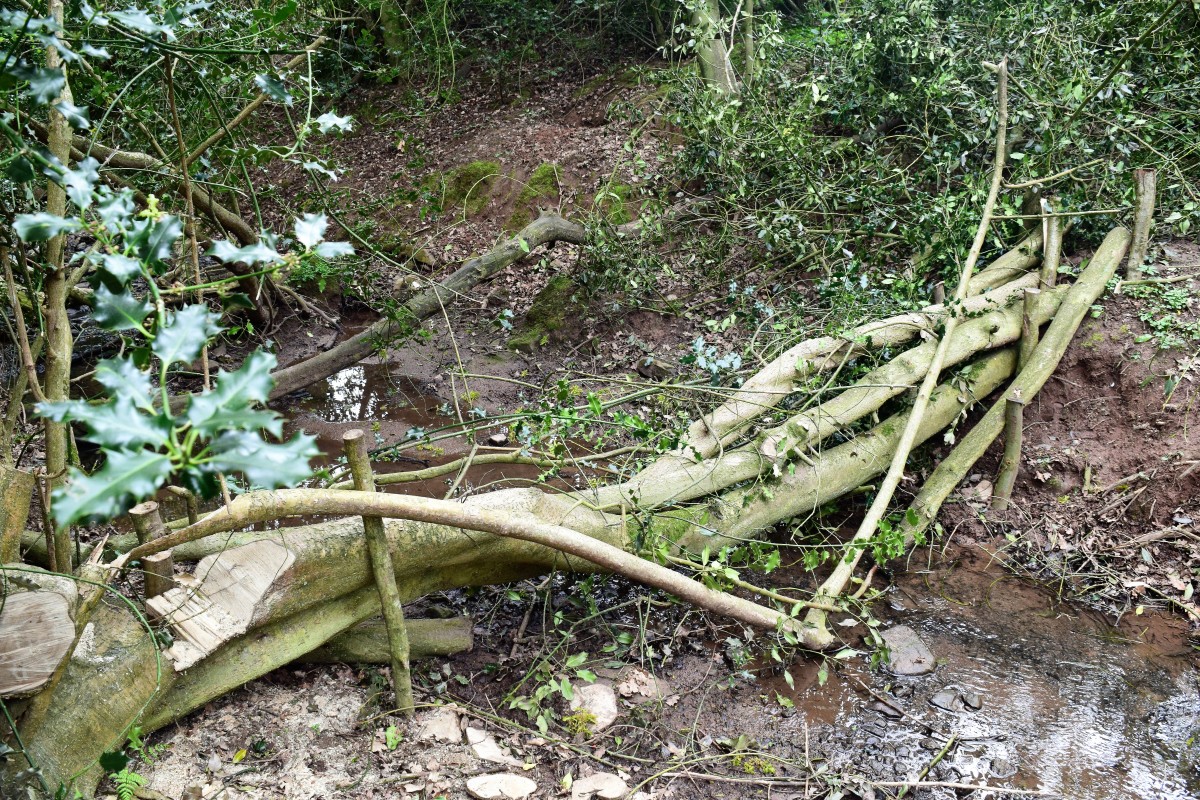
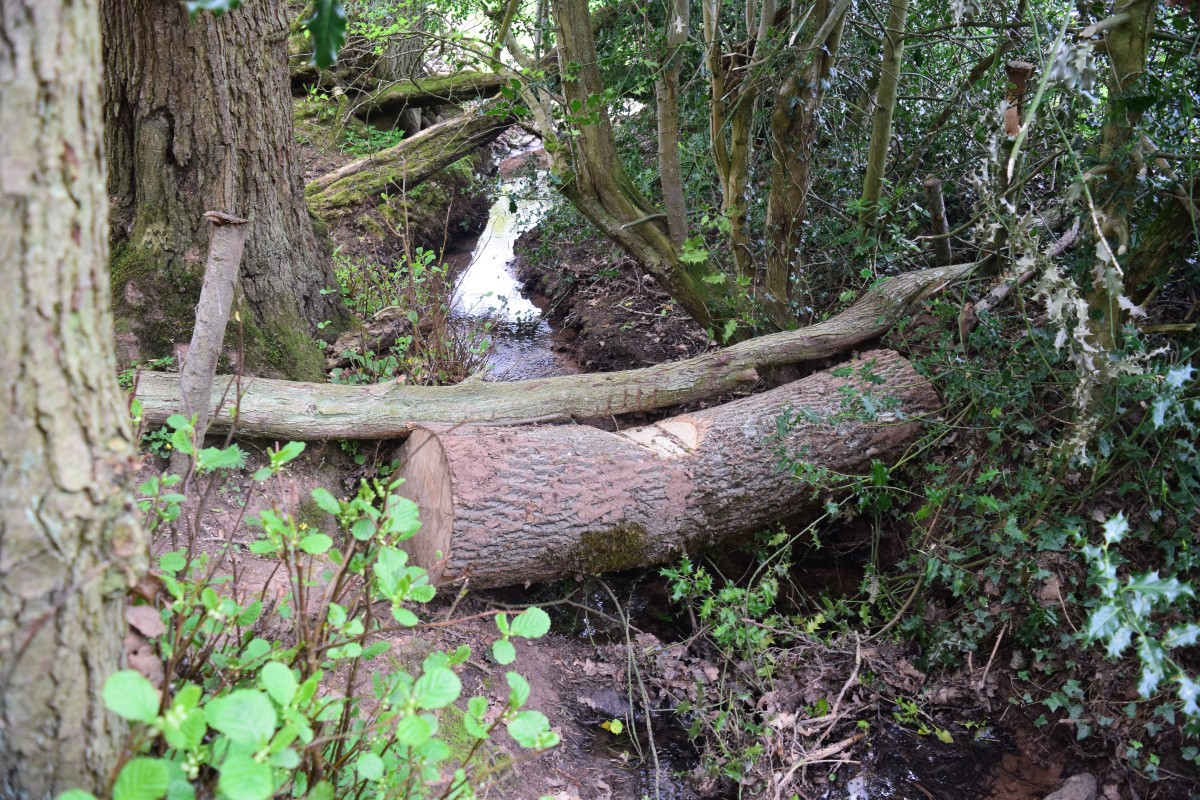
Geoff Neden
3rd May 2019
Diddlebury Parish Flood Action Group
Diddlebury Parish Flood Action Group
Progress report # 12 – April 2019
Since the last Report in November 2018, we have extended our membership by inviting Mr Stephen Povall to join our Group and Stephen has kindly accepted the invitation. This step was taken in order to include the views of the local farming community in our Group as they are the owners and managers of the catchments on which our rain falls and their actions have a significant effect on flooding downstream. Taking this further, we have also had discussions with the local NFU Office in the person of Sarah Faulkner. Sarah represents the farming community on the Shropshire Slow The Flow Steering Group. The NFU have discussed Natural Flood Management (NFM) with the Shropshire Council and Shropshire Wildlife Trust (SWT) for some years and aim to ensure that such proposals can be delivered within the framework of the farming business.
The NFU will be holding a Meeting in the Diddlebury Village Hall in May at which these topics will be aired with members of the local farming community.
Stephen has already kindly volunteered to allow the Small Woods Association (based in Ironbridge) and working with Birmingham University and Earthwatch to undertake a research project to investigate the value of coppice bundles (river faggots) for the prevention of soil erosion and nitrification of water courses, on his land.
A proposed tree planting exercise arranged with the SWT in Lower Corfton had to be cancelled recently due to problems with obtaining the tree whips but we hope to proceed with this later in the year.
The work we had planned to do above Middlehope using the funds provided by Ludlow Rotary Club has had to be abandoned due to a lack of cooperation from the land owner. We hope to do alternative work there later in the year but in the meantime, Rotary have agreed that we can use the funds to do similar work elsewhere in the Corvedale – probably near Cold Weston.
Due to persistence on the part of one of our supporters, the Council have finally unblocked the storm drain below Delbury Farm entrance in Mill Lane, Diddlebury.
Geoff Neden
5th April 2019
Diddlebury Parish Flood Action Group
Diddlebury Parish Flood Action Group
One of our members, Andy Kirk attended a Conference held in Birmingham last November. It was sponsored by the National Flood Forum and entitled "Let's talk about flooding".
Andy has kindly produced a resume of the Conference and it is set out below.
The National Flood Forum
The NFF is a charity established to help, support, and represent people at risk of flooding in England and Wales. Diddlebury Parish Flood Action Group (FAG), as one of 300 flood action groups affiliated to the NFF, was invited to be represented at a conference in Birmingham last November, entitled: “Let’s Talk About Flooding”.
This was just one of a series of events held across England and Wales with the intention of bringing people, not just flood action groups, together to talk about flooding, and share successes, issues, and concerns in all areas, and to identify what progress has been made and what the priorities are for the future.
The event was supported by Flood Re, the joint Government and insurance industry initiative established to provide affordable insurance for qualifying properties at risk of flooding, or those that have already been flooded. The day was hosted by Dr Anne Wheeler, NFF Trustee, and Paul Cobbing, NFF Chief Executive. In their introduction they advised us that the outcomes of all these events were to be collated and taken forward to a national conference to be held later in 2019. It is hoped that the Secretary of State for Environment, Food, and Rural Affairs will address this conference.
The event in Birmingham identified the key challenges, and briefly these comprised:
Behaviours maintaining awareness;
building relationships with communities;
‘joined-up’ thinking and action across all organisations involved in flood risk management.
Planning and improved control of planning and development;
development no building on flood plains;
stricter building control regulations;
future management of SUDS (Sustainable Drainage Systems) installations.
Catchment and requires stricter legislation and guidance on managing water;
land management engaging with landowners in a non-confrontational way.
National Flood independent voice for those at flood risk;
Forum roles advise on property resilience and resistance;
take voice to Parliament;
lobby Government for funding;
website to allow groups to share stories and raise questions online;
act as one-stop shop representing all related agencies;
create database of NFM (Natural Flood Management) projects;
link flood action groups across rural/urban areas;
keep flooding in the public eye;
create a ‘toolkit’ for flood action groups.
Policies at Agriculture Act, 2018 – add to list of national issues;
national level climate change – flood risk in the future;
planning for the future – dealing with Government-level contradictions;
development – not enough overall planning and a lack of control. Need to tackle
power of developers;
improved Building Regulations and making houses resilient should become a national standard.
Riparian no enforcement of riparian responsibilities is a historical problem – the statutory system
management needs to change to enable enforcement;
standardised riparian responsibilities document should be provided to all new householders where a riparian responsibility exists (via solicitors?);
a new statutory basis for riparian management is needed – new Land Drainage Act required to cover multiple riparian ownership and new arrangements
needed for urban areas.
Risk management Environment Agency, water companies, lead local flood authorities, Highways Agency -
authorities transparency of their respective responsibilities. A national standard is required;
Flood Action Groups should be involved and engaged from the outset of new flood management projects – the value of people in the community
needs to be recognised;
decisions concerning projects and interventions should be made for the long term rather than to meet a short-term objective.
Funding much more funding required for infrastructure improvements nationally;
‘invest to save’ projects need to be encouraged.
Flood Action Groups having flood risk management authorities’ representation appropriate to meetings is roles and activities important in progressing flood risk management;
grant aid required for FAGs to communicate with wider communities – attend meetings, conferences, etc;
managing change, maintaining continuity of FAGs and their members.
A session on individuals’, communities’, and parish councils’ actual flooding experiences followed, and discussions on successes and/or failures in early resolution of problems were debated.
Issues raised included communication – disjointed among stakeholders; insurance – insurers slow to respond and difficulties in accessing Flood Re; SUDS – responsibility for future inspection following initial installation; risk management authorities – difficulty of changing personnel in the various agencies who tend not to co-ordinate with each other.
Bob Haddon, Chairman of Shifnal Flood Partnership Group, established in January 2014, addressed the conference. With a large amount of new residential development, Shifnal now has much experience of all the flooding issues likely to be encountered, and he advised us accordingly. He welcomed queries from other FAGs and/or individual property owners – info@shifnalflood.org.
Paul Cobbing concluded the conference stating that now is the moment to make an impact; apart from the national conference (location and date to be advised in due course) there is also to be a funding review in 2019. With the NFF gaining an increasingly higher profile, there is the opportunity to engage directly with the water companies, the Environment Agency, the Highway Agencies, and other bodies associated with flood alleviation.
The NFF is encouraging anybody with an interest in or a worry about flooding to become a Friend of the NFF. It costs nothing, but the greater the number of Friends and supporters the more clout the NFF will have at central government level. Becoming a Friend provides access to regular bi-monthly online bulletins, and also available is a live feed 24/7 national flood warning facility which covers separate classifications of flood alerts, flood warnings, and severe flood warnings at relevant locations across the country.
Become a Friend of the NFF now – sign up at nationalfloodforum.org.uk.
Andy Kirk
18th January, 2019
Diddlebury Parish Flood Action Group
Following the recent wet weather, we took some images of the leaky dams installed in the watercourse below Wilderhope, just to the north of where the Longville Road turns off the B4368. We photographed these dams as they are more easily accessible from a Public Footpath than are those on the Diddle Brook but the same principle applies to all such installations.
As you will see from the images below, the dams are retaining substantial amounts of water - creating stilling ponds on their upstream sides. Each dam is different but some of them appeared to be holding back up to 500mm of water. Overall, they appear to be working well and Slowing the Flow downstream.
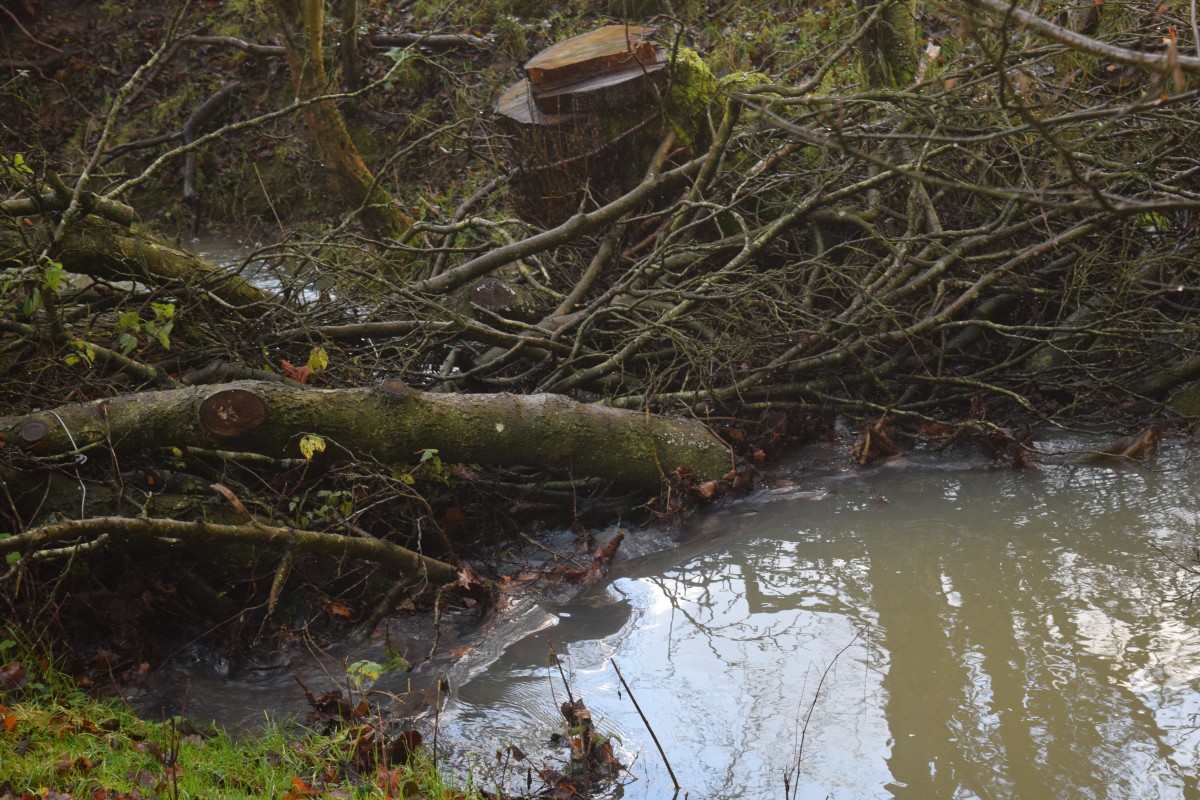
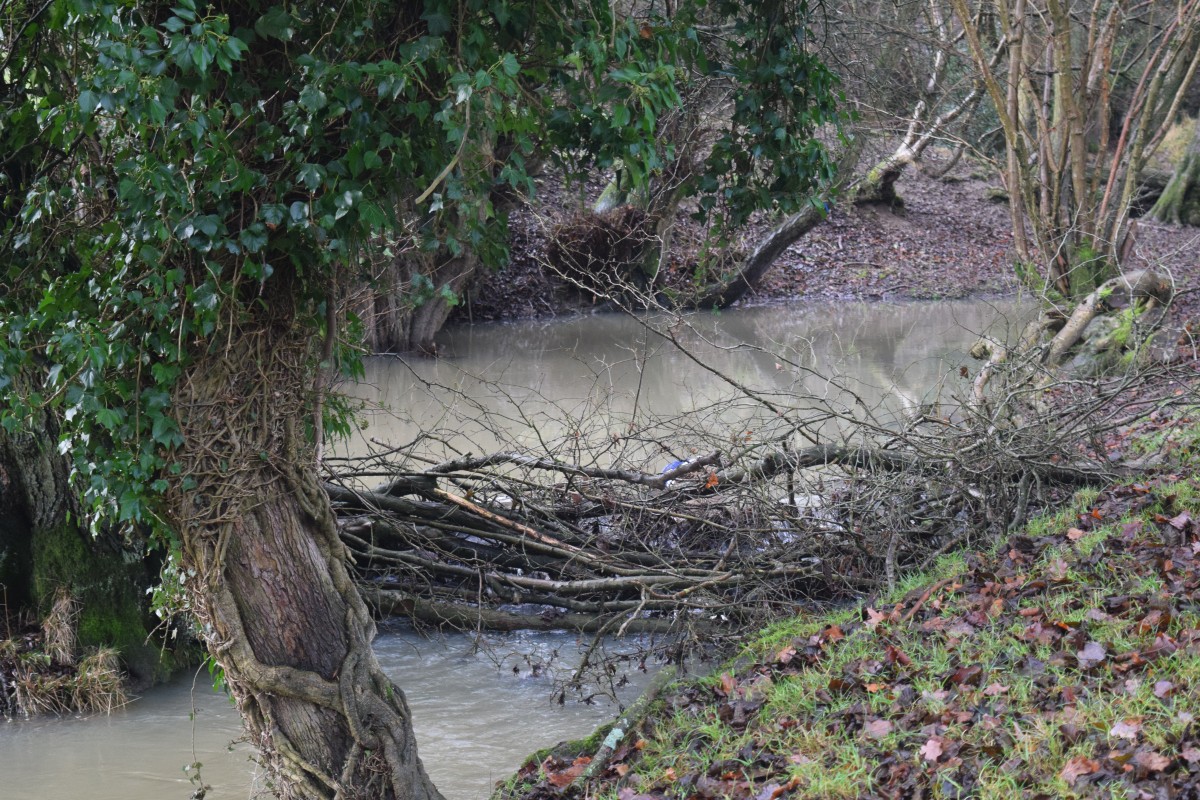
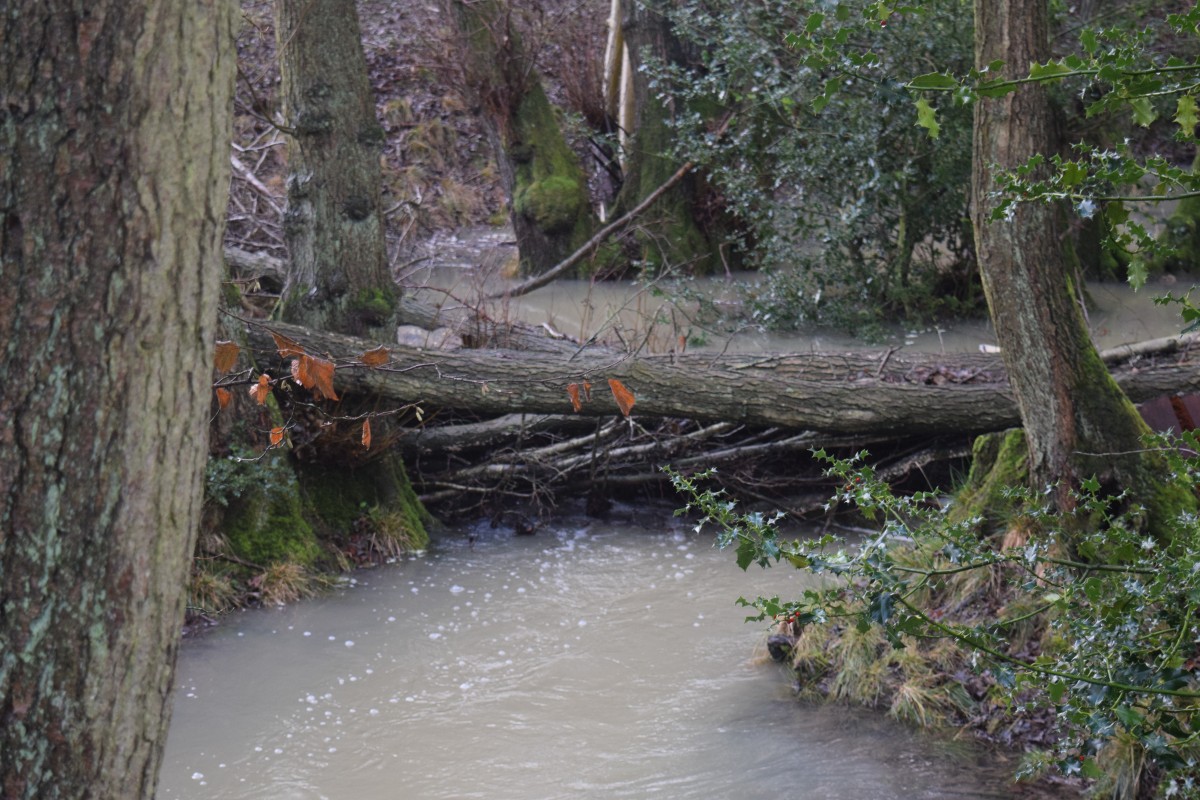
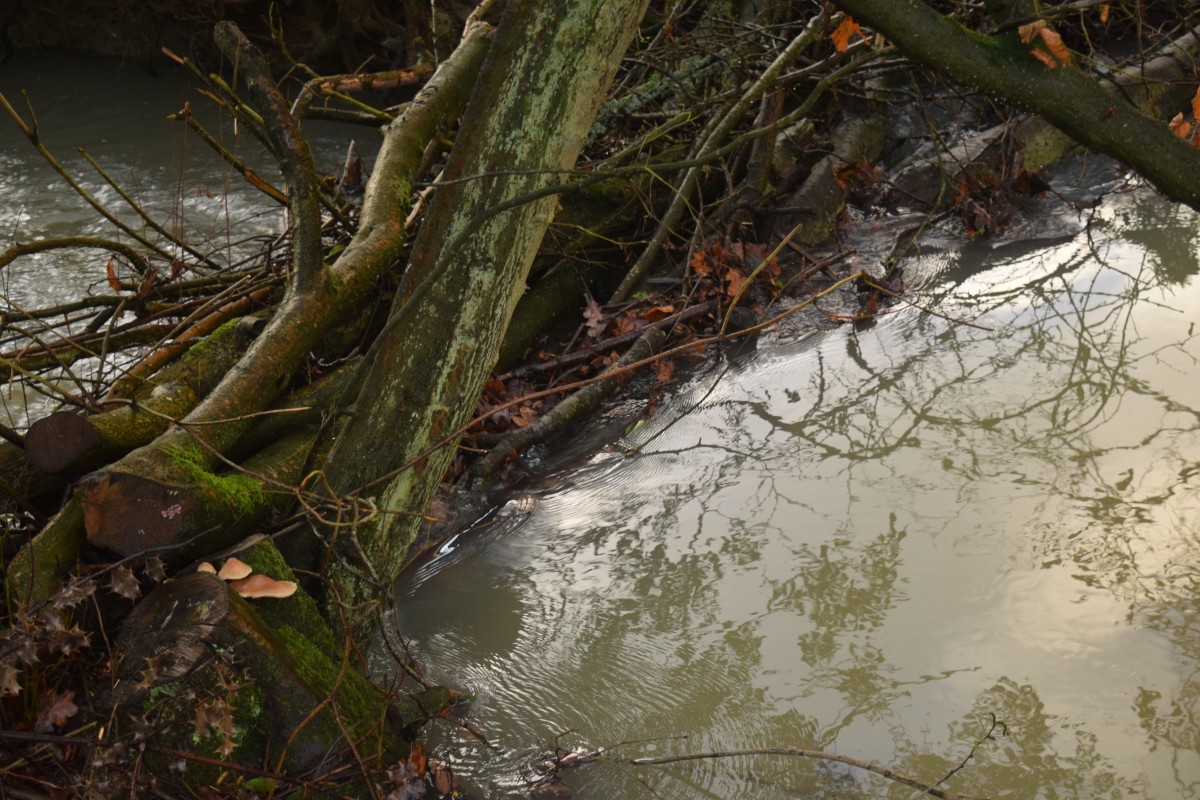
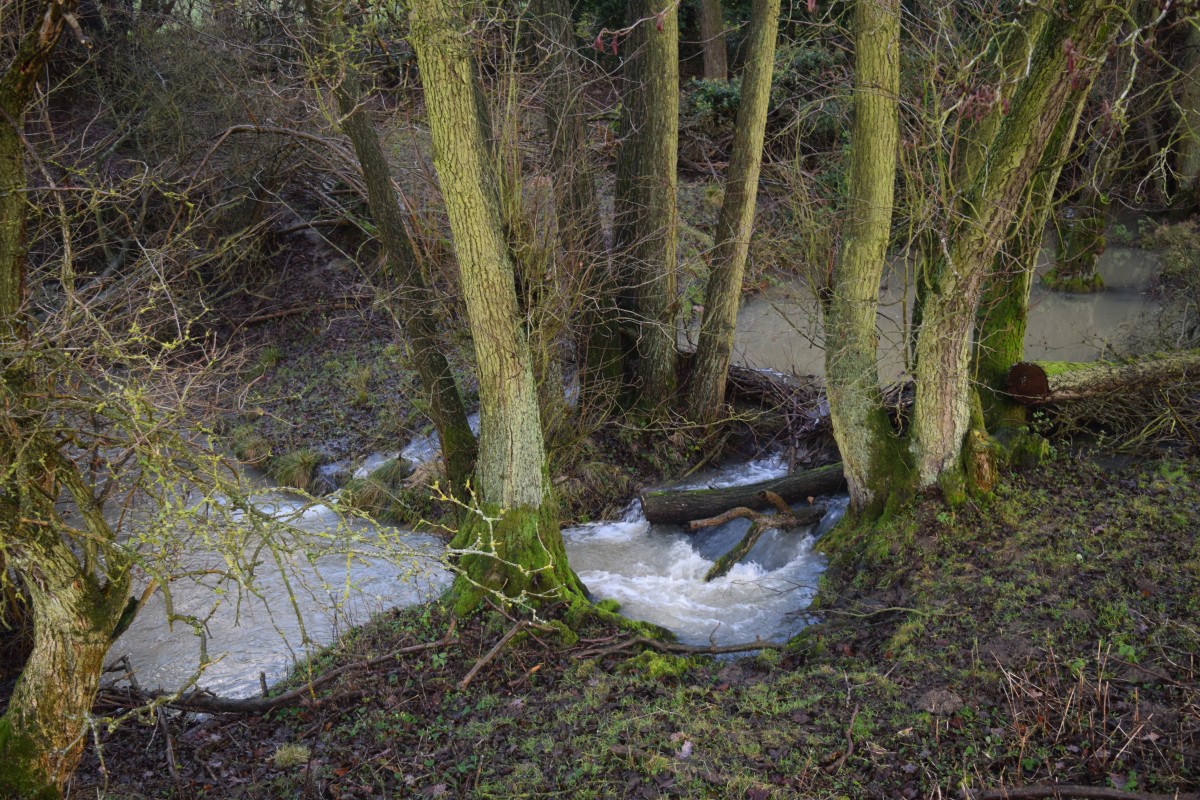
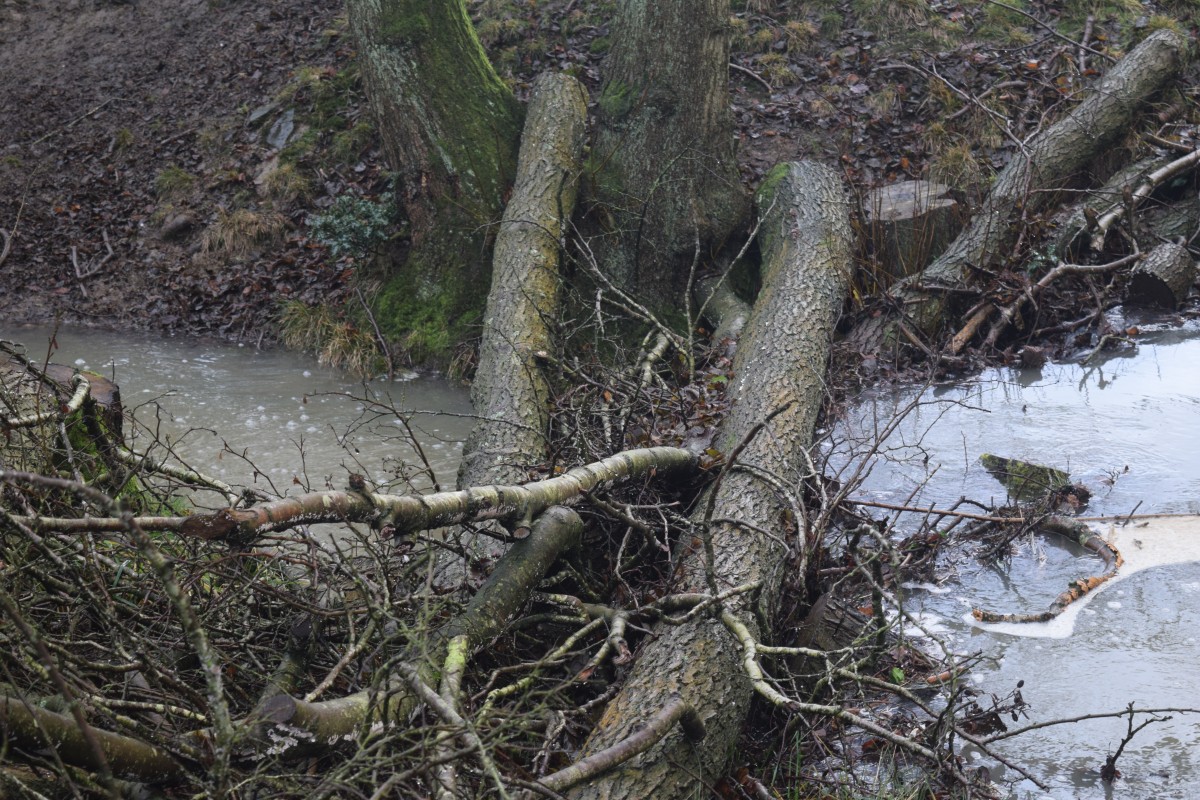
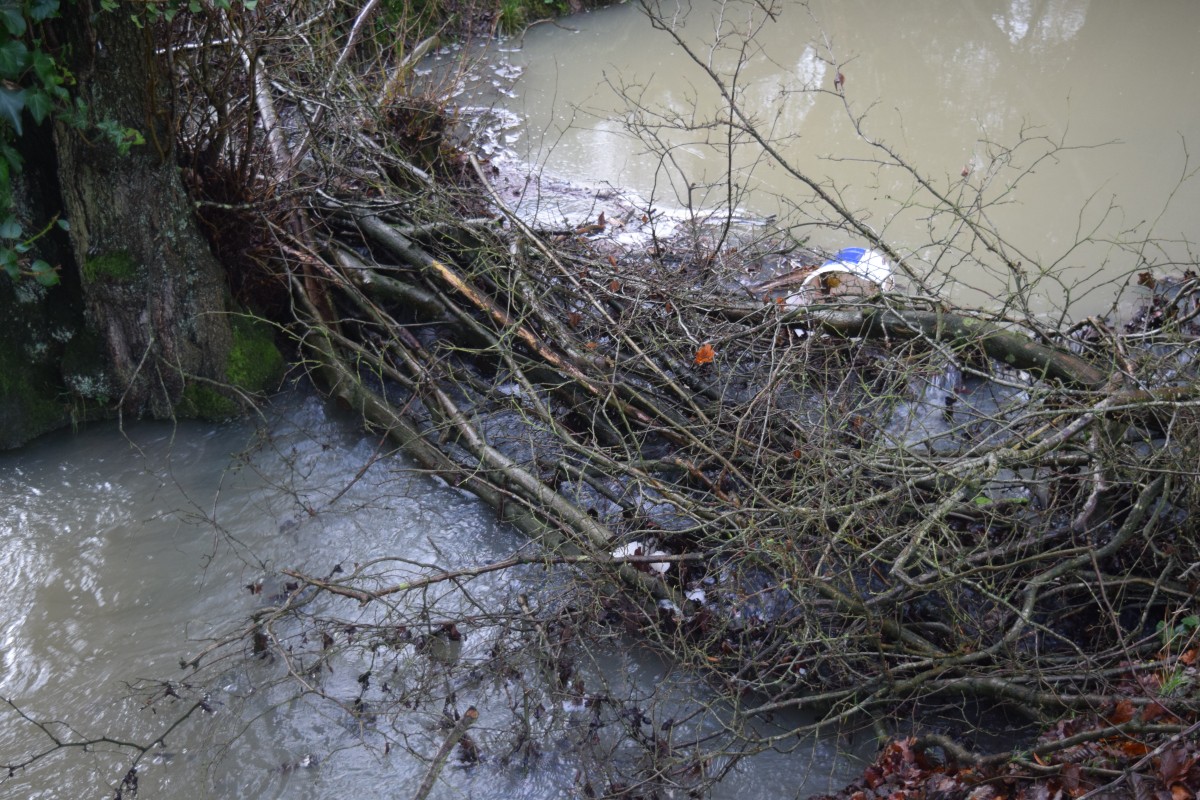
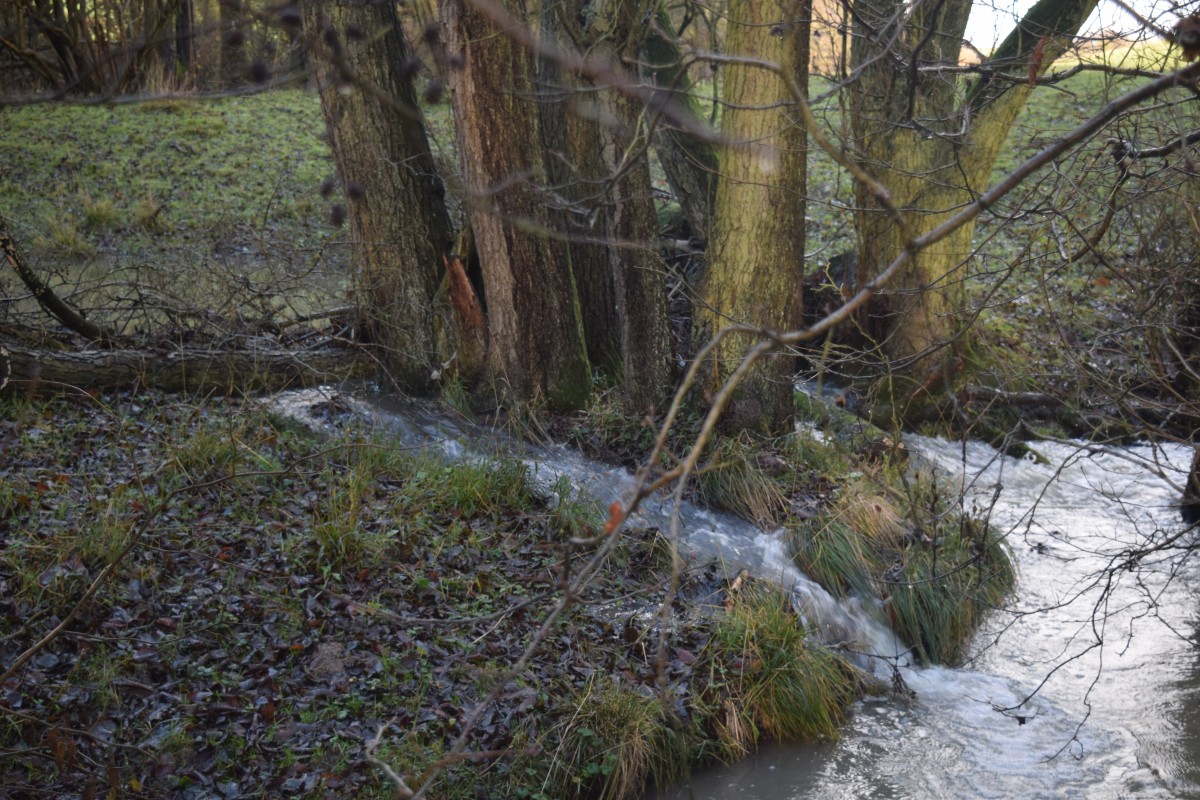
Geoff Neden
21st December 2018
Diddlebury Parish Flood Action Group
Diddlebury Parish Flood Action Group
New Environment Act
On behalf of the Diddlebury Parish Flood Action Group, a letter has been sent to our MP Mr Philip Dunne - requesting his support to the Bill for the new Act as follows:
10th December 2018
Dear Philip,
New Environment Act
The Diddlebury Parish Flood Action Group is grateful for your interest in and support for the ‘Slow the Flow’ project that throughout the Corvedale catchment area has been project managed on behalf of the Environment Agency by the Shropshire Wildlife Trust. We are particularly grateful for the site visits that you have made during 2018 and for your role in securing support from the Department for Environment, Food and Rural Affairs.
You may recall that the current project is dependent upon the goodwill of landowners and their voluntary agreement to any of the proposed flood alleviation work being undertaken upon their land.
The Corvedale project has shown that the vast majority of landowners are willing to cooperate with flood alleviation works that can provide significant benefits not only to the wider community but also to their own farming activities. Unfortunately, it has also shown that there is a small minority of landowners who are unwilling to countenance any of the proposed works being undertaken, regardless of the wider benefits. It is on this aspect that the Diddlebury Parish Flood Action Group is now seeking to make representations.
It is our understanding that the Secretary of State for Environment, Food and Rural Affairs has proposed that the principle that will underpin the proposed reforms under the new Environment Act should be “public money for public benefits”. We also understand that it is likely that the relevant Bill for this Act will come before Parliament shortly. Accordingly, the Diddlebury Flood Action Group believes that the Bill and/or the associated Regulations should contain an absolute requirement for landowners to co-operate with appropriate flood alleviation works being undertaken upon their land, if they wish to continue receiving a public subsidy.
Therefore, we should be grateful if you would be a Parliamentary advocate for this perspective.
In a wider context, we fully support the Aims of the Wildlife Trusts as set out in their Campaign for a Wilder Future (https://www.wildlifetrusts.org/get-involved/campaign/wilder-future) and hope that you will also provide your support to this and assist in the passing of a strong new Environment Act.
Your sincerely
Geoff Neden
Chair
Diddlebury Parish Flood Action Group
Diddlebury Parish Flood Action Group
News from Corfton
Following a recent site meeting with Richard Cheal of Shropshire Council (SC) at one of the two lowest-lying locations in Lower Corfton, agreement was reached over a plan of action to reduce flood risk. The area in question has been flooded in the past, and it is now hoped that SC’s contractors will shortly carry out emptying of road gullies and rodding of associated highway drain runs in the affected area.
The eventual highway outfall runs into a brook which ultimately joins the River Corve. Mrs Harriet Horne of Corfton Manor has assisted in the alleviation of flood risk in this area by carrying out major clearance and de-silting of the brook to allow storm water to disperse as quickly as possible, thus further reducing risk of flooding to properties in Lower Corfton.

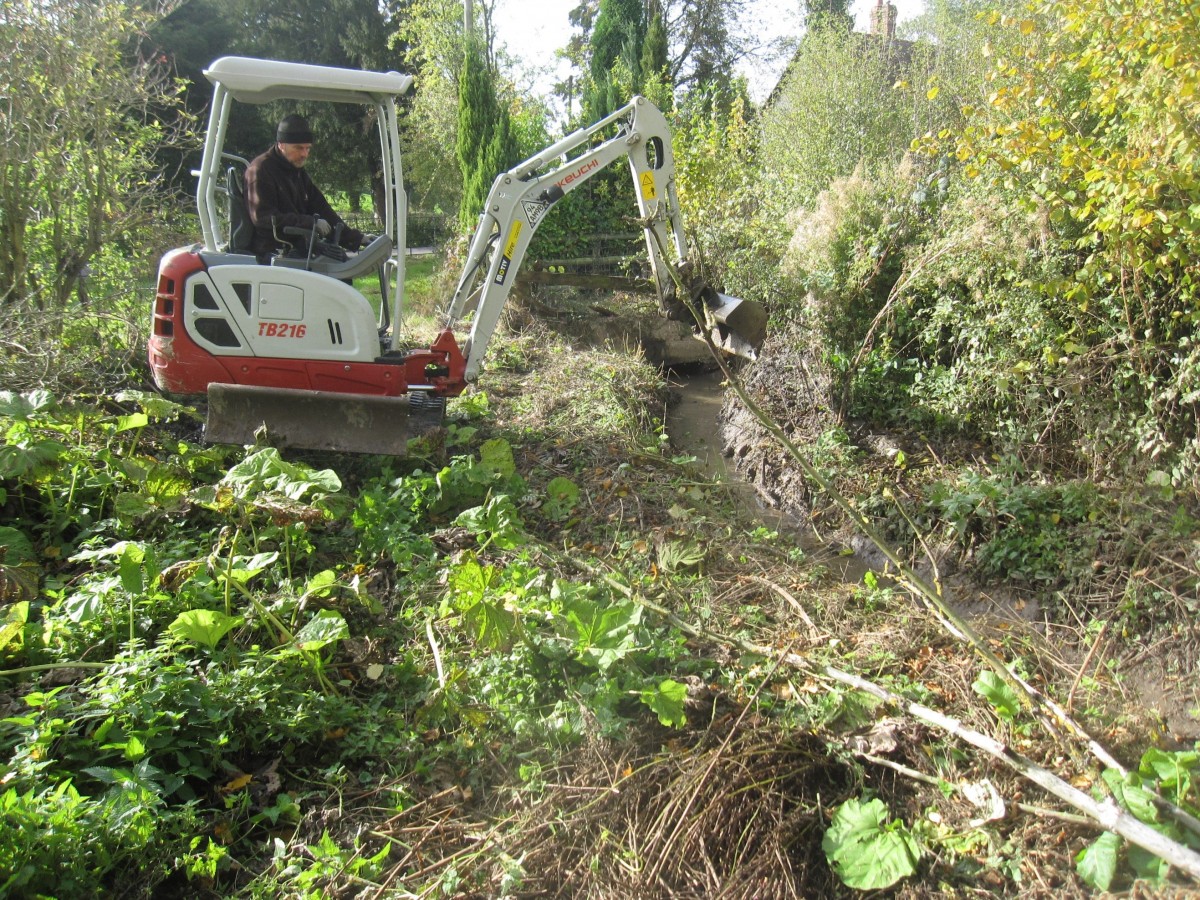
Before During

After
The Shropshire Wldlife Trust have a source of free Black Poplars and some of these are to be planted over the next few months alongside the stream at Lower Corfton in agreement with Mrs Harriet Horne.
Andy Kirk
19th November 2018
Diddlebury Parish Flood Action Group
Progress report # 11 – November 2018
Since the last Report in July, we have had a successful stream Working Party which has cleared the stream bed through the village of excess weed growth and encroachment from the banks.
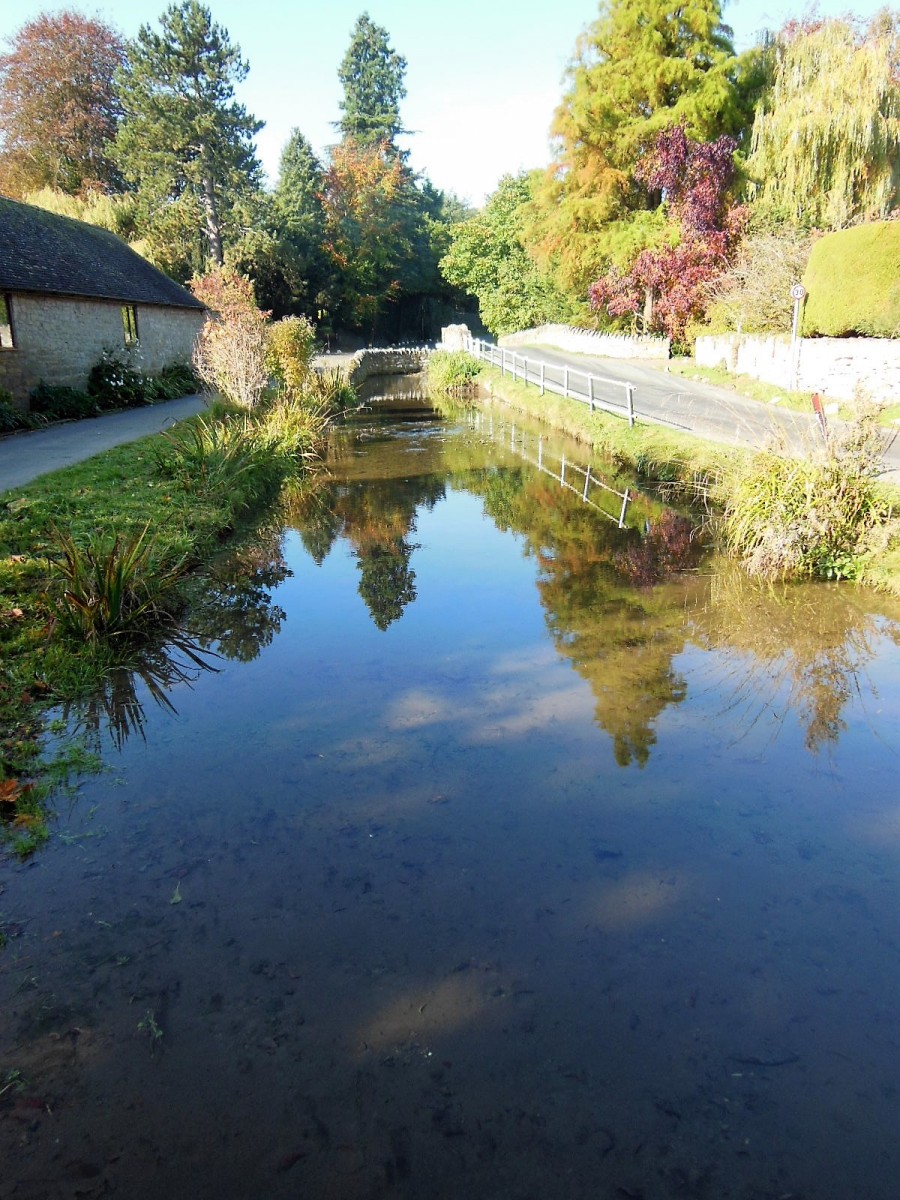
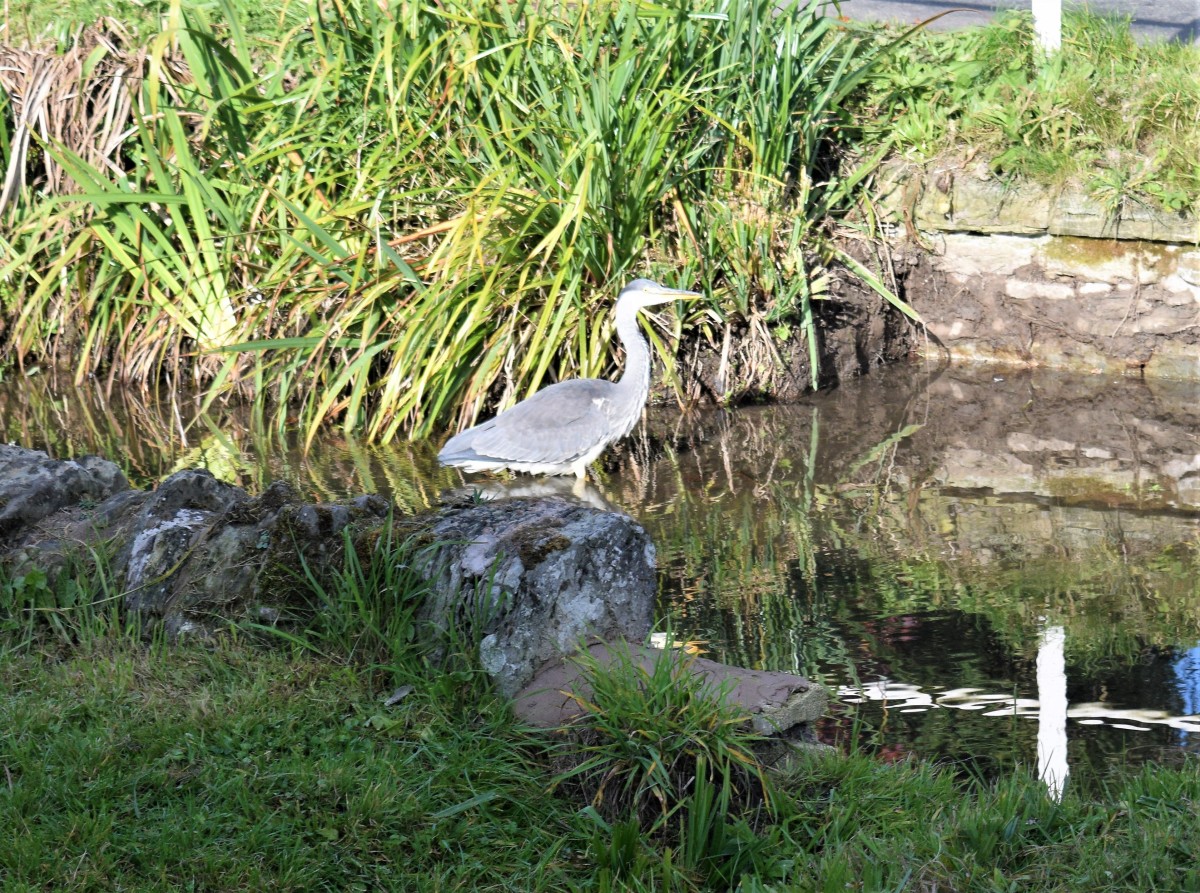
The stream after clearing up A recent visitor
The Chairman of the Pontesbury Parish Council was shown round the leaky dams below Wilderhope earlier this week as he had expressed interest in using the same techniques in his area.
The FAG was successful in their submission for funding to the Ludlow Rotary Club and an award of £300 has been made to us. This will be used to build more leaky dams above Middlehope.
One of our members will be attending A Conference in Birmingham organised by the National Flood Forum on 10th November concerning Insurance against flooding. A Report back will be circulated to all members after the event.
The Shropshire Wildlife Trust (SWT) plans shortly to aerate 75 acres of land near Clee St Margaret. They hope that farmers will then see the benefits of this work and keep doing it themselves. Aeration of land has many benefits, one of which is to increase its capacity to absorb surface water and hence reduce run off. They have recently completed some Slow the Flow work at Heath and Tenders are out for 70 leaky dams, with a further 30 planned in the Pye Brook catchment.
Cardiff University have started their Slow the Flow research project in the Corvedale and hope to Report by April 2021. Hopefully this work will enable promoters of Natural Flood Management techniques to quantify the results of their proposals and hence make it easier to obtain funding. This is cutting edge stuff in the Corvedale!
SWT has recently received £28,000 for tree planting with assistance from the Woodland Trust. They will initially be working near Shipton and would welcome any volunteers to assist with this work. If you are interested, please email me for more details.
In the longer term, post Brexit, the funding of farming is going to change. The FAG is considering how best to approach the local farming community upstream of problem areas to see if they are aware of the problems their present land management techniques can cause to properties downstream and to try to work with them, and the SWT to change their practices to ones less damaging and hopefully beneficial to the farmers as well. The SWT uses software called SCIMAP which can predict the effects downstream of upstream changes and this could be a useful tool to use in trying to persuade farmers to change their ways.
Geoff Neden
2nd November 2018
Diddlebury Parish Flood Action Group
Diddlebury Parish Flood Action Group
Visit to leaky dams in the Diddle Brook, 5th September 2018
The Group were kindly invited by Luke Neal of the Shropshire Wildlife Trust (SWT) to view the approximately 50 leaky dams which were installed in the Diddle Brook upstream of Diddlebury village under his direction and with the kind permission of Delbury Estate in February 2018.
The Group went firstly went to the stream near Preens Barn between Middlehope and Burwood. This is a tributary of the Diddle Brook which drains the area around Burwood. From there we went to Middlehope and saw the area which was flooded by the storm at the end of May. Finally, we went to Dunstans Lane and walked along the Diddle Brook in both directions looking at the different dam types and locations, the reasons for which Luke explained.
The dams were of differing designs. Each one is tailor made to suit the local conditions but the construction is generally as described below.
The small trees normally used for the main dam structures are placed across the stream just above bed level. Each end is fixed to the banks by staking or occasionally, the tree is pinned to the bed itself. Smaller branches and brushwood are piled against the dam on the upstream side. The idea is to trap as much of the flow as possible above the dam before it finally forces its way through thus delaying the peak flow in the stream. Each dam has only a small effect but the cumulative effect of many such dams is significant and can reduce peak flood flows by around 10%.
From the perspective of SWT, the dams also provide new areas of suitable wild life habitats and act as siltation ponds so are a win win situation. The SWT also promote other means of Slowing the Flow by aerating the soil in fields to increase the absorption of surface water and again reduce peak flows.
Images of some of the dams visited are below.
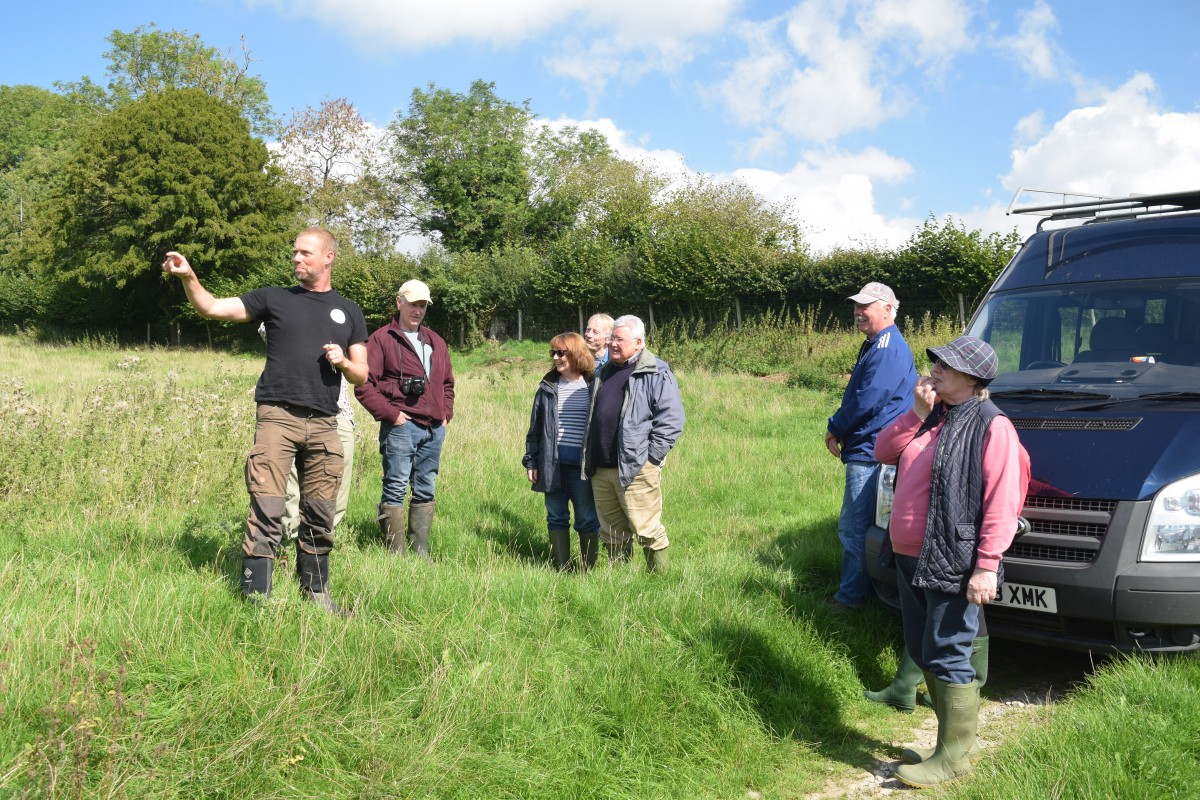
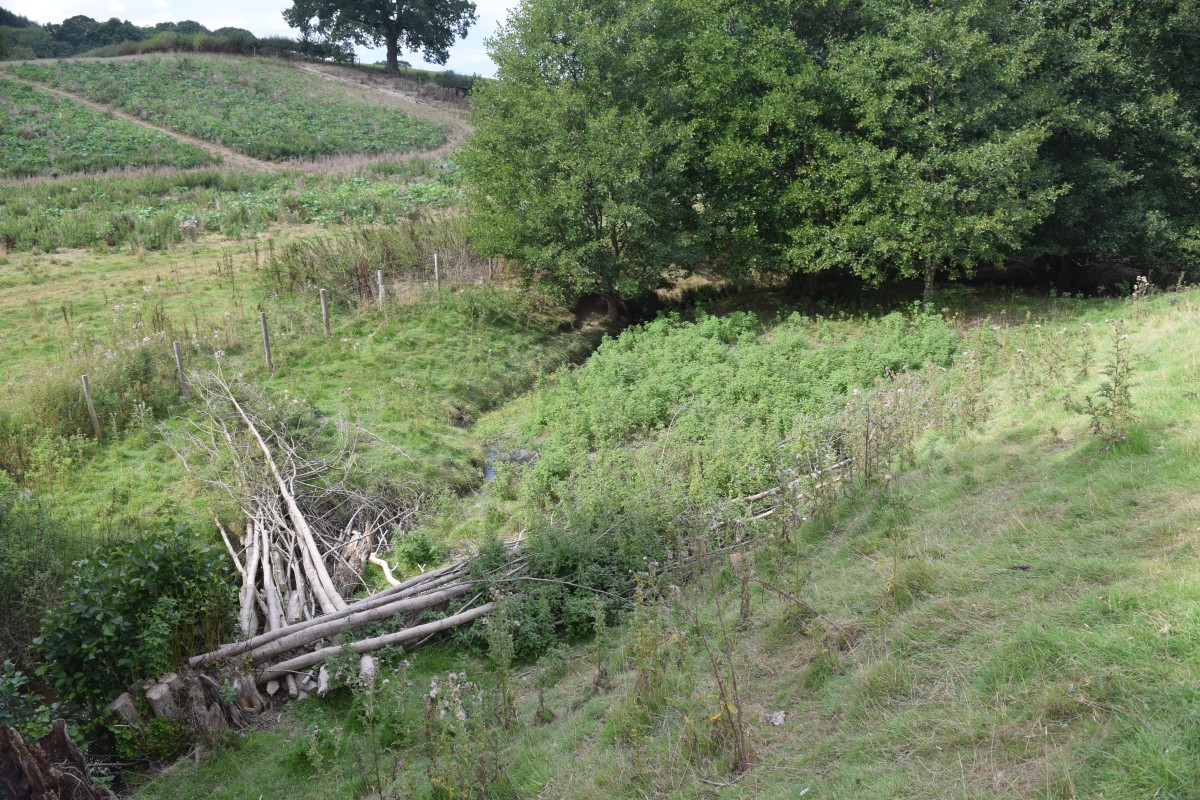
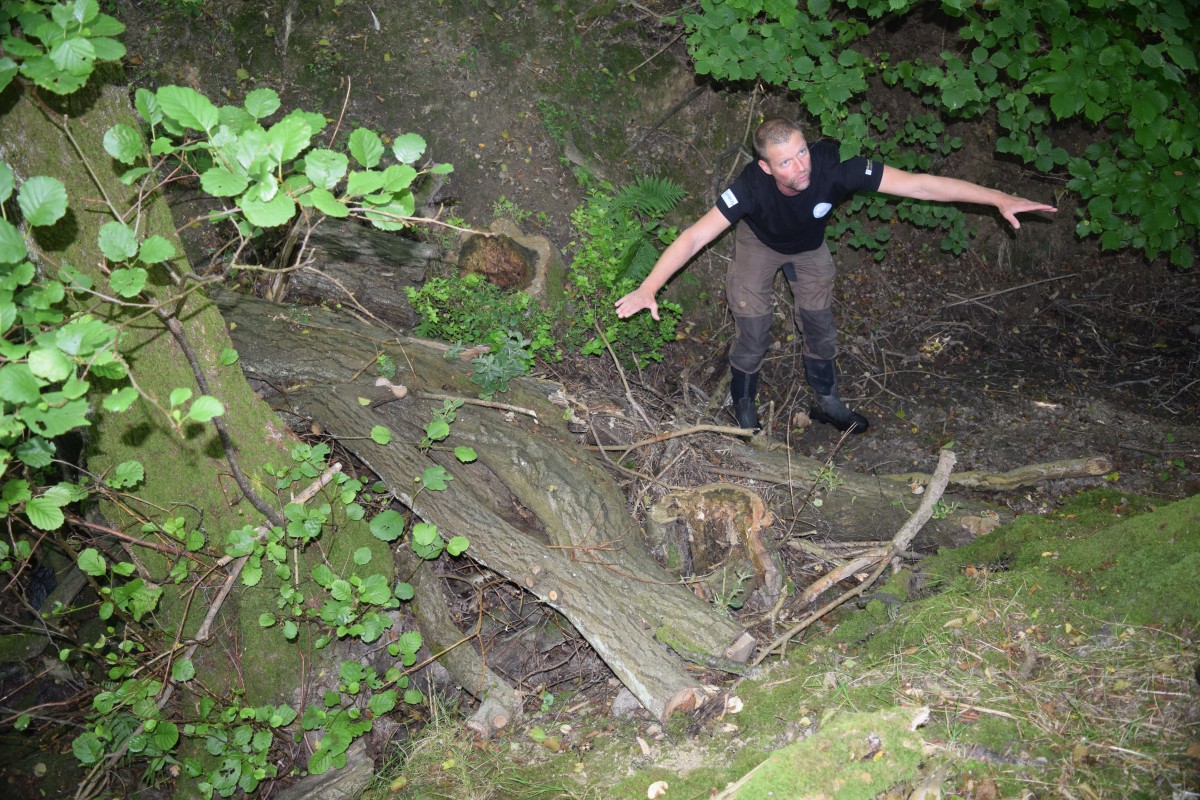
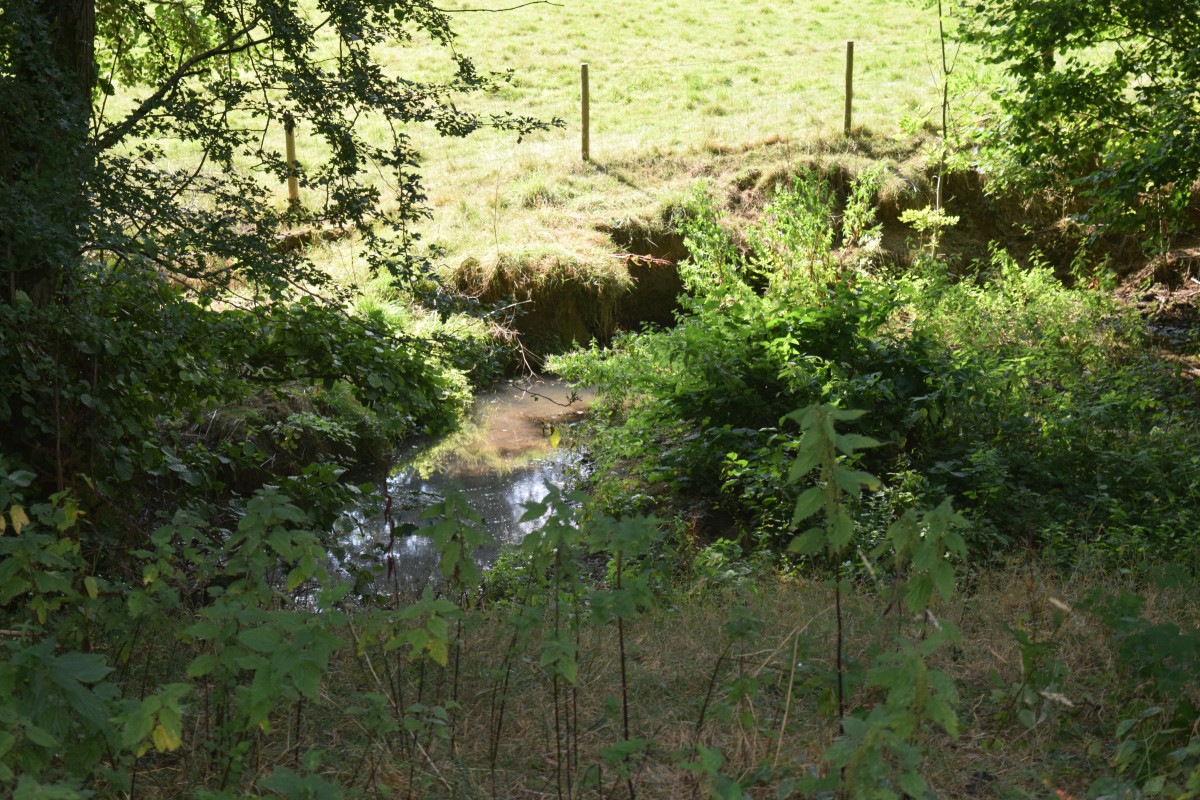
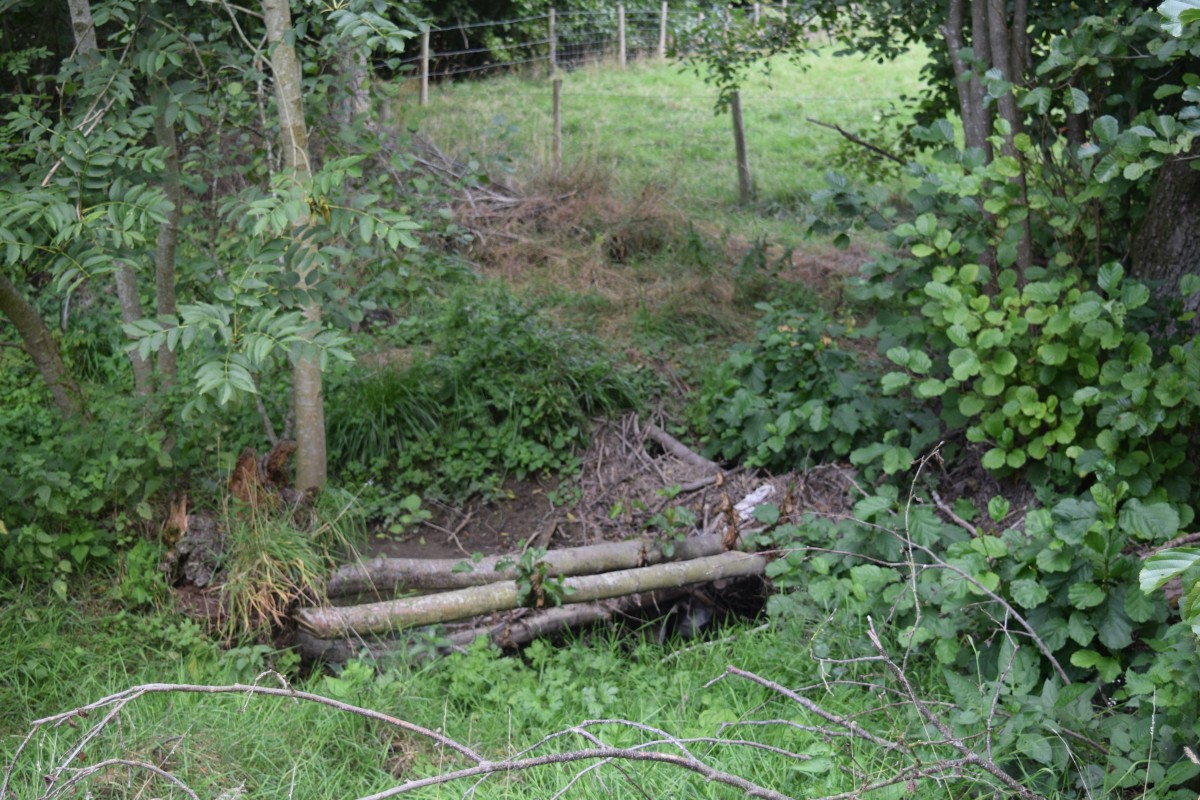
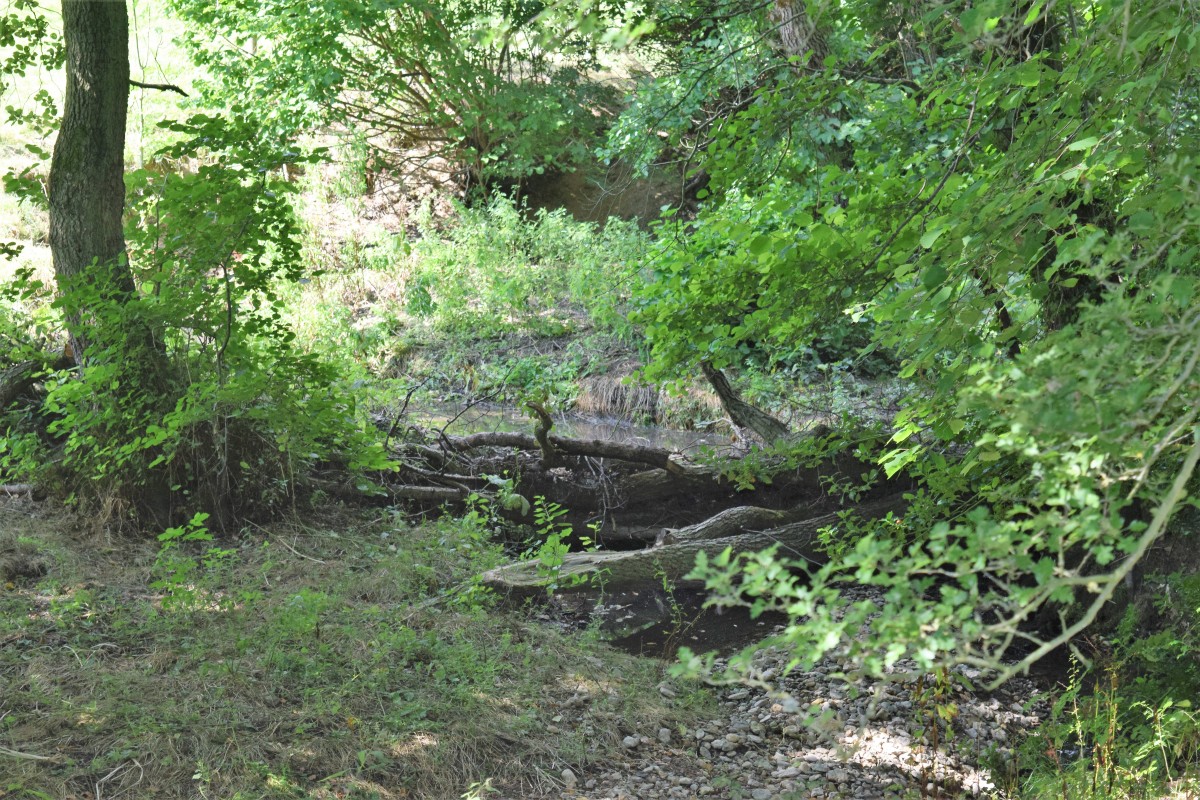
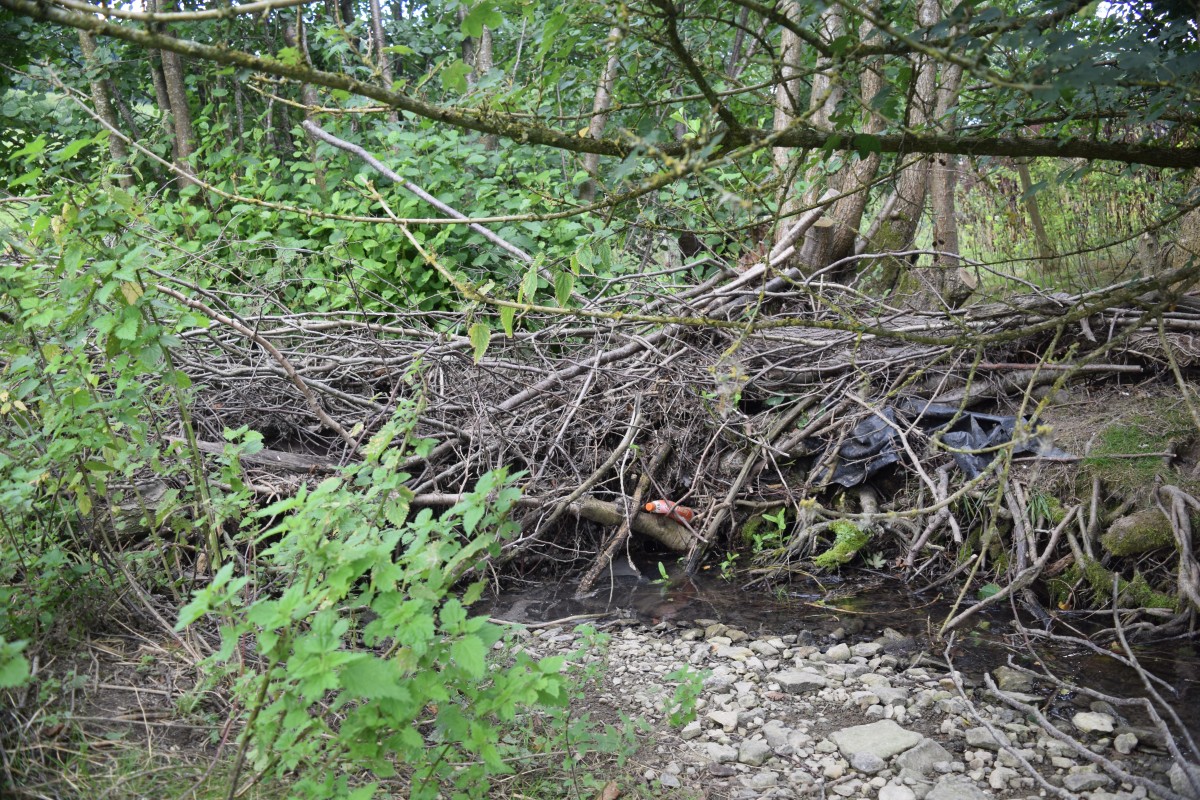
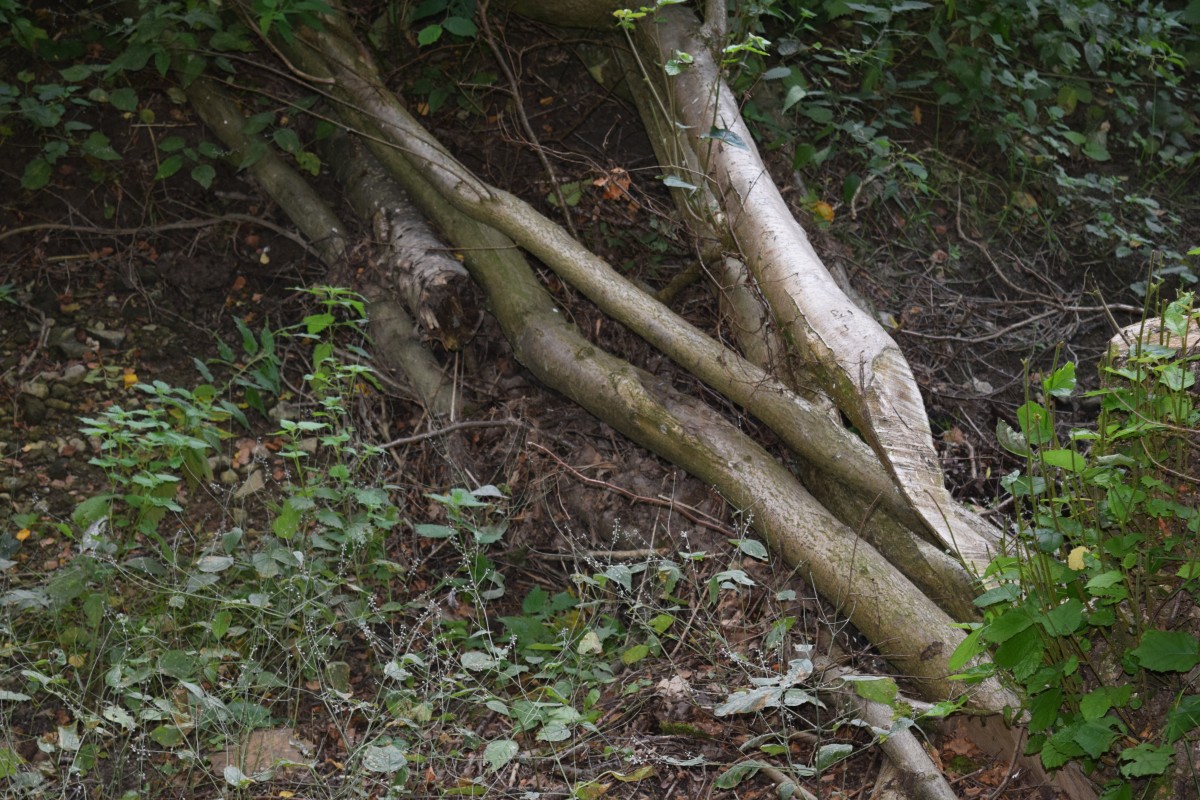
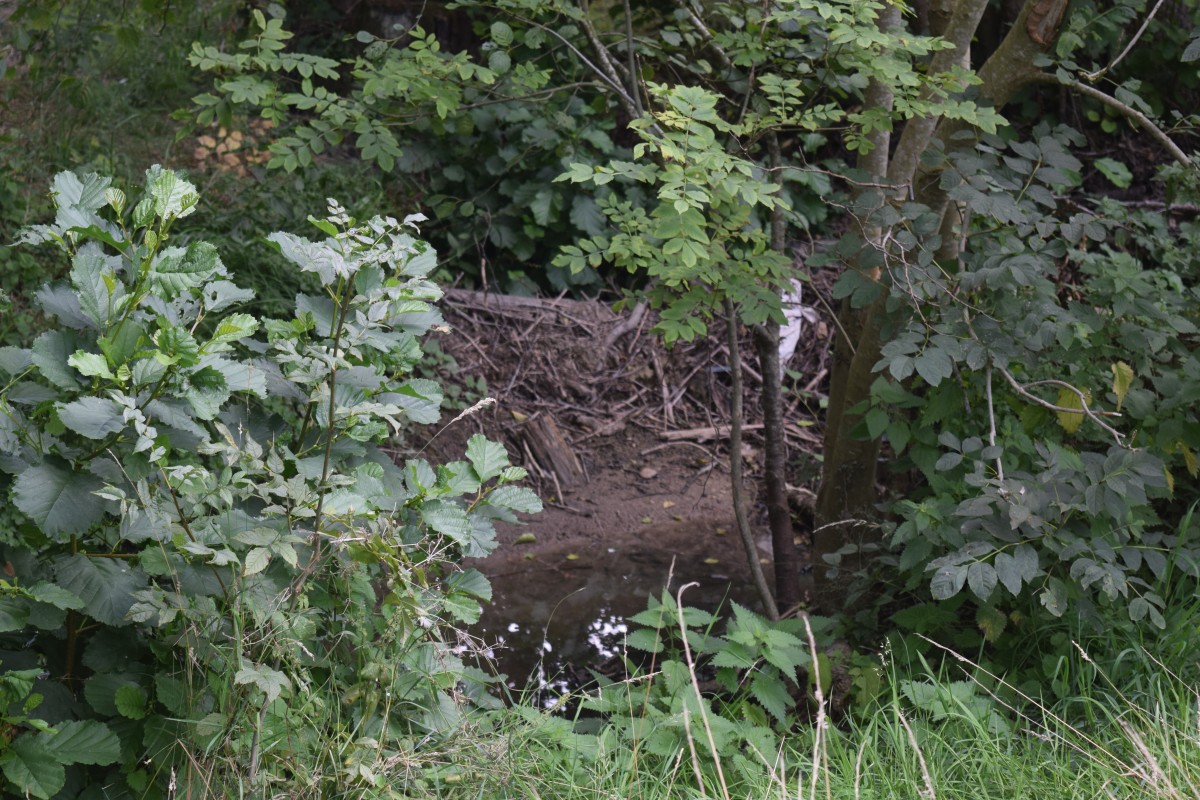
Geoff Neden
06/09/18
Diddlebury Parish Flood Action Group
Diddlebury Parish Flood Action Group
West Midlands National Flood Management (NFM) Roadshow
The Environment Agency (EA) hosted this Roadshow in Worcester on 23rd May 2018. Attendees included many representatives from local and county authorities, the Forestry Commission and DEFRA, and a significant number of EA delegates; disappointingly only three Flood Action Groups were represented.
The aim of the Roadshow was to promote understanding and to champion the use of Working with Natural Processes/Natural Flood Management (WWNP/NFM) to reduce flood risk. This strategy provides the means to help achieve a wide range of benefits for people and the environment by taking an integrated approach to catchment management.
Strategic planning is necessary to create schemes which will provide multiple benefits focusing on the small communities which are less likely than their larger neighbours to be able to secure appropriate funding. Building and structuring relationships between organisations, the public sector, and local communities provides proper partnerships to take projects forward.
The range of NFM solutions includes:
- slow the flow
- making space for water
- diverting the flow
- aiding filtration
- enhanced land management.
Cost-effective solutions are required in terms of both resources and ongoing maintenance, and these can be achieved by carefully considered partnership working.
The EA has now undertaken and published 65 case studies which provide evidence-based examples of projects which have now resolved previously existing problems (see www.gov.uk/government/publications/working-with-natural-processes-to-red...). These studies cover rivers and flood plains, woodlands, run-off, and coasts and estuaries.
DEFRA has provided funding of £15m to help in developing the knowledge to find solutions for future implementation. This has benefited much of the country already, covering Yorkshire, the West Midlands, Wessex, Lincolnshire and Northamptonshire, Devon and Cornwall, the Solent and South Downs, and Cumbria and Lancashire. Also proposed are GCSE/A-level educational modules to promote the multiple benefits of NFM for people, communities, and wildlife. DEFRA/EA is also in the process of funding and preparing an NFM design guide.
Apart from stand-alone WWNP/NFM projects, it is accepted that in many cases traditional engineering solutions will still be required. These, however, will often still benefit from being carried out in conjunction with the WWNP/NFM processes.
Much work remains to be carried out, and research, mapping and monitoring, and publication of results will continue to provide the necessary evidence in support of the use of WWNP/NFM. (Twelve other useful sources of data were provided and these will be available from the FAG.)
Andy Kirk
August 2018
Diddlebury Parish Flood Action Group
Repairs to wall by Mill Lane Bridge
The re pointing work has been completed and the wall is now safe for many years to come. Our thanks to the Diddlebury Parish Council for funding this work.
Below are some before and after images
Before After
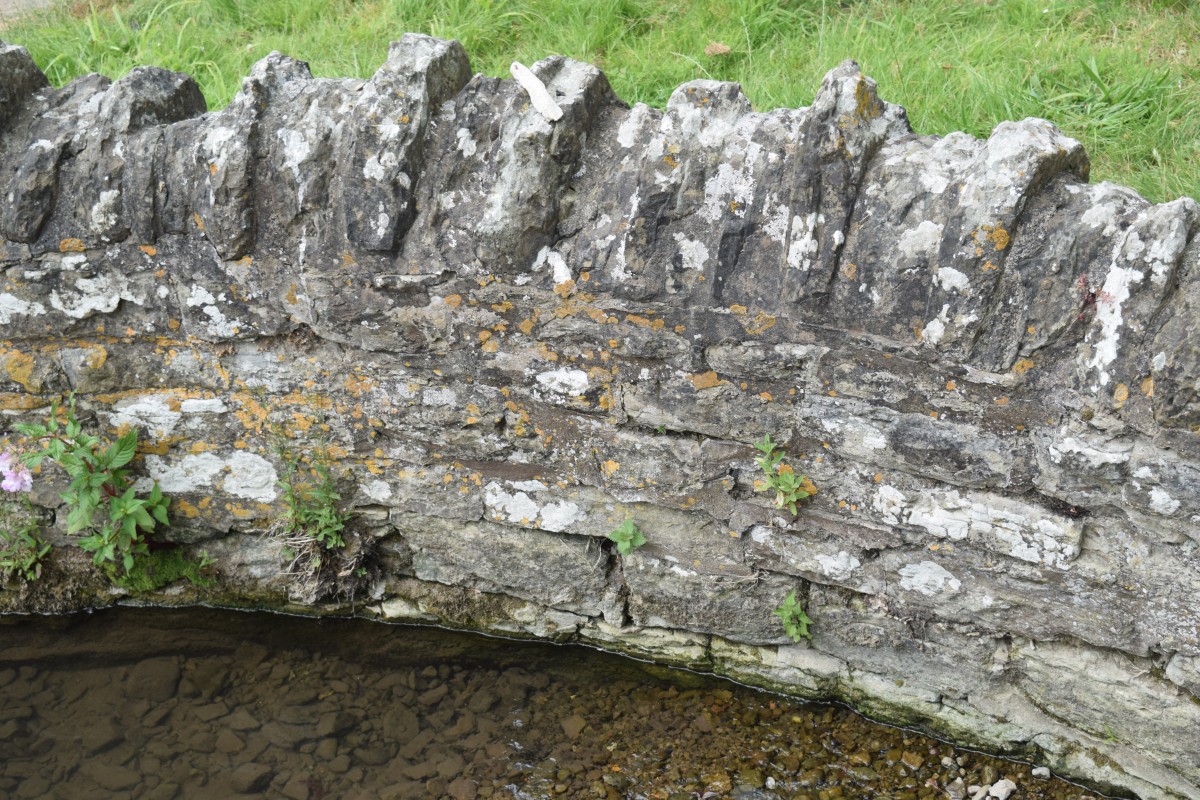
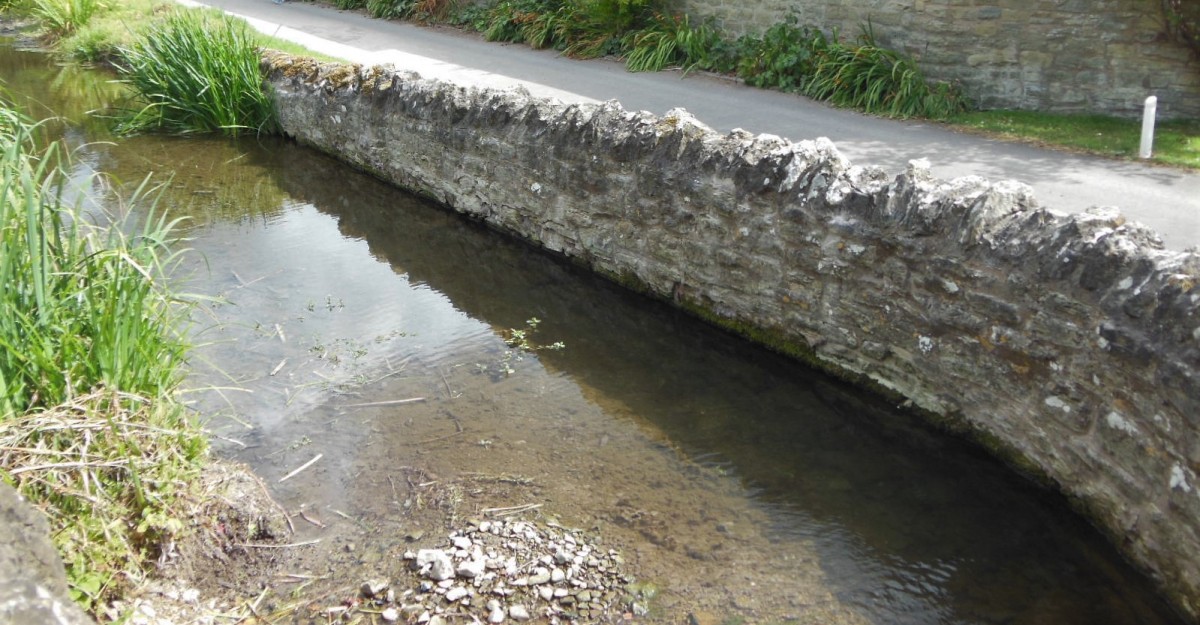
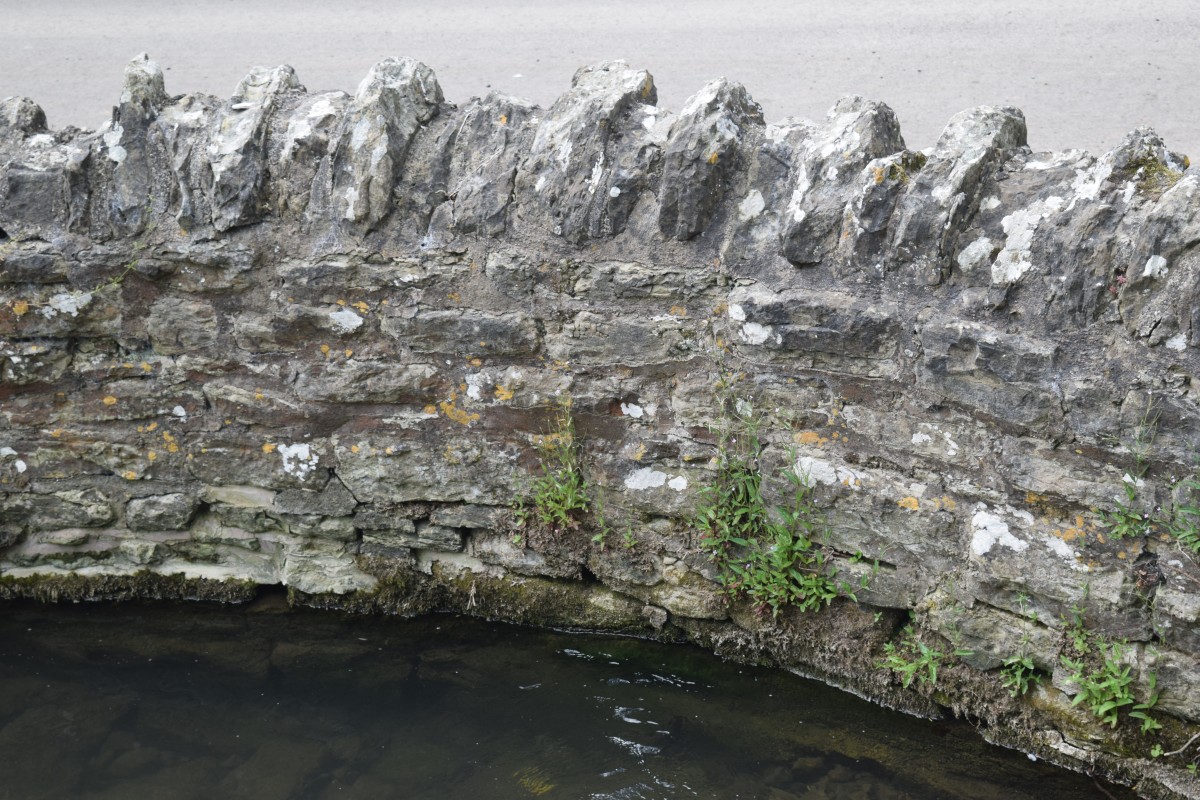
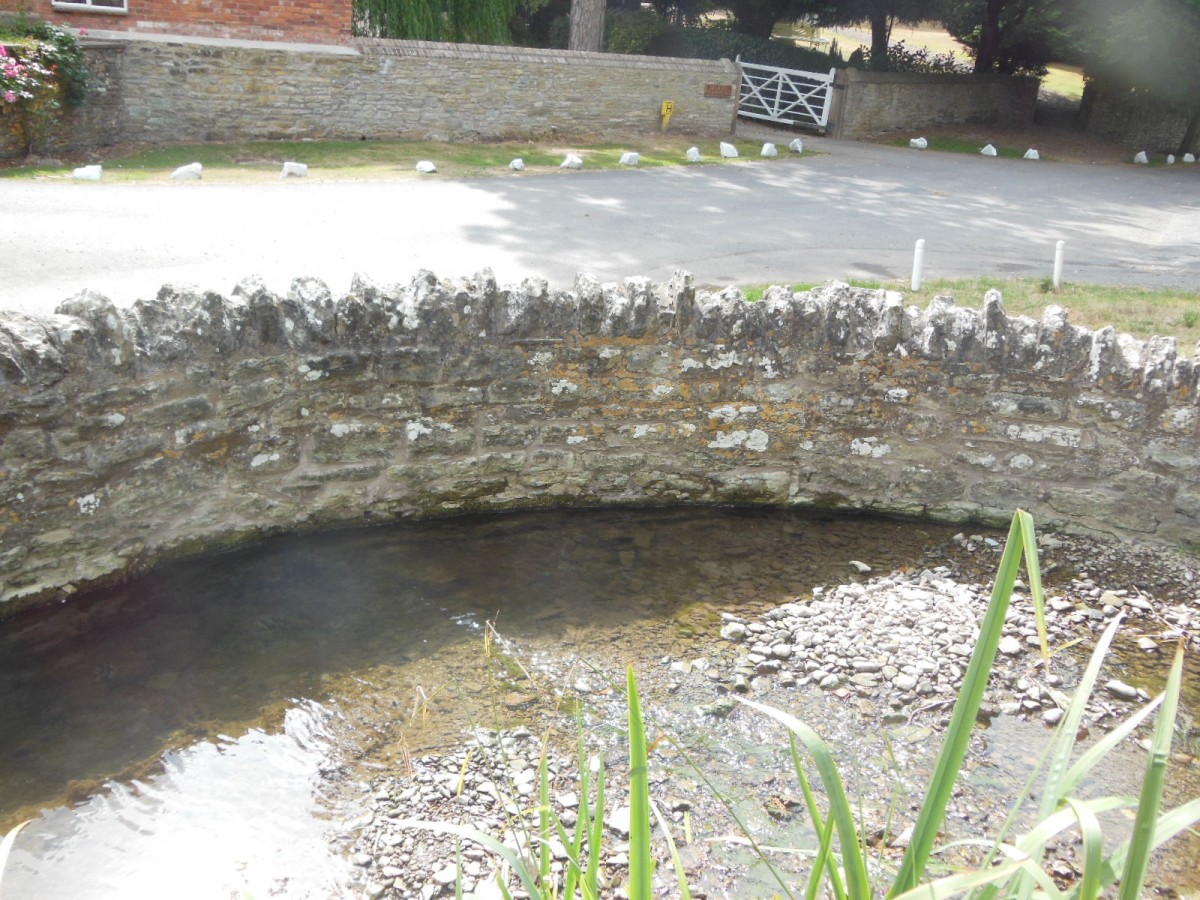
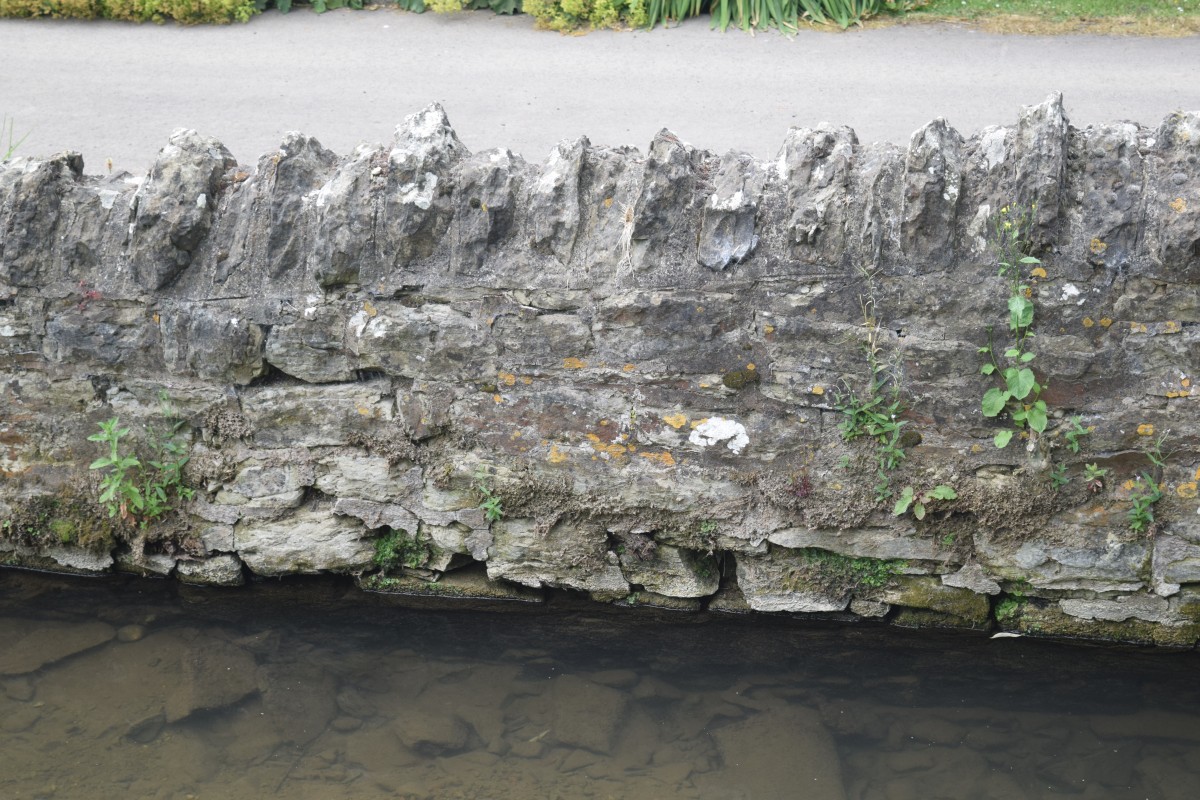
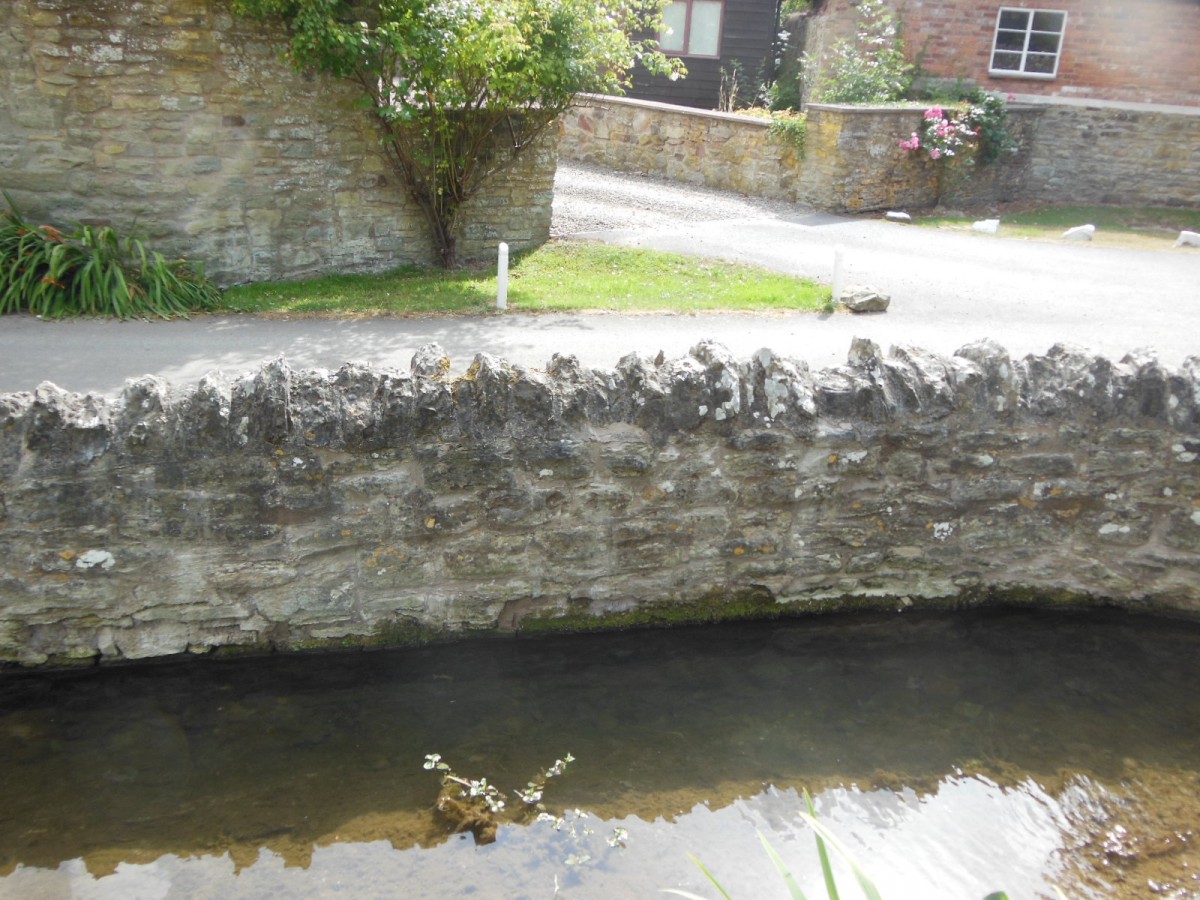
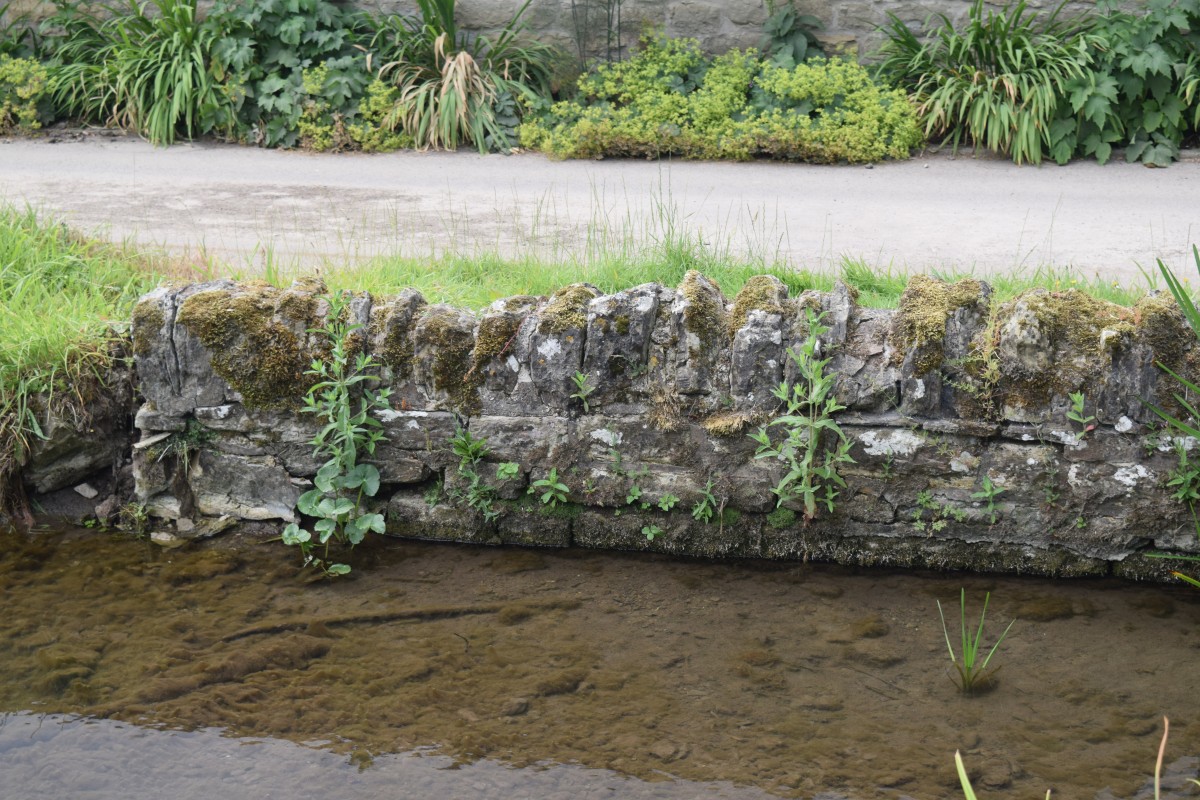
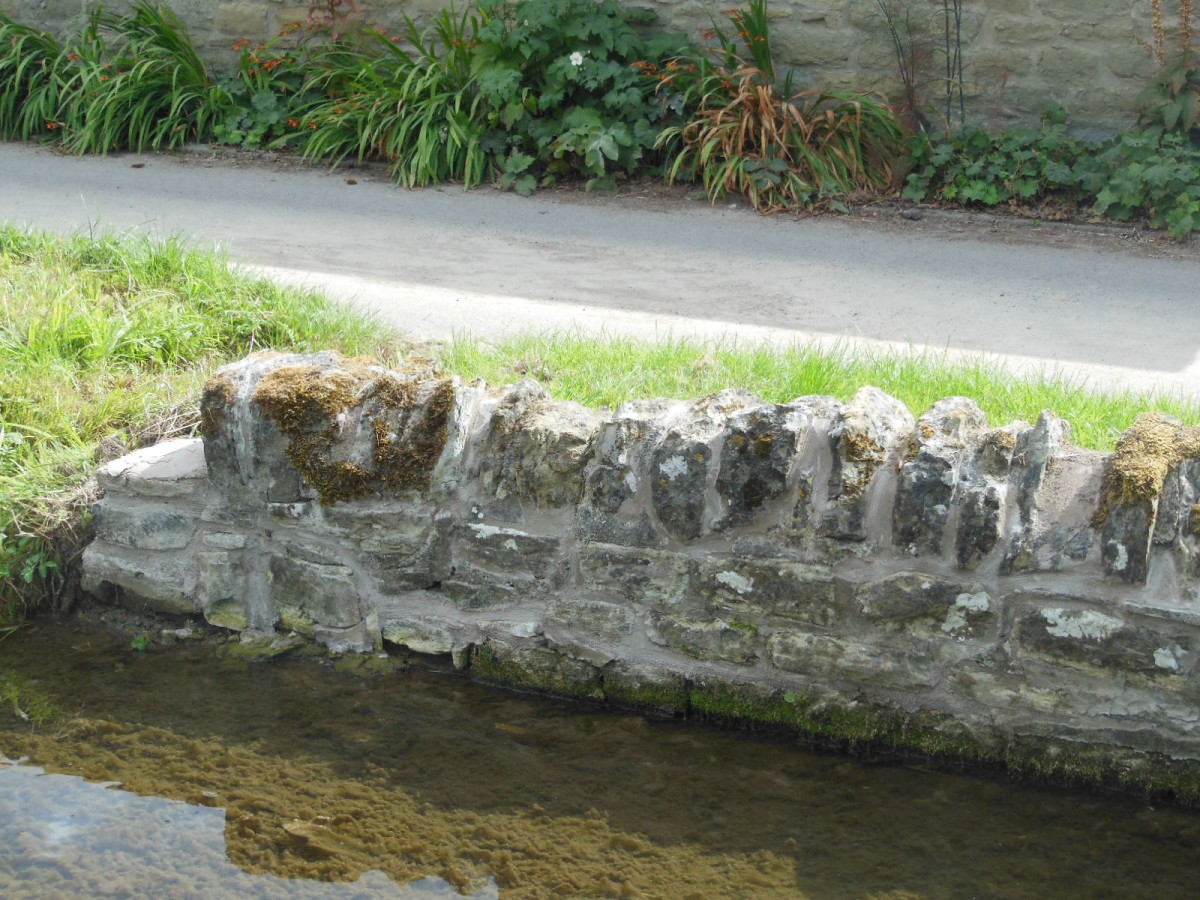
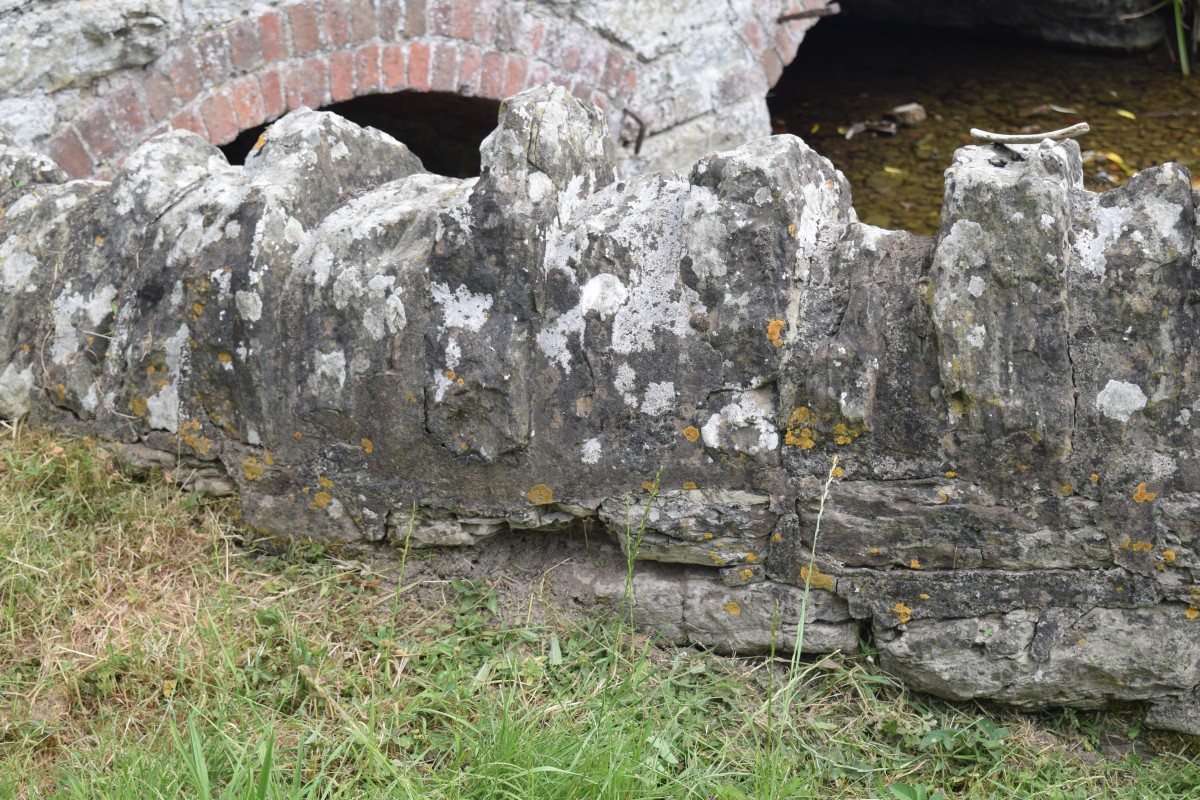
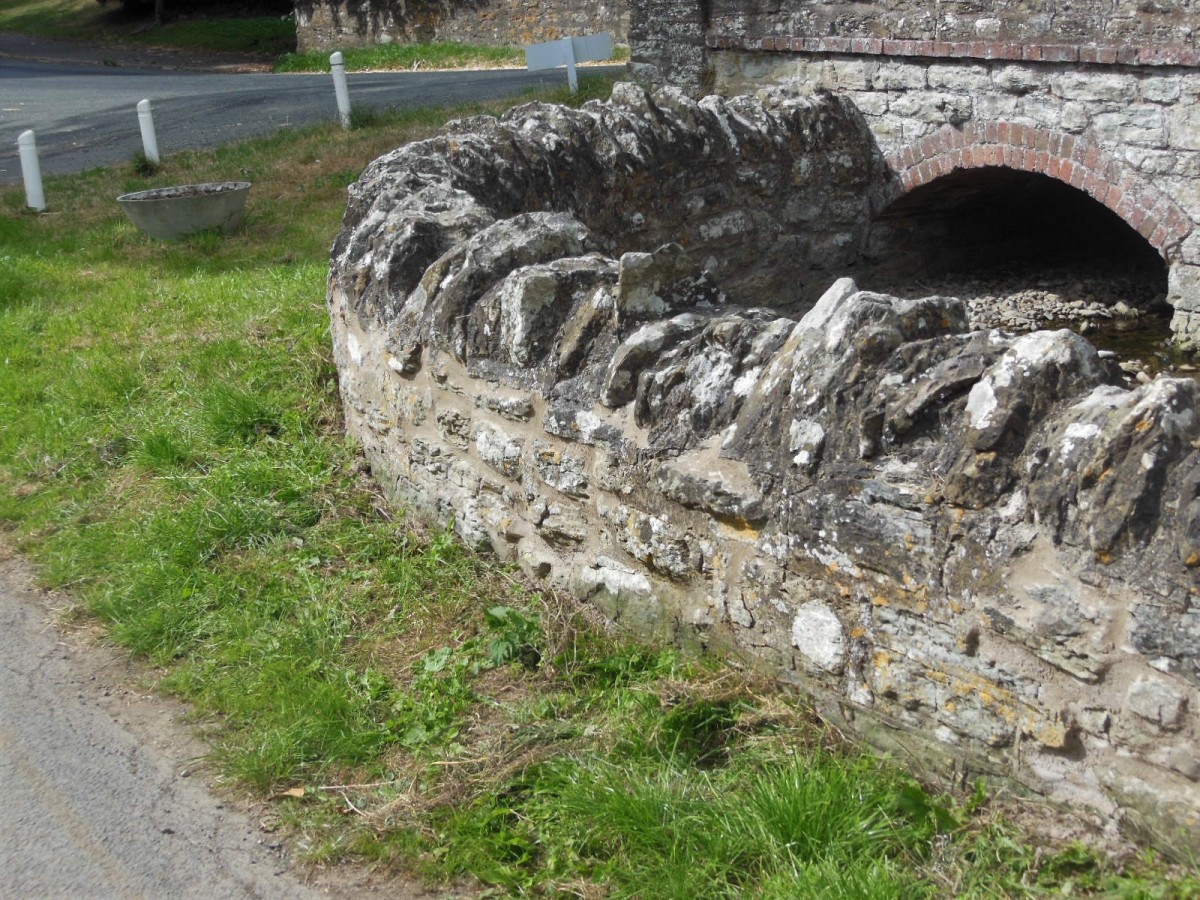
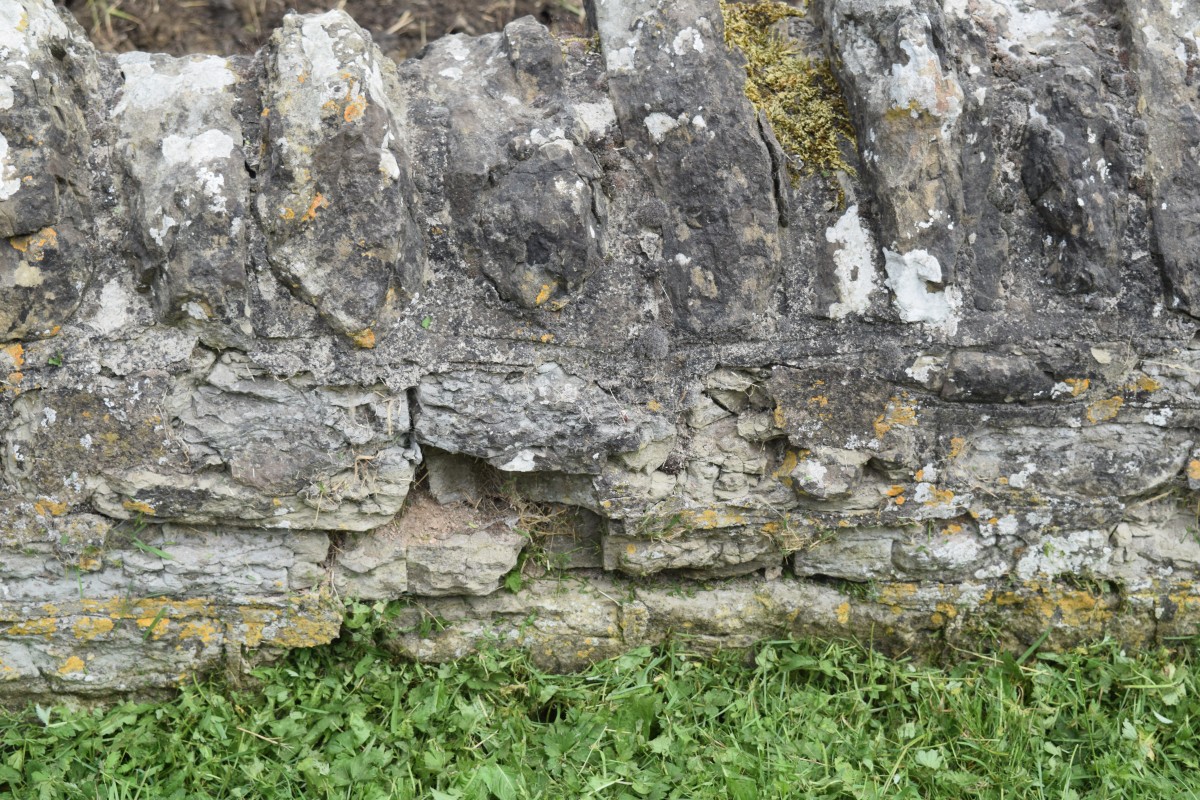
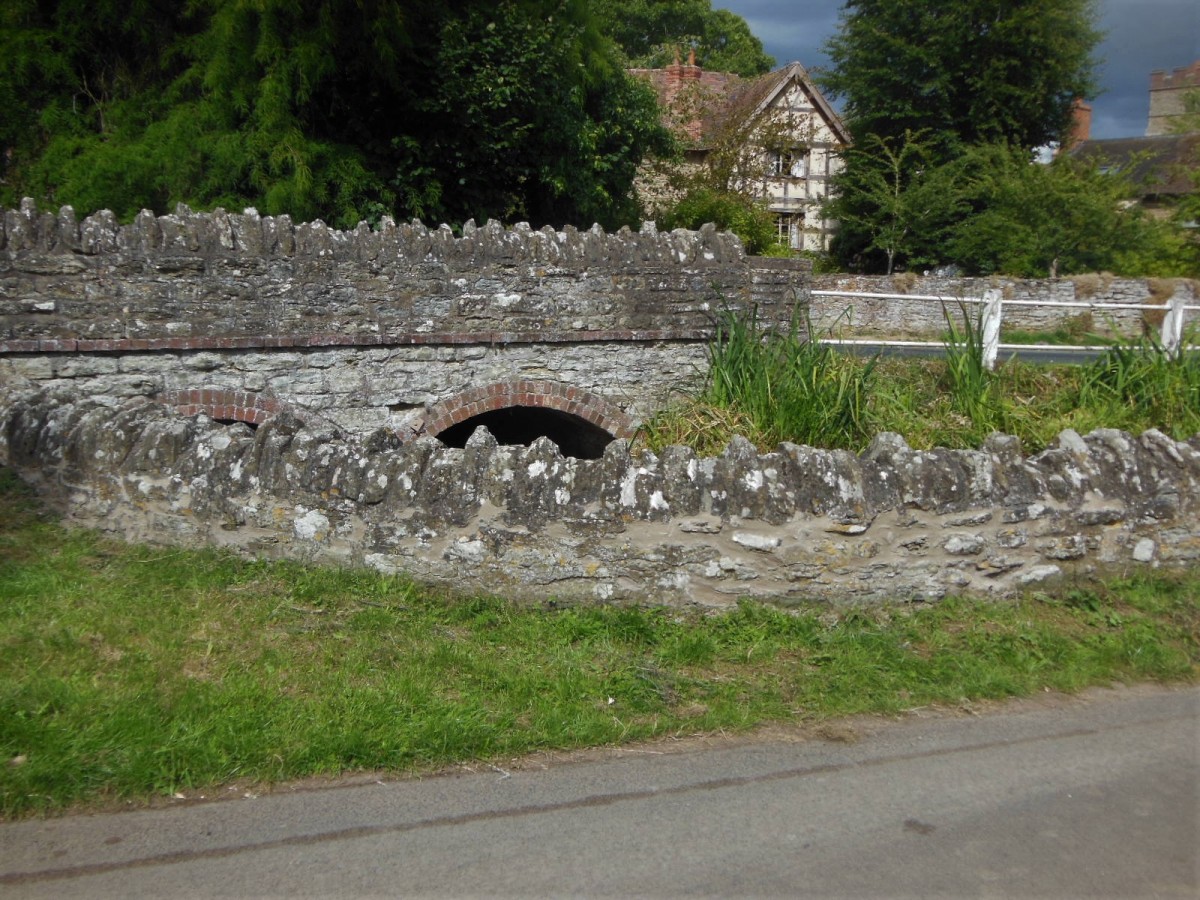
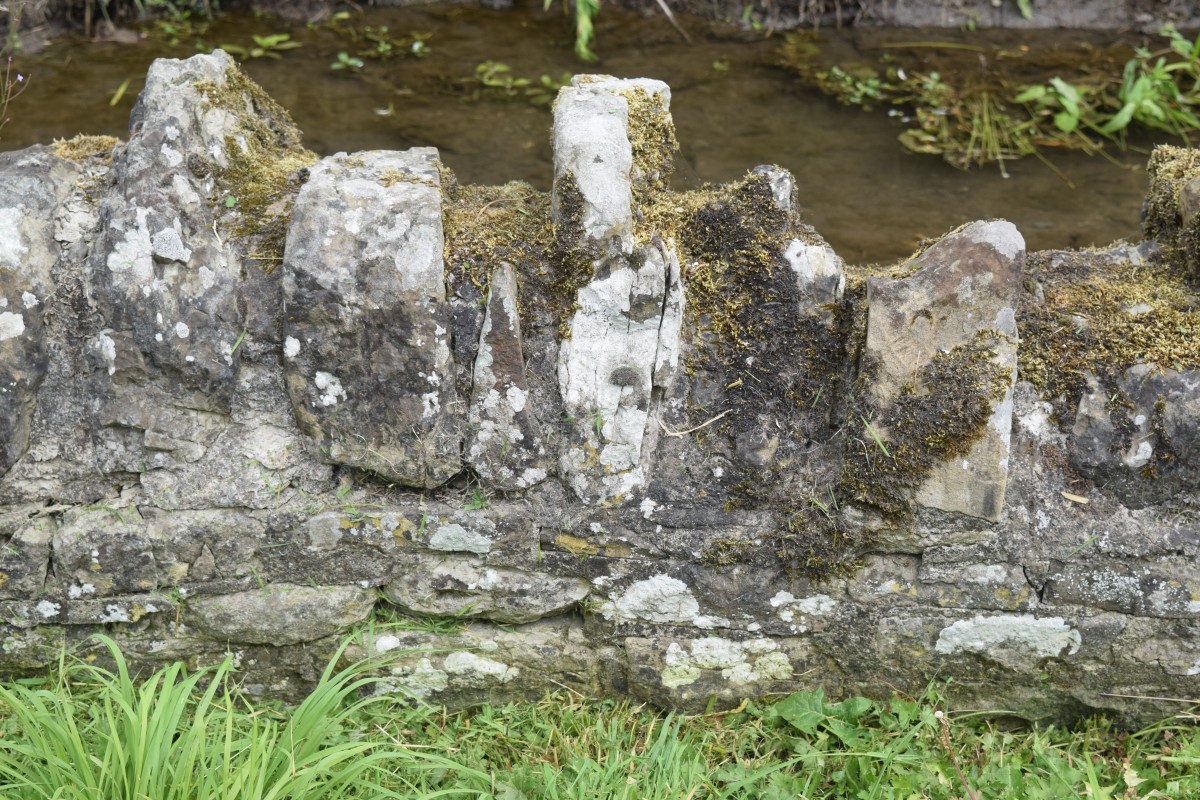
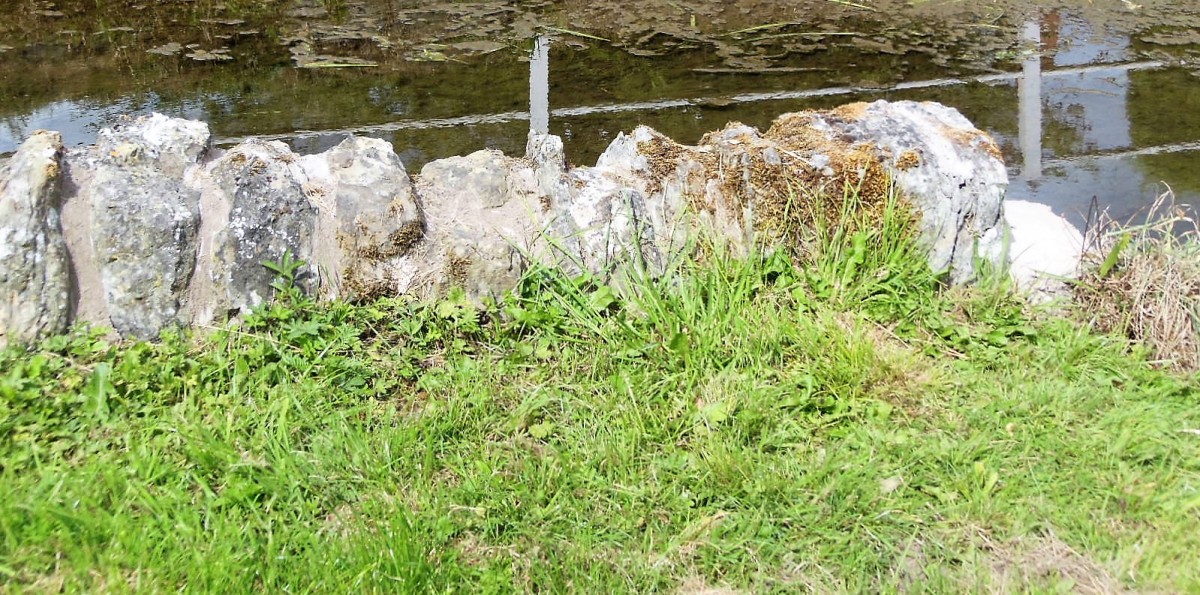
Geoff Neden
09/08/2018
Diddlebury Parish Flood Action Group
Diddlebury Parish Flood Action Group
Litter Picking exercise
18th July 2018
The object of the exercise was to walk the length of the Diddle Brook from the Mill Lane footbridge to its confluence with the River Corve and to pick out all litter from the stream en route.
The Shropshire Wildlife Trust (SWT) kindly provided us with Hi Vis jackets, rubberised gloves, litter pickers and plastic bags in which to collect the rubbish.
Four members together with Luke Neal of the SWT did the walk this morning with the kind permission of Mr Patrick Wrigley of Delbury Estates, the land owner and also of Mr Topher Morgan and Mr Stephen Povall who farm the land.
As well as picking out the rubbish, we also destroyed a number of Himalayan Balsam plants which were growing alongside the stream.
The types of litter removed and its location were noted on a Form and this information will be fed into the SWT data base. The material was mostly plastic. The litter record Form will help the SWT to understand the sources of plastic pollution and improve the work to address this problem. They are partnered with the Marine Conservation Society and will be sharing their results with them. 80% of marine plastic pollution comes down our rivers, it’s time to stop the plastic tide!
The following images show work in progress and the total amount of rubbish collected. The rubbish will be properly disposed of.
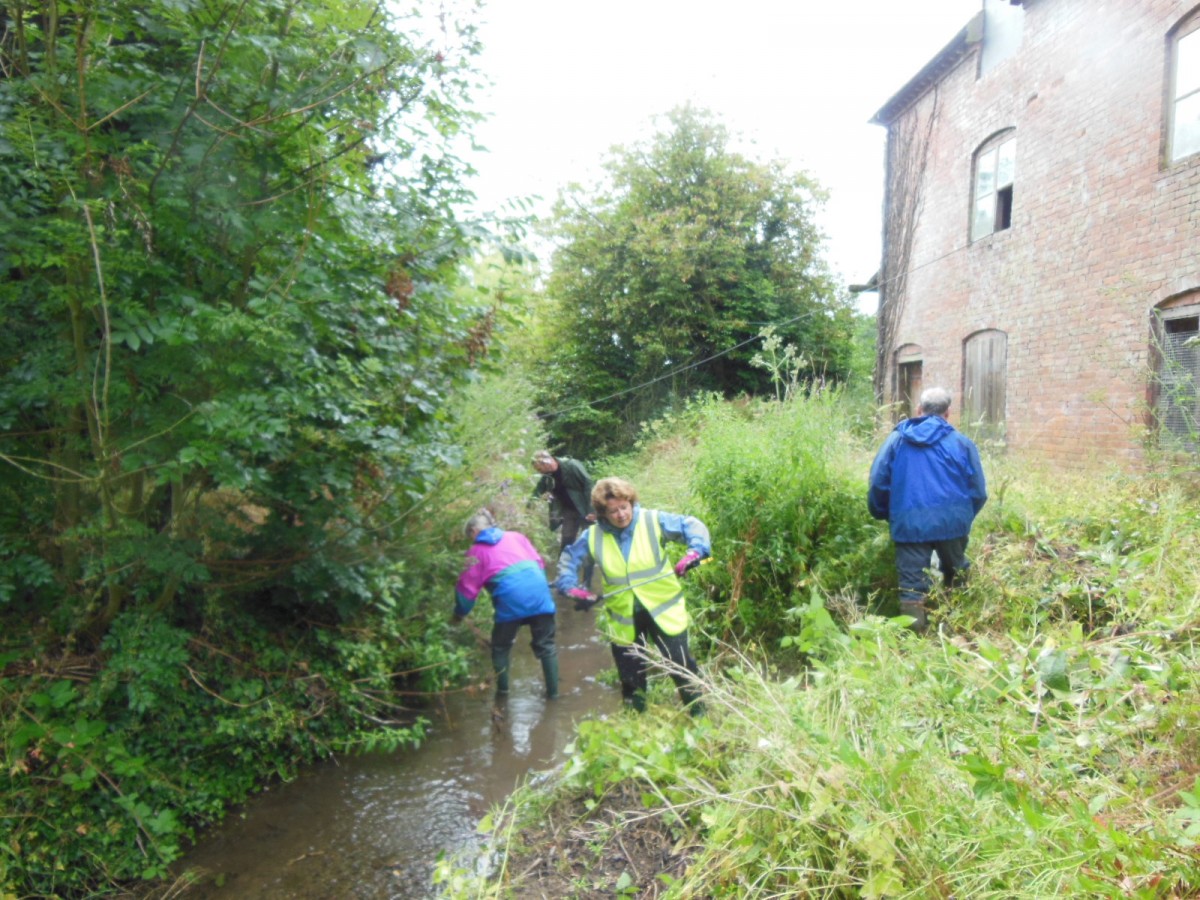
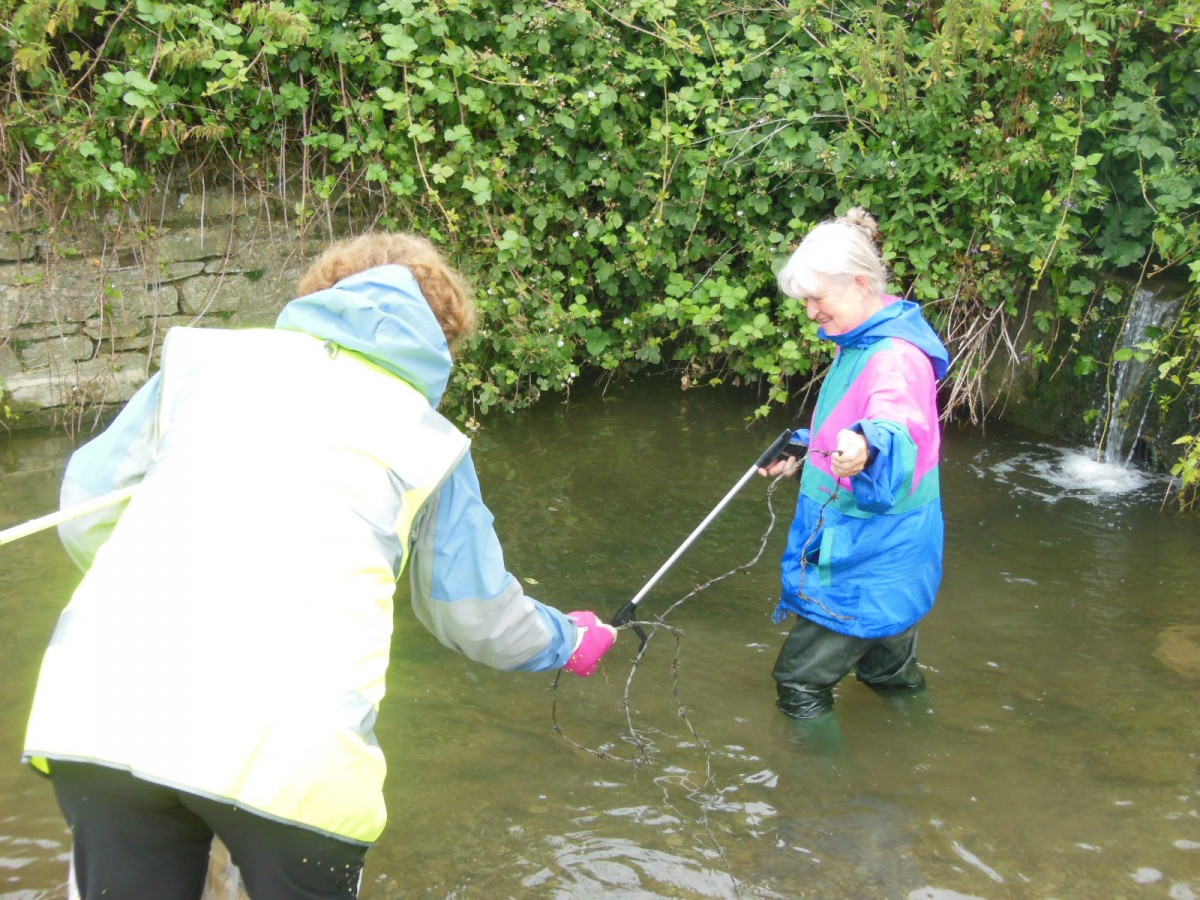
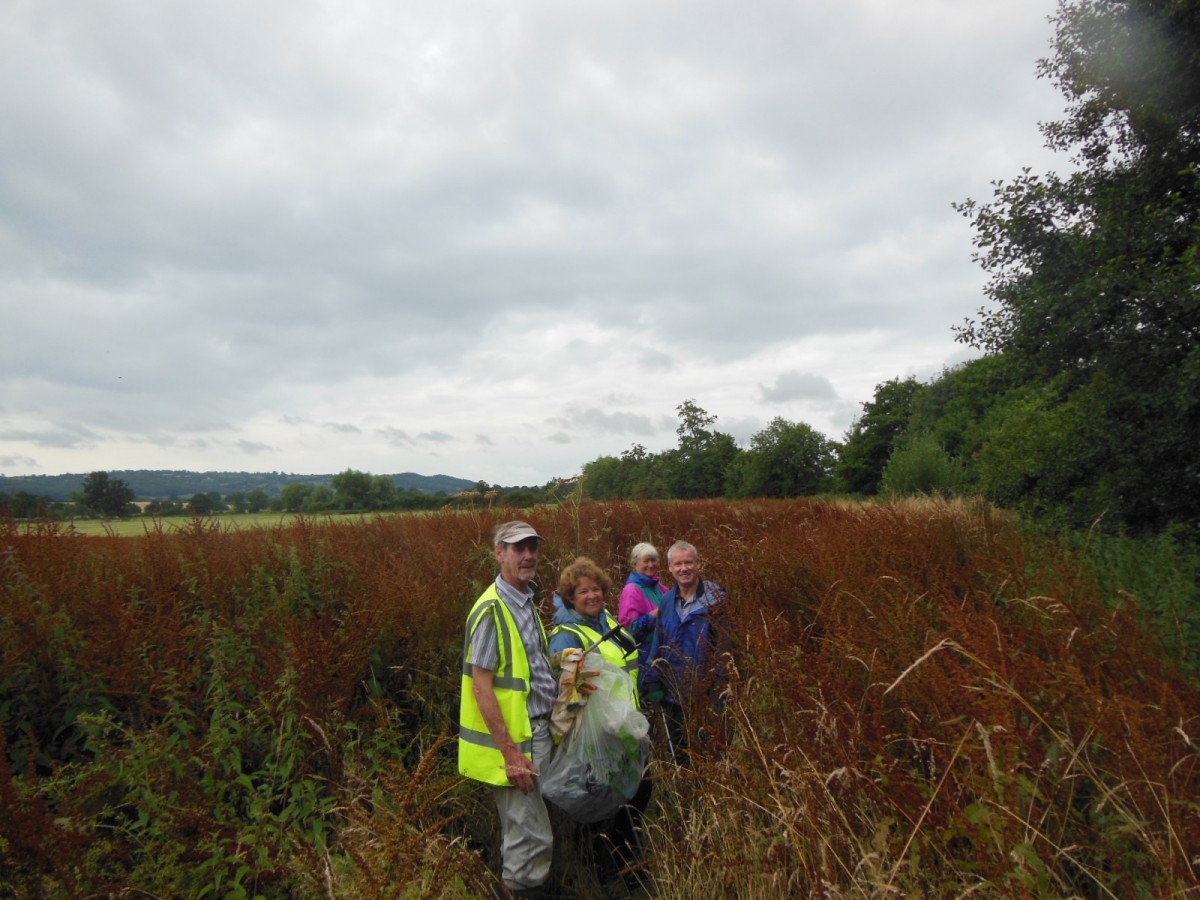
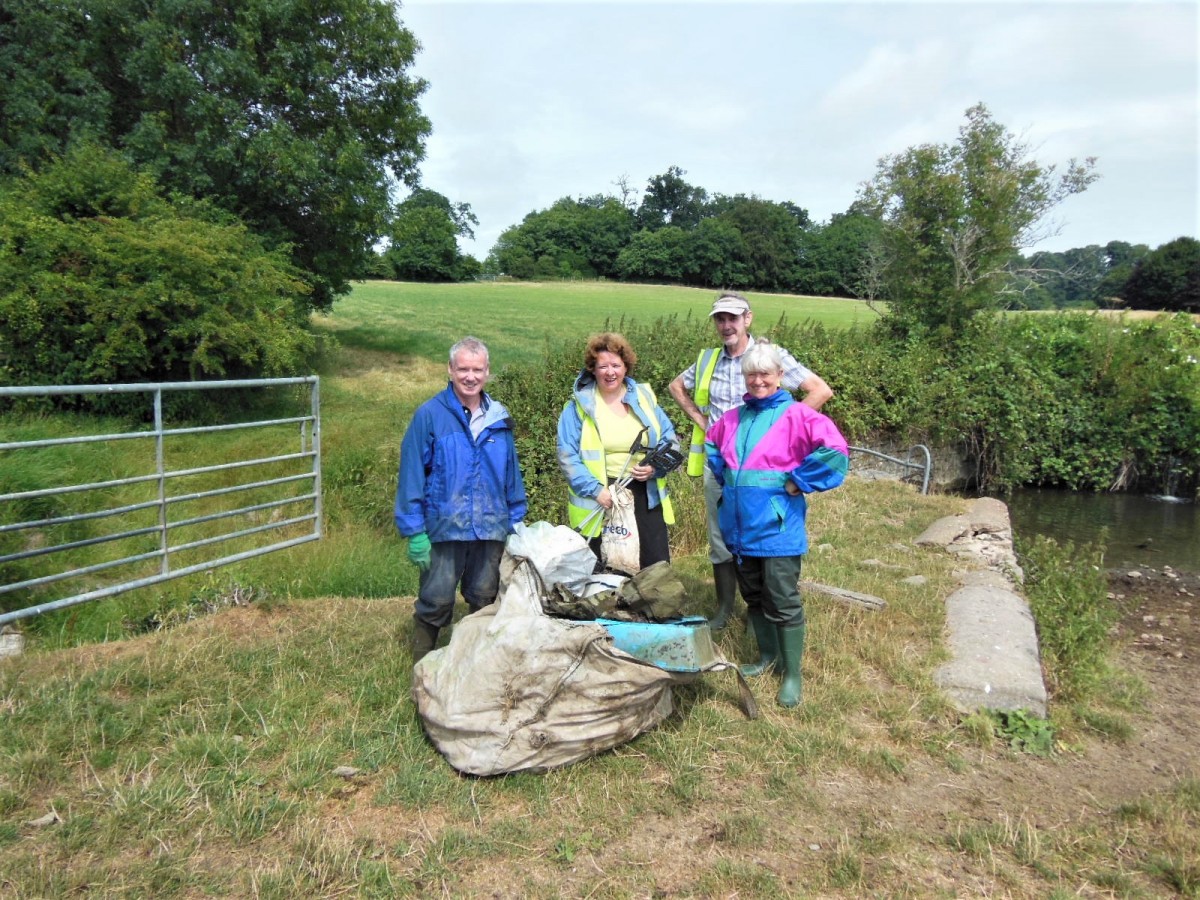
Geoff Neden
18/07/2018
Diddlebury Parish Flood Action Group
Diddlebury Parish Flood Action Group
De silting exercise
4th July 2018
The object of the exercise was to remove the majority of the area of the silt build up immediately below the Mill Lane Bridge on the main road side of the stream bed. By doing so, the area of available waterway for flood flows would be significantly enlarged. This then increases the likelihood of containing future flood flows within the stream banks
The silt build up had become too large to deal with by hand so arrangements were made to borrow a suitable machine from Topher and a tractor and trailer from Andy.
The work was done this morning after the school rush traffic was over with volunteers in Hi Vis jackets controlling traffic.
Andy expertly drove all the machines and the work was completed in just under an hour. The opportunity was taken to remove two large unsightly concrete blocks which had found their way into the stream and also the heap of weeds etc which had been removed from the stream by previous working groups. The Irises along this part of the stream bank were largely preserved in the remaining strip by the roadside wall. Future maintenance will now be undertaken by the FAG during their regular working groups.
The cost of the work was met using DPC funds allocated to the FAG.
Three views taken prior to the work being carried out
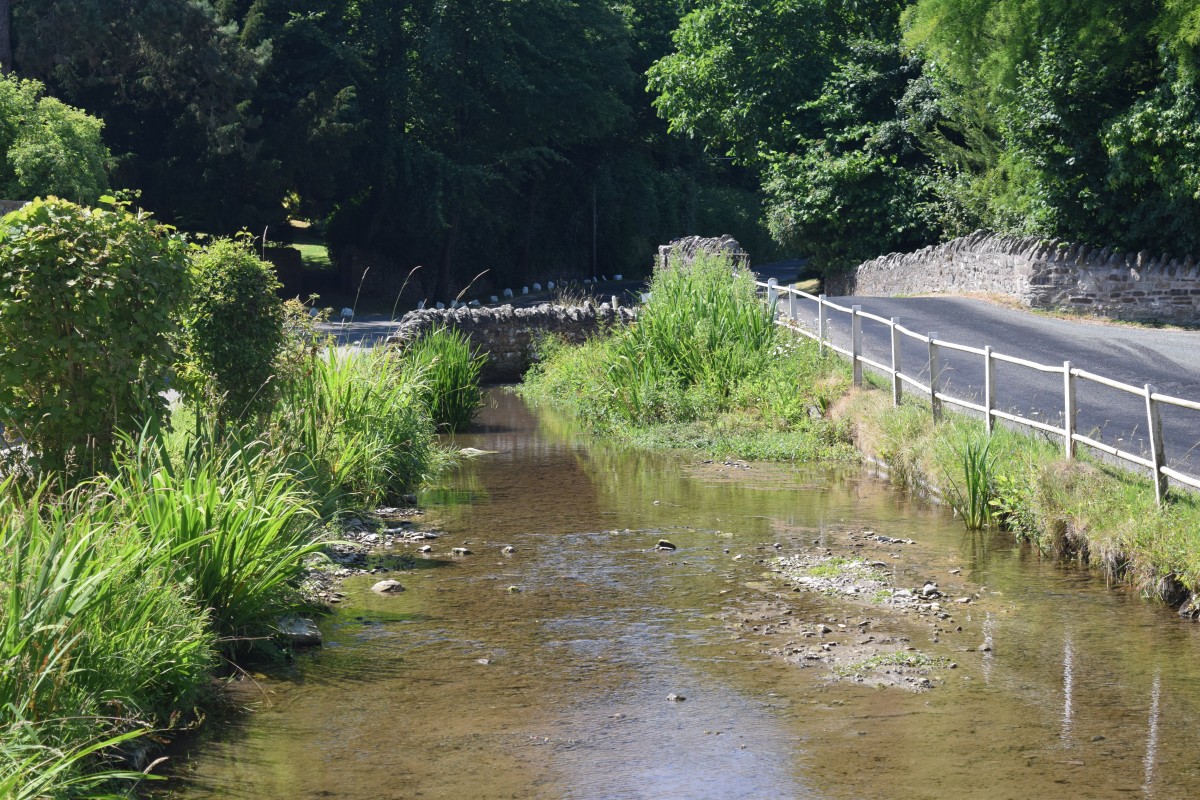
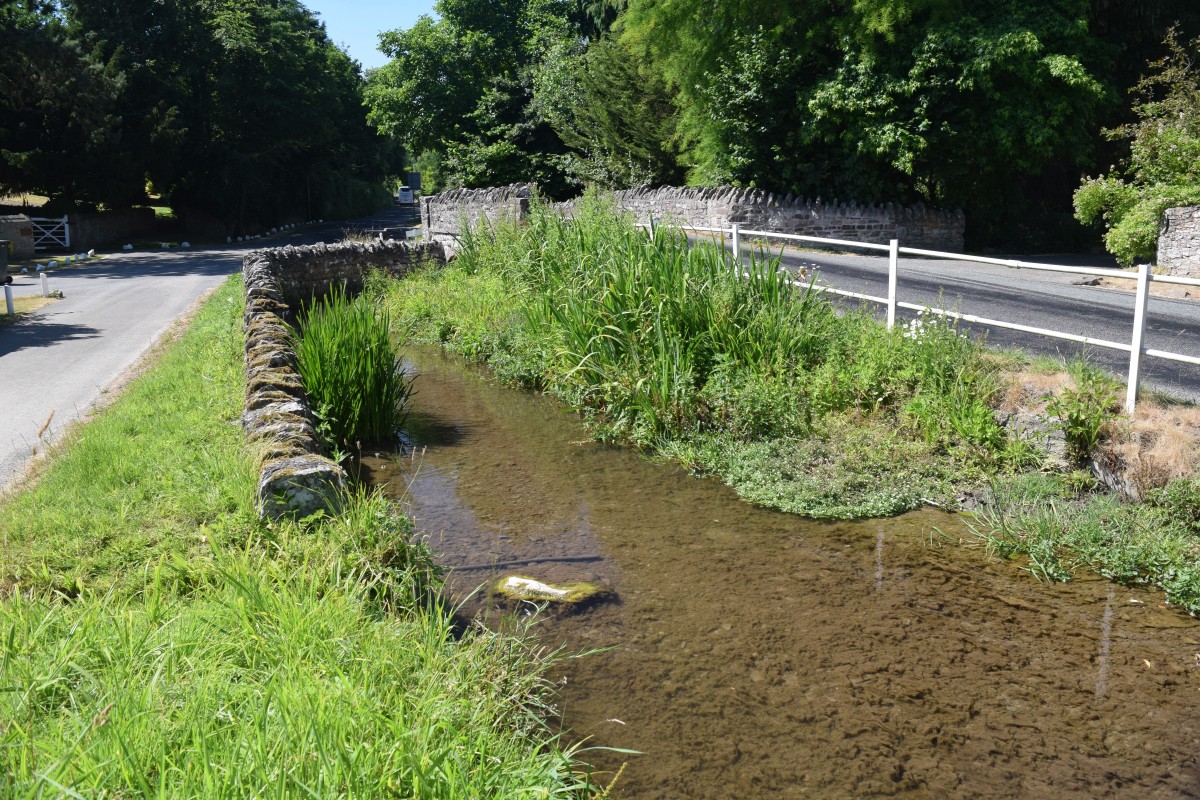
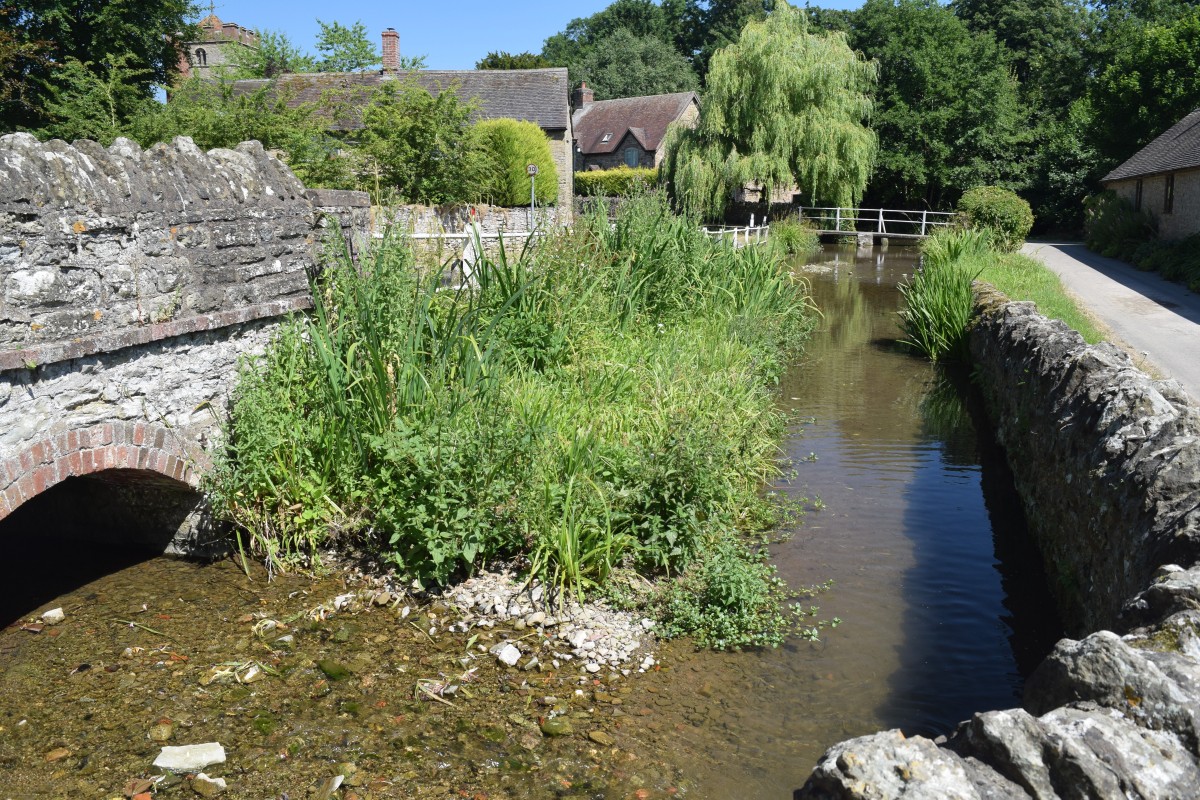
The same three views taken after the work was carried out
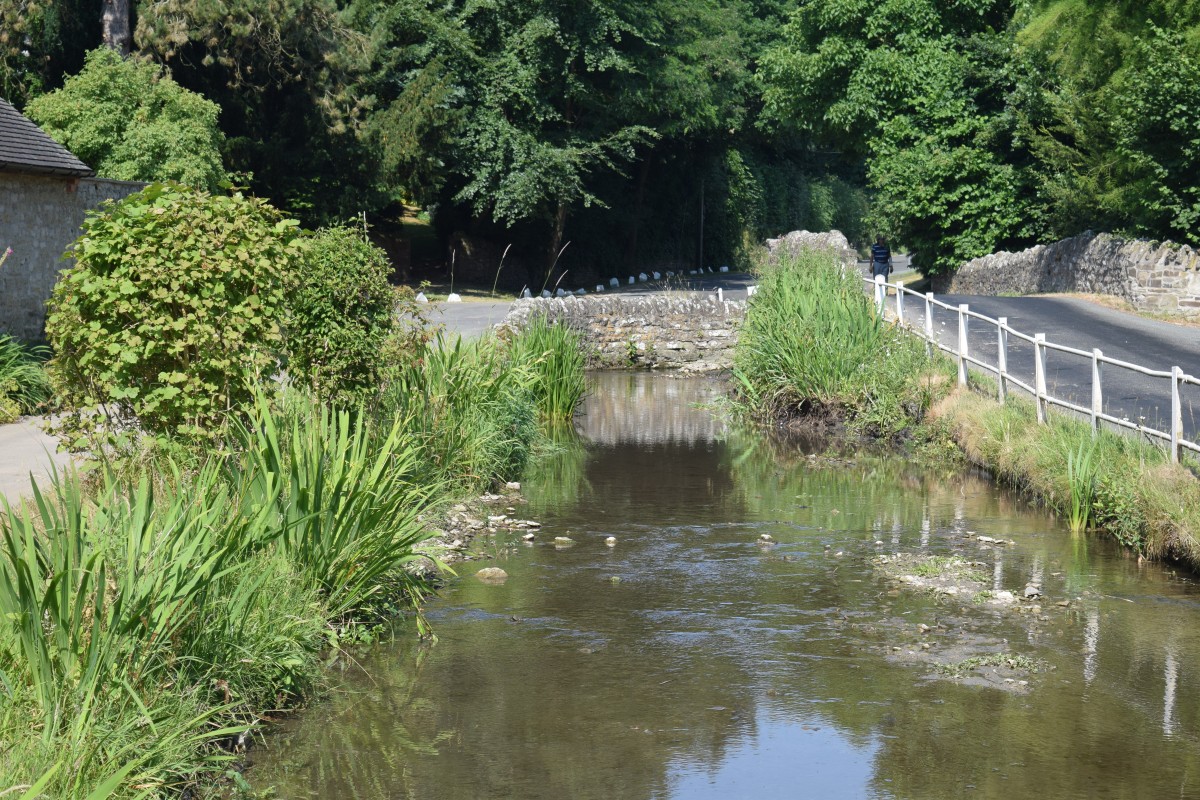

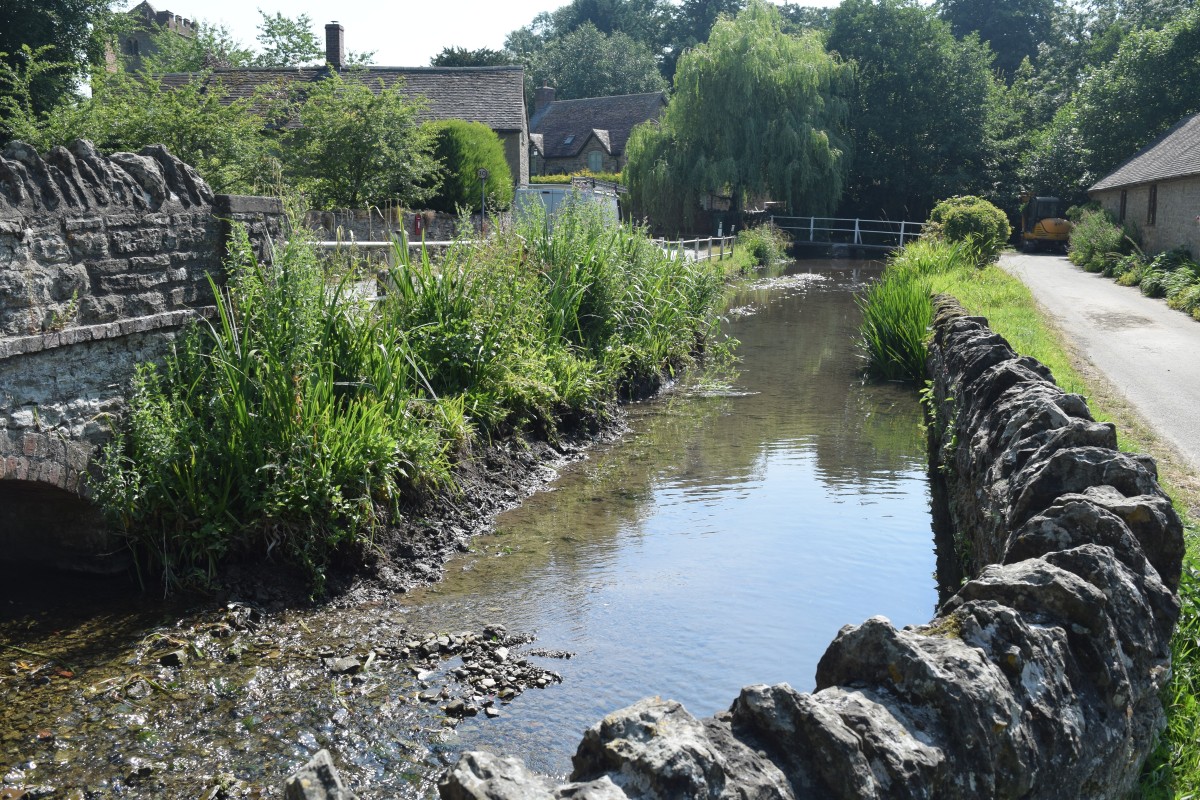
Work in progress
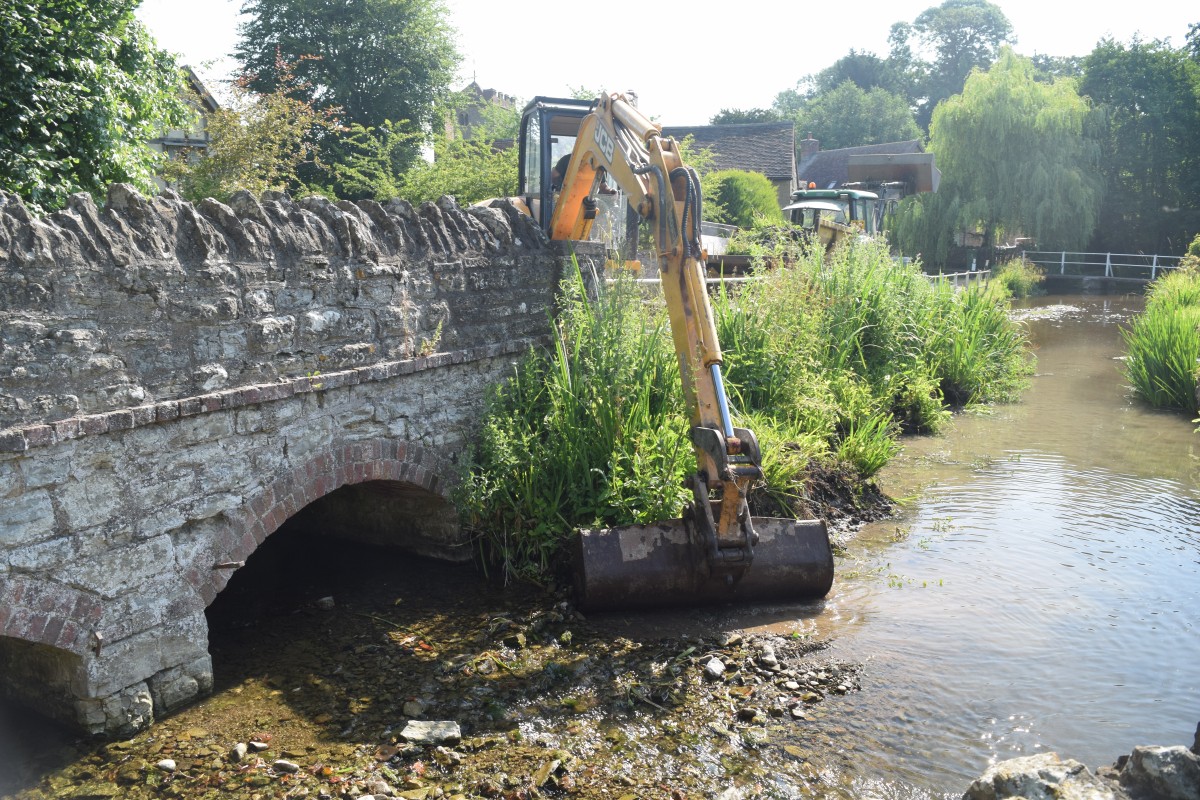
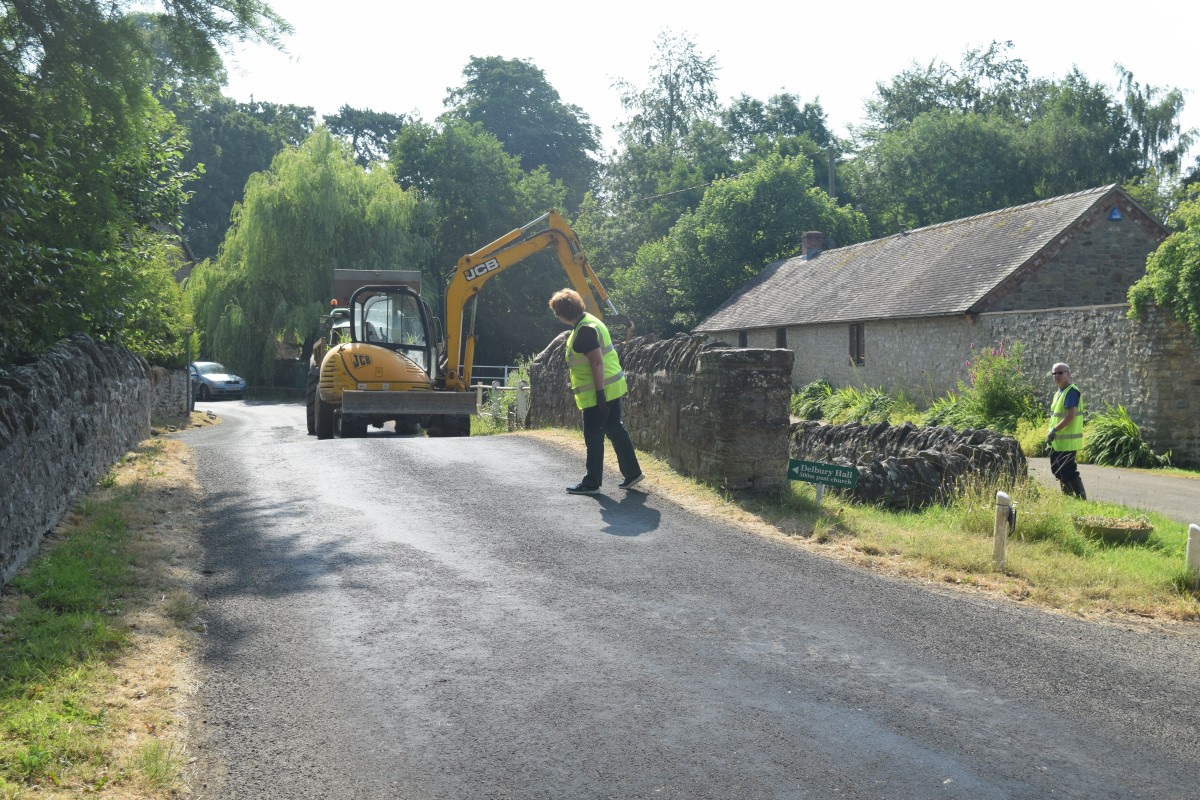
Geoff Neden
04/07/2018
Diddlebury Parish Flood Action Group
Diddlebury Parish Flood Action Group
Progress report # 10 – June 2018
Since the last Report in January, we have had a successful stream Working Party which has cleared the stream bed through the village of excess weed growth and encroachment from the banks.
Work on de silting the Diddlebrook below the Mill Lane bridge is now scheduled for mid June in accordance with Guidelines from the EA. The necessary Consent has been issued.
In the absence of funding from any other Agencies and to avert the risk of flood damage, the DPC have kindly agreed to fund repair works to the wall beside the Mill Lane bridge as this is in a poor state of repair. The work will take place in July when the flows are low.
We can confirm that all the 50 leaky dam structures have now been completed in the Diddlebrook catchment. These were tested by the storm which occurred in the evening of Thursday 31st May. The water level at the depth gauge by the B Road bridge is shown in the graph below.
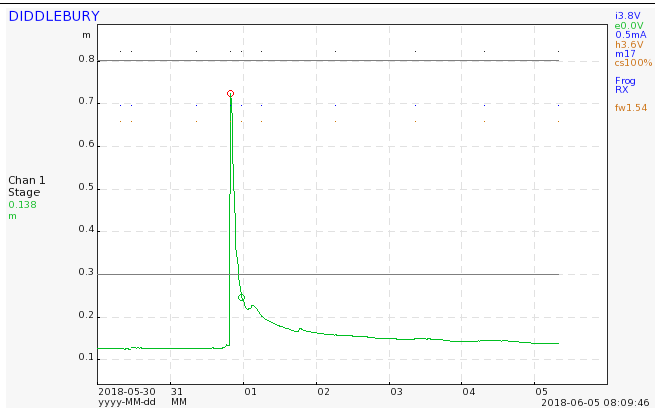
Despite quite serious flooding in Middlehope which is above the dams (estimated to have been a 1 in 20 year event and illustrated below (images by Laurie Robinson)), the stream remained within its banks through Diddlebury village. In our opinion, such severe rainfall would have resulted in flooding within the village in the absence of the 50 new leaky dams now in place below Middlehope.
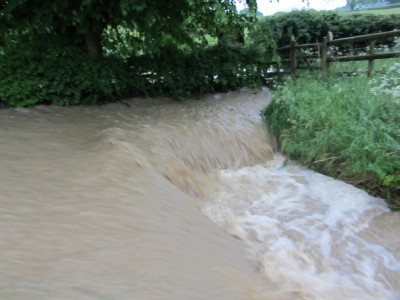
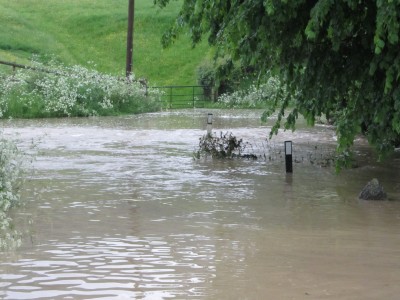
Work on designing and constructing new such structures is now proceeding in the Pye Brook catchment around Clee St. Margaret and it may also be possible to add further ones upstream of Middlehope in the future.
Several of our members have volunteered to take part in a litter picking exercise sometime in June along local watercourses as part of a scheme throughout the Severn Catchment.
One of our members attended a Road Show on Natural Flood Management organised by the Environment Agency in Worcester last month and we will be commenting on this in our next Progress Report
Geoff Neden
5th June 2018
Diddlebury Parish Flood Action Group
Diddlebury Parish Flood Action Group
The Diddlebury ducks are back! Under the new Data Protection Regulations, we are unable to identify each duck by name or to provide their web address.
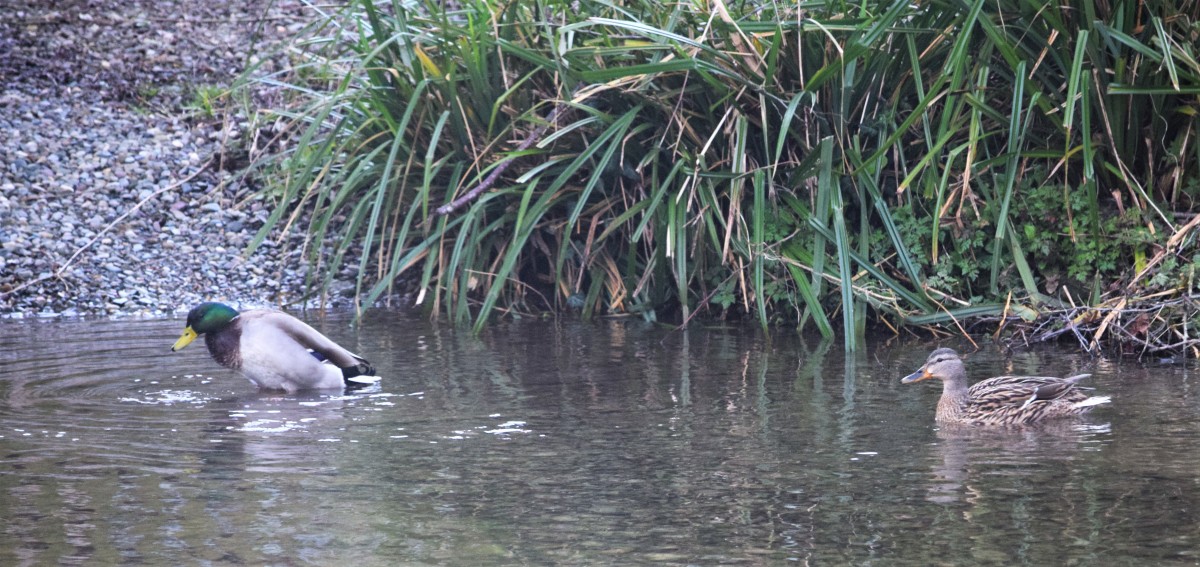
Geoff Neden
Diddlebury Parish Flood Action Group
31st March 2018
Diddlebury Parish Flood Action Group
Progress report # 9 – March 2018
Since the last Report in January, we have campaigned against the proposed swingeing increases in Consent Charges proposed by the Environment Agency for works on Main Rivers. Although the watercourses we deal with are Ordinary Watercourses whose Consent Charges are regulated by Shropshire Council, the construction of our leaky dams is carried out and funded on our behalf by the Shropshire Wildlife Trust (SWT). The SWT carries out many works on Main Rivers and the increased charges would have involved them in added costs amounting to nearly £200,000 pa in the Corvedale alone. Spending all this money on Consents would have meant that much less money being available to actually build things – not just in Main Rivers but also in Ordinary Watercourses such as the Diddle Brook as all their funds come from the same pot.
This was raised at the meeting held in Culmington in February with Mr Philip Dunne, our local MP and the DPC subsequently wrote in with their support during the Consultation Period. There was much concern over the whole Country amongst groups of volunteers such as ours and I am pleased to be able to report that the Government listened. In the recently published list of new Consent Charges, following the Consultation Period, the Consent Charges for our type of work have not been increased.
We have also written to Mr Dunne and our local Shropshire Councillor Cecilia Motley regarding the current almost complete lack of maintenance of drainage structures in the Parish. Mr Dunne has conveyed our concerns to the Council and we await their response.
In the meantime, in the absence of funding from any other Agencies and to avert the risk of flood damage, the DPC have kindly agreed to fund repair works to the wall beside the Mill Lane bridge as this is in a poor state of repair.
Roads Dept did eventually clear the blocked pipe near Patch Cottage in Sutton and water is now getting away.
We can confirm that all the 50 leaky dam structures have now been completed in the Diddlebrook catchment. Work is now proceeding in the Pye Brook catchment.
Work on de silting the Diddlebrook below the Mill Lane bridge is scheduled for early May.
Several of our members have volunteered to take part in a litter picking exercise sometime in June along local watercourses as part of a scheme throughout the Severn Catchment.
Geoff Neden
31st March 2018
Diddlebury Parish Flood Action Group
Diddlebury Parish Flood Action Group
Below are some images of leaky dams in action showing how they do have a significant effect on slowing the flow.
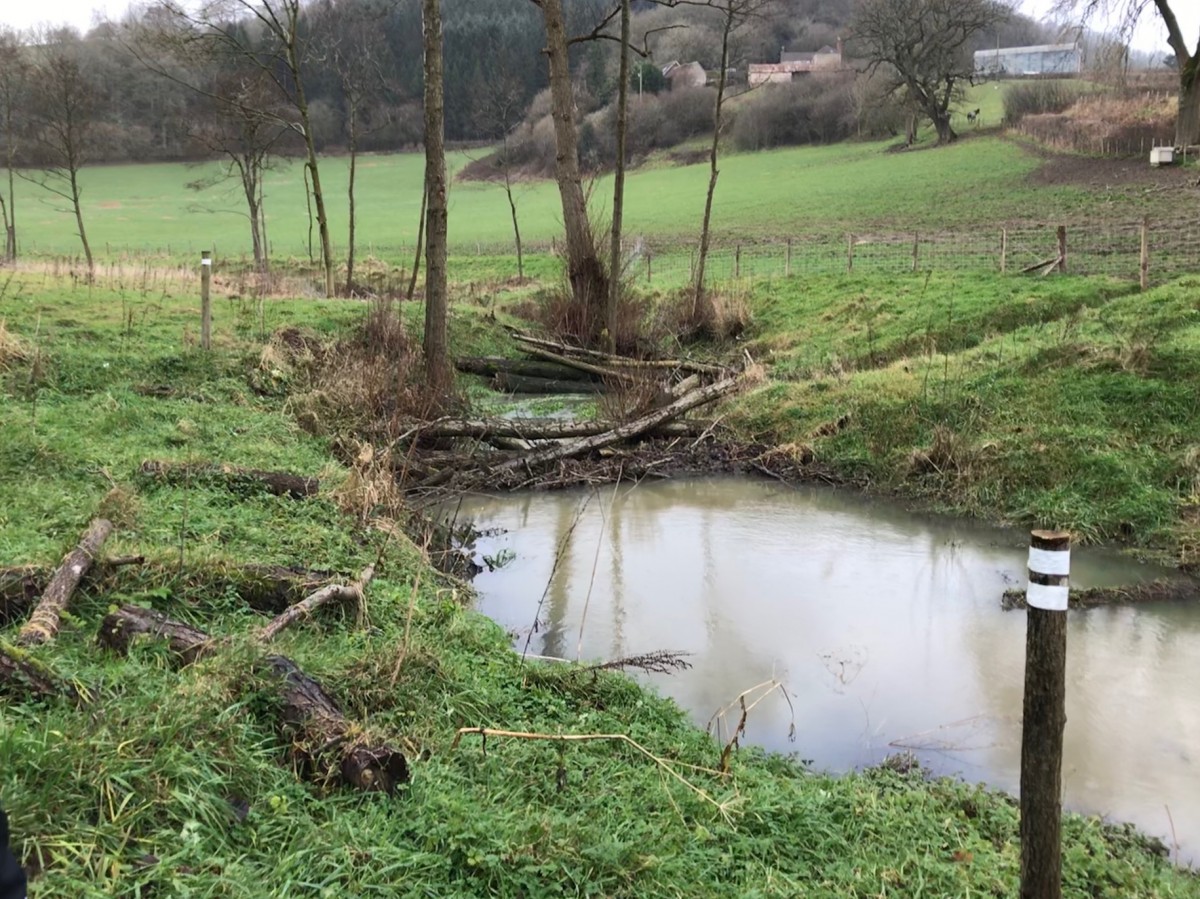
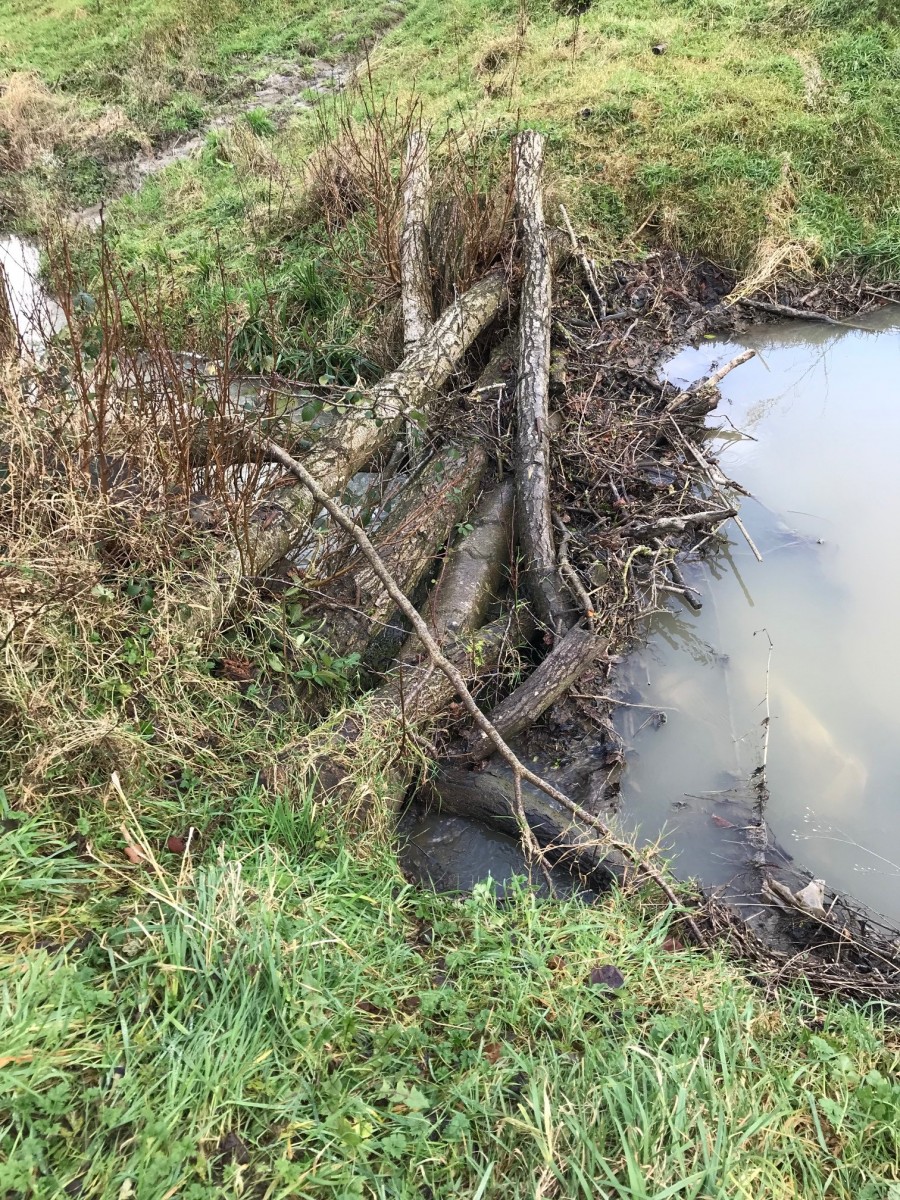
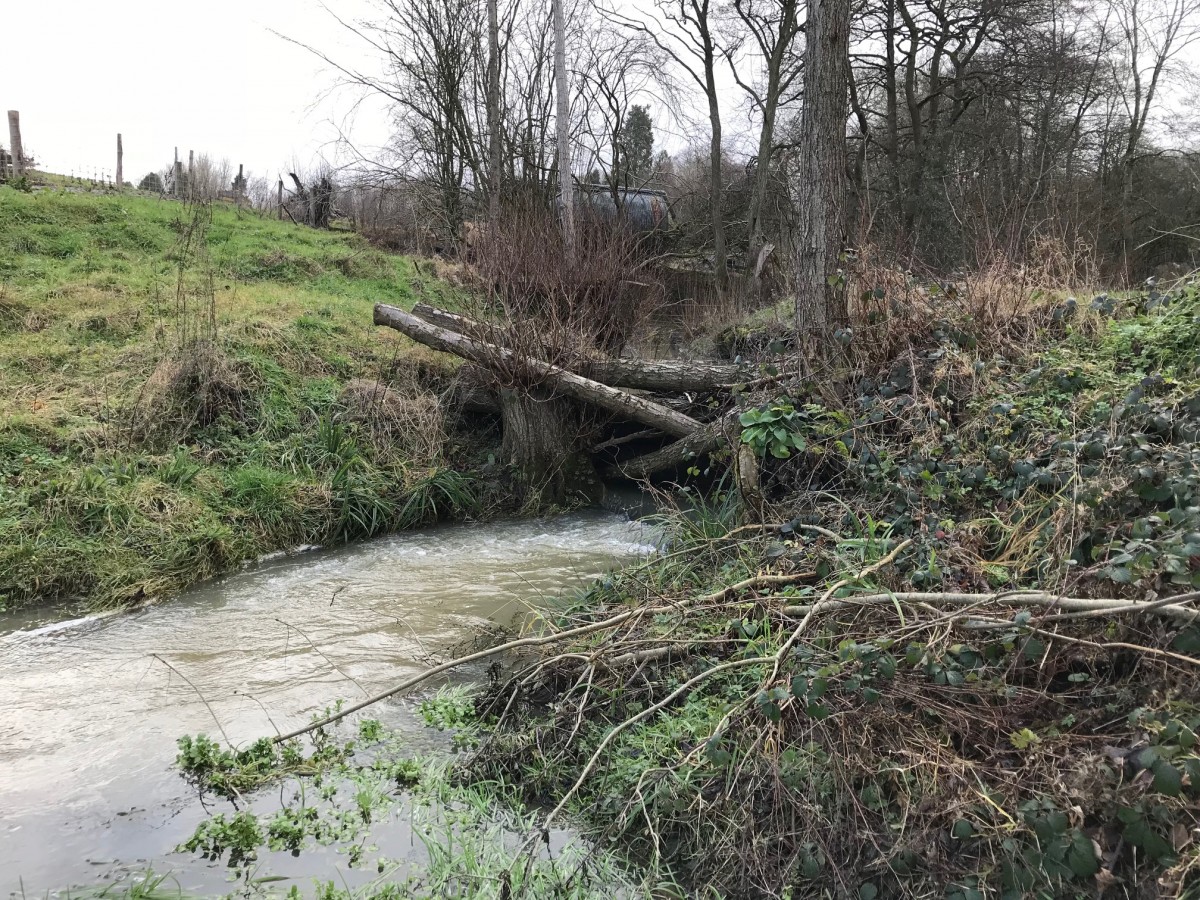
Geoff Neden
March
2018
Diddlebury Parish Flood Action Group
What we do and how we can help
Flooding of your house, business premises or farm yard can be devastating. Whilst it is not possible to completely eliminate the risk of flooding, there are things which can be done to lessen its dire effects.
1) Slowing the Flow to reduce flood peaks
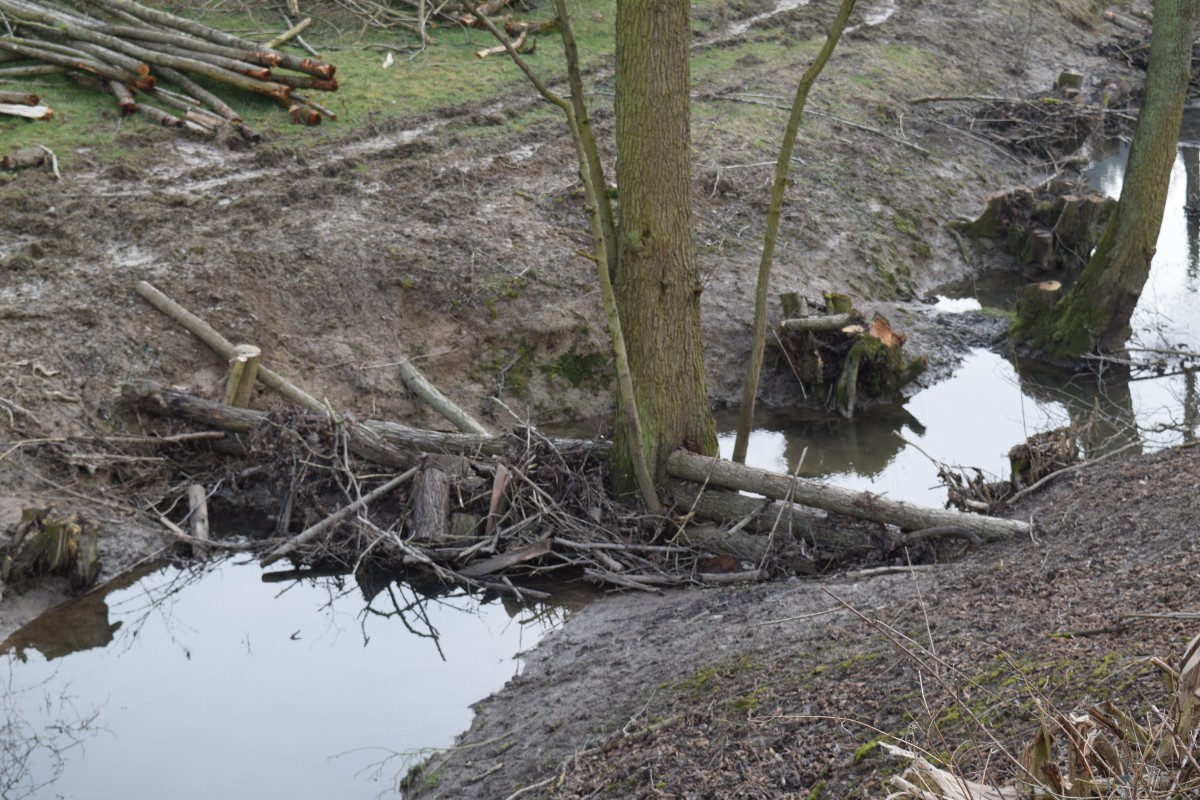
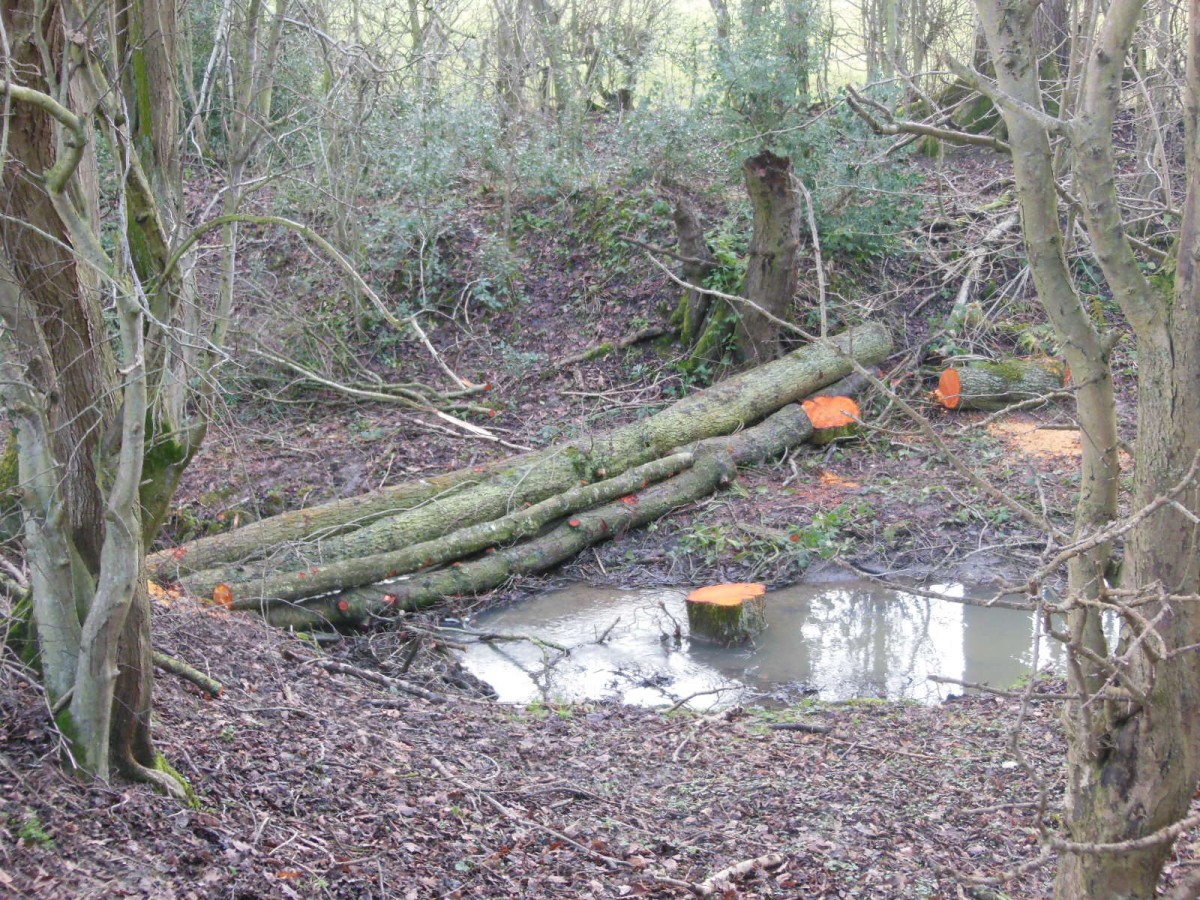
Small works carried out at a small cost are being constructed by the Shropshire Wildlife Trust on our behalf in the upper catchments of the River Corve and its tributaries and these will, by temporarily storing flood water, reduce the peak flood flows downstream.
Such works can include leaky dams, off course storage, hedge and tree planting, reduction of cattle poaching, aeration of soils so that they can absorb more water and so on. Apart from their prime purpose in flow reduction, such works can also result in improved farmlands with higher productivity.
These installations may sound so small as to be ineffective but when they are inserted in large numbers – 130 leaky dams below Wilderhope for example – they have a cumulative effect. Although such techniques – collectively known as Natural Flood Management – are quite new, such data as has been collected to date indicate that flood peaks can be reduced by around 10%. This can translate to a local flood peak level being reduced by say 3 or 4 inches and that could make the difference between your property being flooded or not.
None of this work could be carried out without the permission of the land owners.
2) Clearing the watercourses
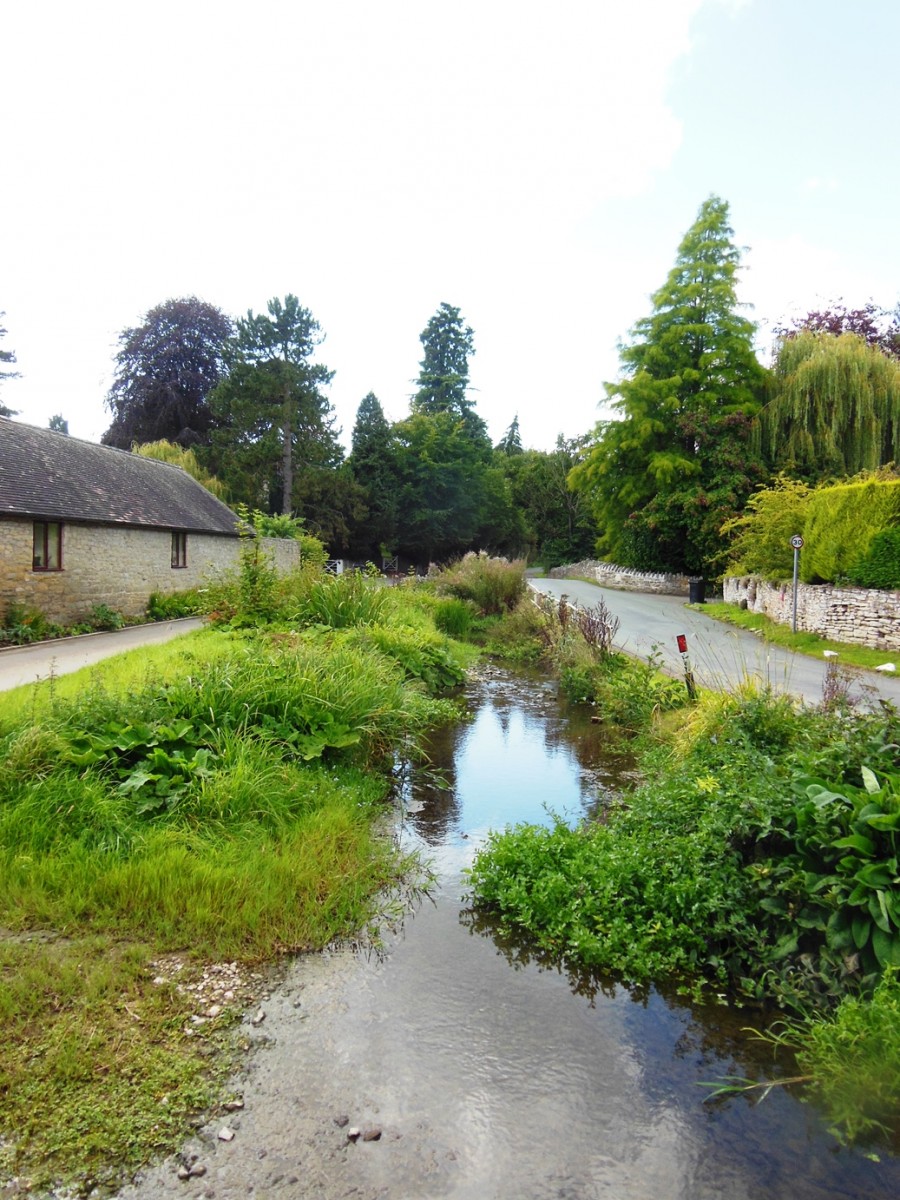
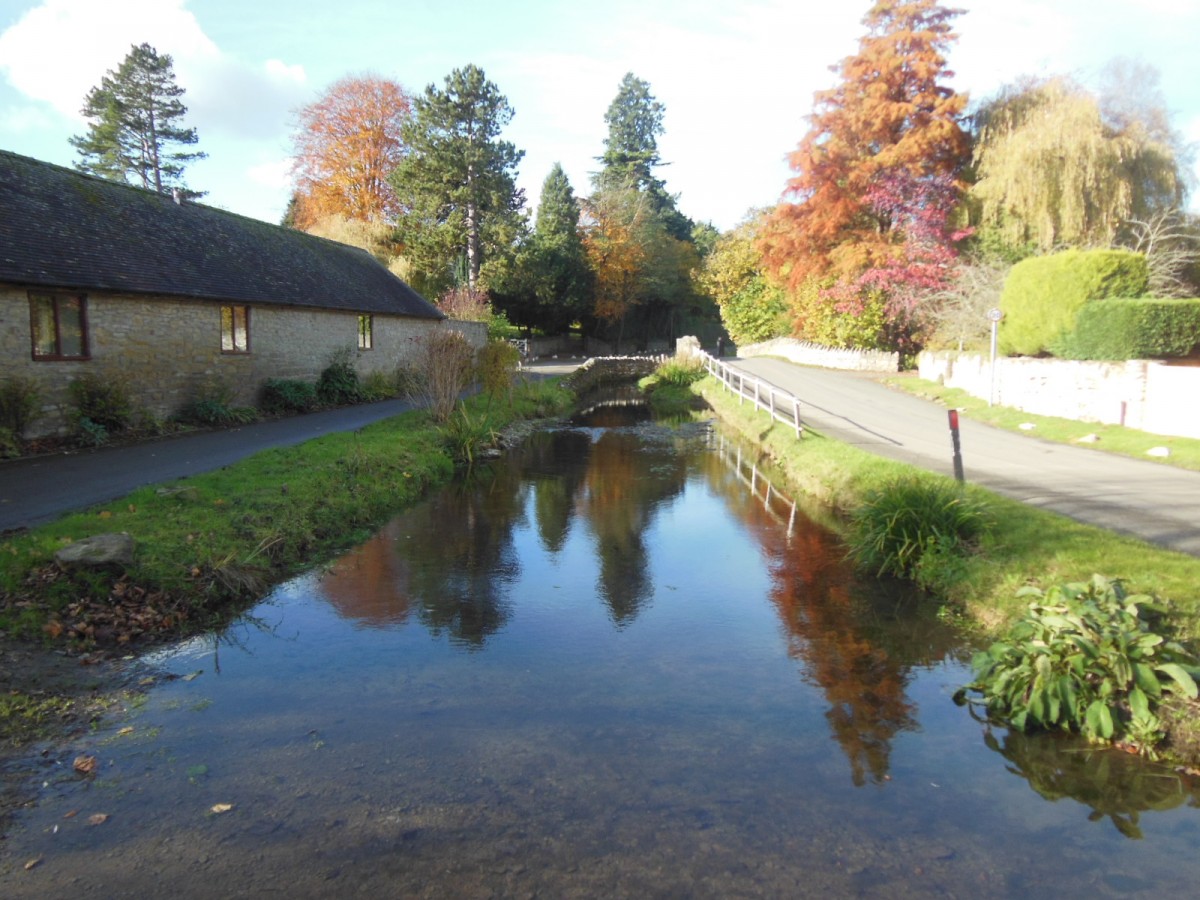
Before clearance After clearance
Below a certain point in the catchment of each tributary, it becomes futile to build items such as leaky dams as by then, flood flows would wash them away. As streams enter built up areas therefore, a different approach is adopted whereby the existing watercourses are kept in such a condition that they can cope with as large a flood flow as possible. This means firstly keeping them clear of rubbish – both the stream beds and any associated culverts, drains and bridges. The stream beds and banks should be maintained by removing any build ups of silt in the beds and also taking back any banks encroaching into the stream bed – both by silt build up and excessive weed growth – so as to maintain the full stream width. Streams work best when they are straight so small kinks should if possible be straightened out. Such work will maximise the flow capacity of the watercourses. The FAG arranges regular working parties of volunteers to carry out all this maintenance work.
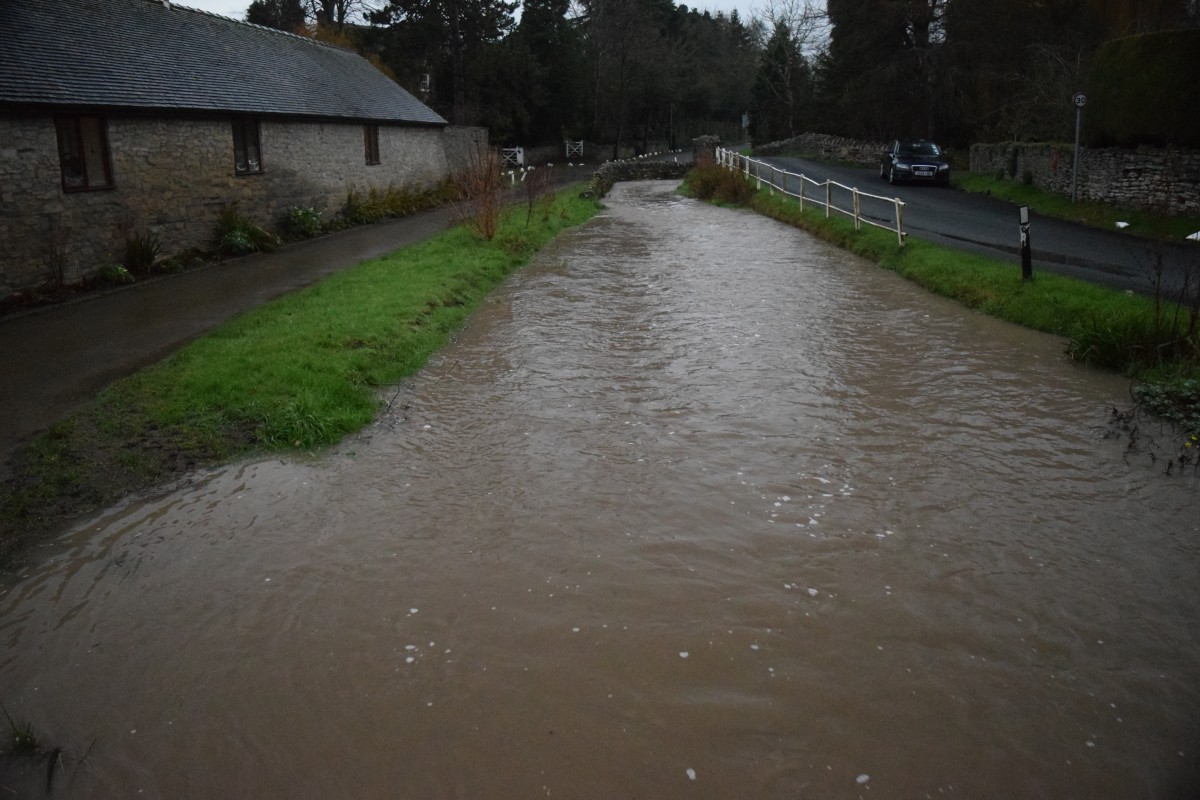
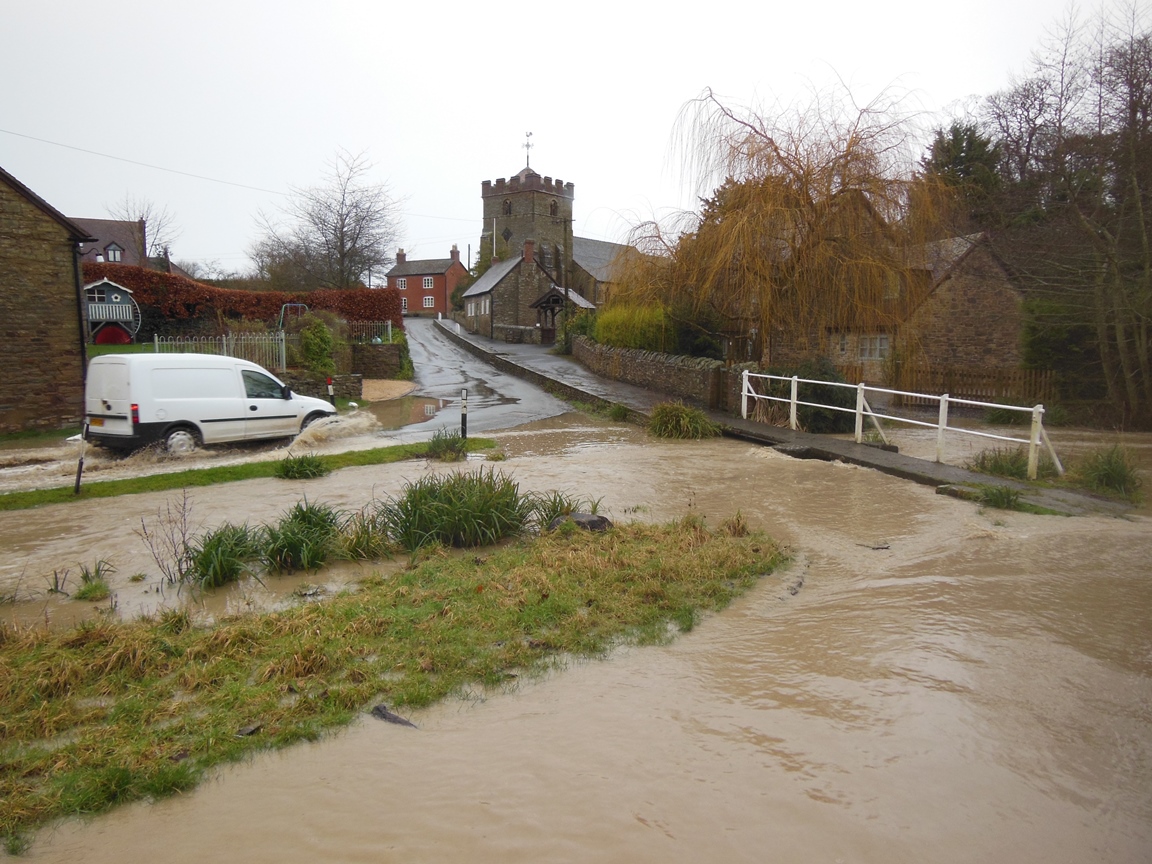
Better this… than this
3) Self help
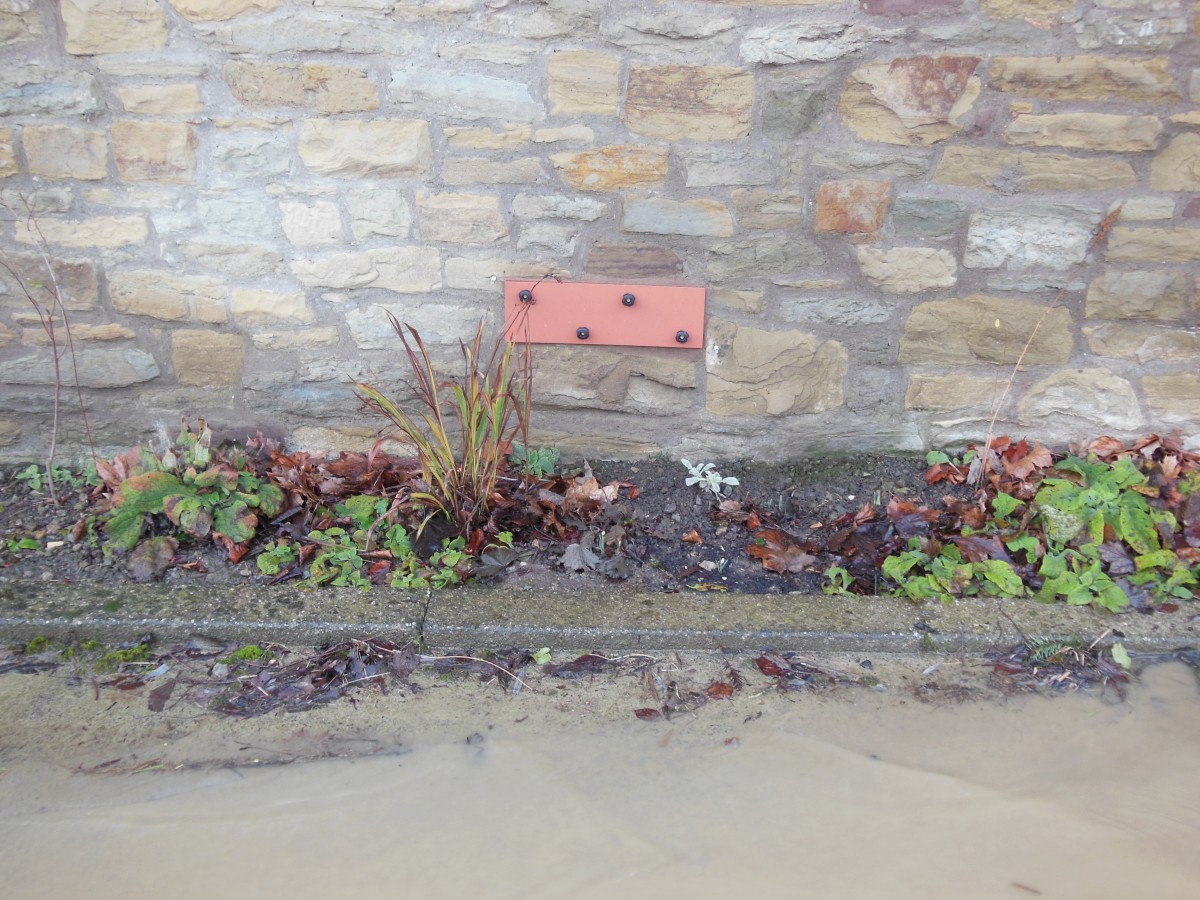
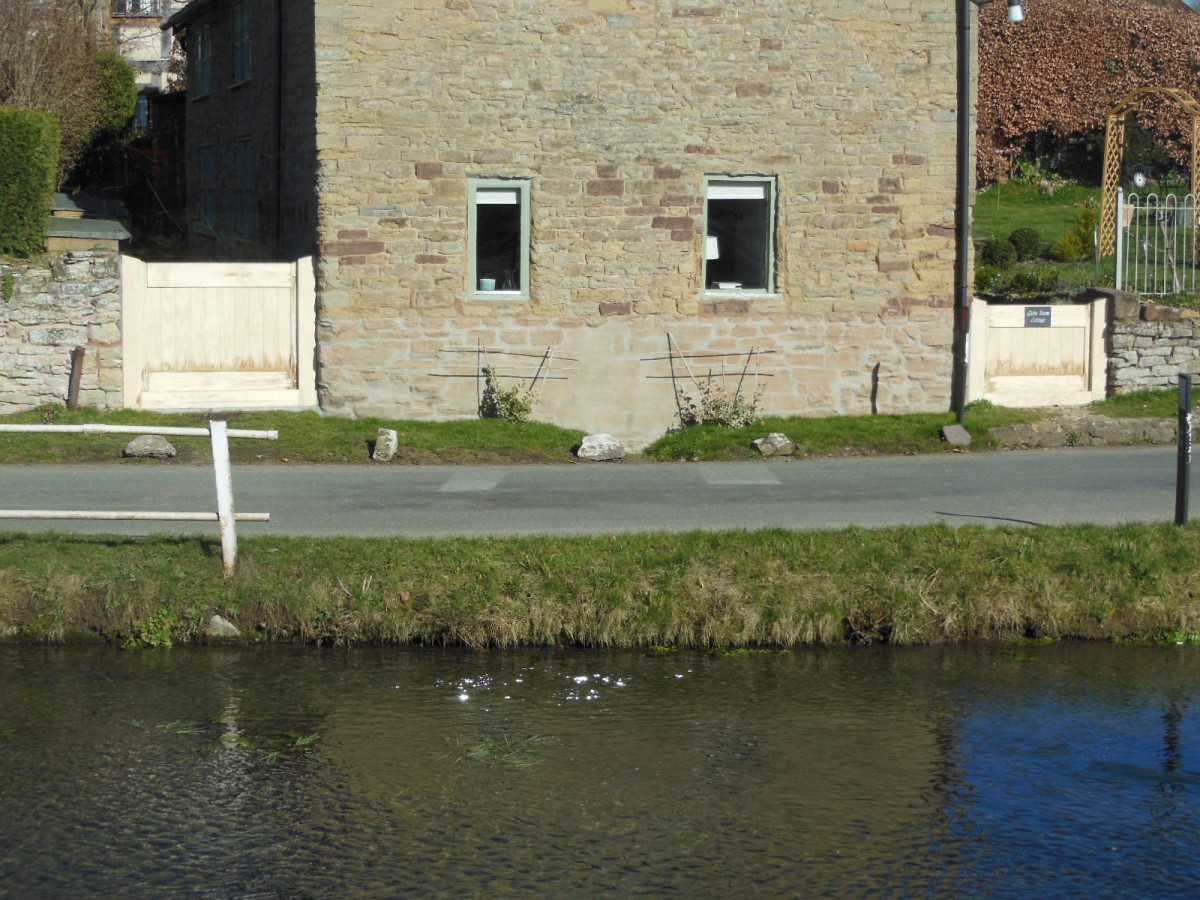
Air brick covers Flood gates and waterproof rendering
If, despite all the above, water overspills stream banks and flooding results, the onus is on the property owners to protect their properties. The Shropshire Council will on request send out a survey team to assess your property and make recommendations on how best to protect it. Grants are available for some items such as flood gates and waterproof rendering and sand bags are generally available locally on request to the Shropshire Council. There are depth gauges installed on the Diddlebury and Culmington Bridges and when flow levels reach a pre - set alarm level, a message is sent out to the local FAG. If the flow continues to rise and triggers a second higher alarm level (which has been set at a level known by experience to cause flooding), a further message is sent and the FAG can alert those vulnerable properties identified on their Flood Resilience Plan to give them time to erect their defences.
4) Insurance
If you live in a house that has previously flooded or that is shown to be within flood risk areas on the EA mapping, your Insurance Company may decline Cover or set a very high Premium. The Government has set up a flood insurance scheme called Flood Re which will offer reasonably priced cover to such properties. Details are available from the FAG.
5) Permissions
All the smaller tributaries of the River Corve – the Diddle Brook, Seifton Brook, Pye Brook etc are what is known as Ordinary Watercourses and come within the jurisdiction of the Shropshire Council. The Corve itself and some of the lower parts of the tributaries are known as Main Rivers and come within the jurisdiction of the EA. The work of the FAG’s falls mostly within Ordinary Watercourses and hence permissions are needed from the Shropshire Council before any works in the stream beds are carried out. Each such permission is called an Ordinary Watercourse Consent (OWC) and lasts for 3 years. The FAG can give advice on this aspect and information is also available on Shropshire Council’s website; http://shropshire.gov.uk/drainage-and-flooding/development-responsibilit...
6) Assistance and coordination
The FAG receives much help, encouragement and support from several different organisations and Agencies including:
• Diddlebury Parish Council
• Shropshire Wildlife Trust
• National Flood Forum
• Shropshire Council
• Environment Agency
• Severn Trent Water
• The local farming community
• Local land owners
Without this support, we could not function.
There exists an embryo Corvedale Forum which will eventually link up all the existing and future FAG’s in the Corvedale to enable them to share common problems and solutions.
We maintain a Flood Action Plan which is kept up to date and which forms the Agenda for our regular Multi Agency Meetings.
With the kind assistance of the Diddlebury Parish Council, we vet all incoming Planning Applications in regard to flooding issues.
7) Contact us
We have a dedicated page in the Diddlebury Parish Web Site at: http://www.diddleburyparish.co.uk/flood-action-group
This is kept up to date with news on events, progress reports, requests for volunteers and so on.
There are also frequent articles in the Corvedale News.
I can be contacted at: gneden@googlemail.com.
Geoff Neden
March
2018
Diddlebury Parish Council Flood Action Group
As we have been lucky enough to have had a dry period with no flood events, I thought I should just remind us all of what a flood event looks like. The following images are from 2007, 2008 and 2012.
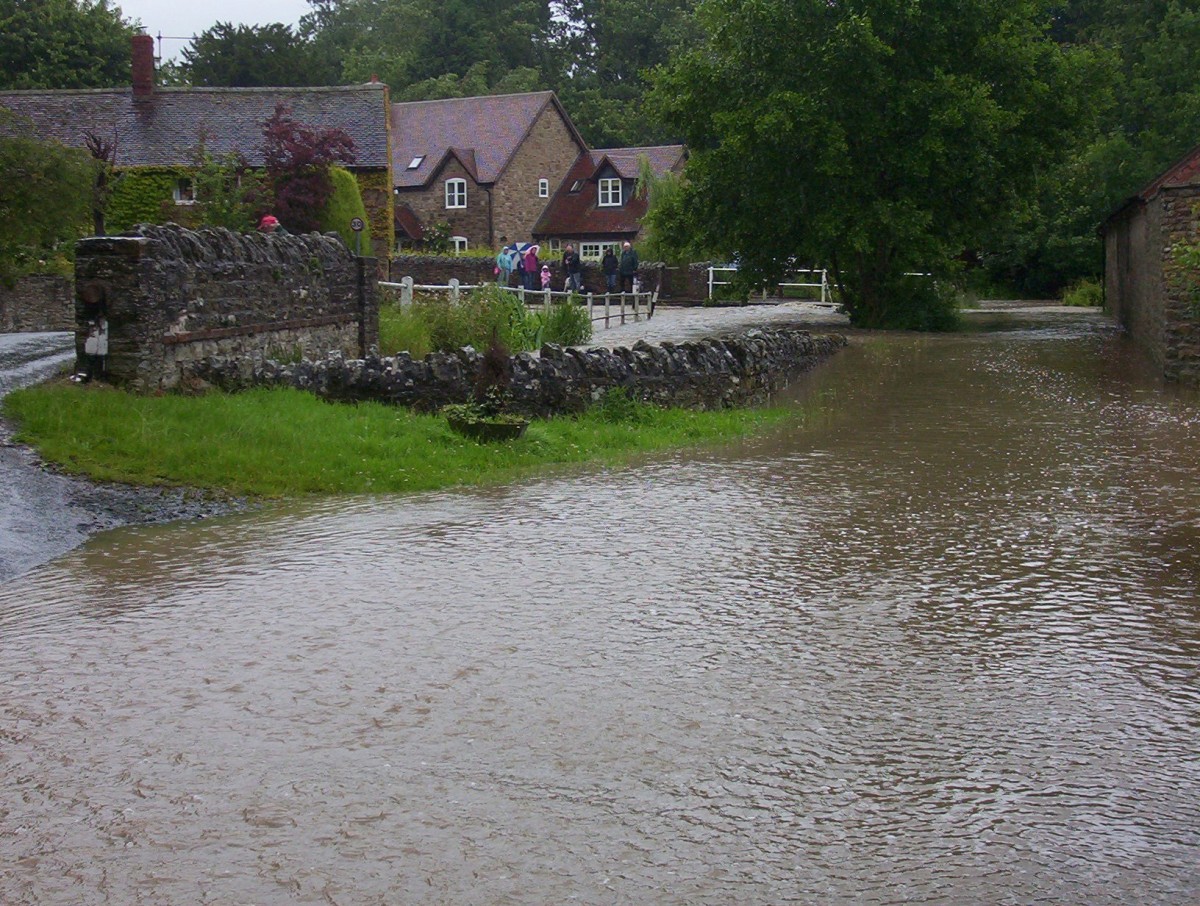
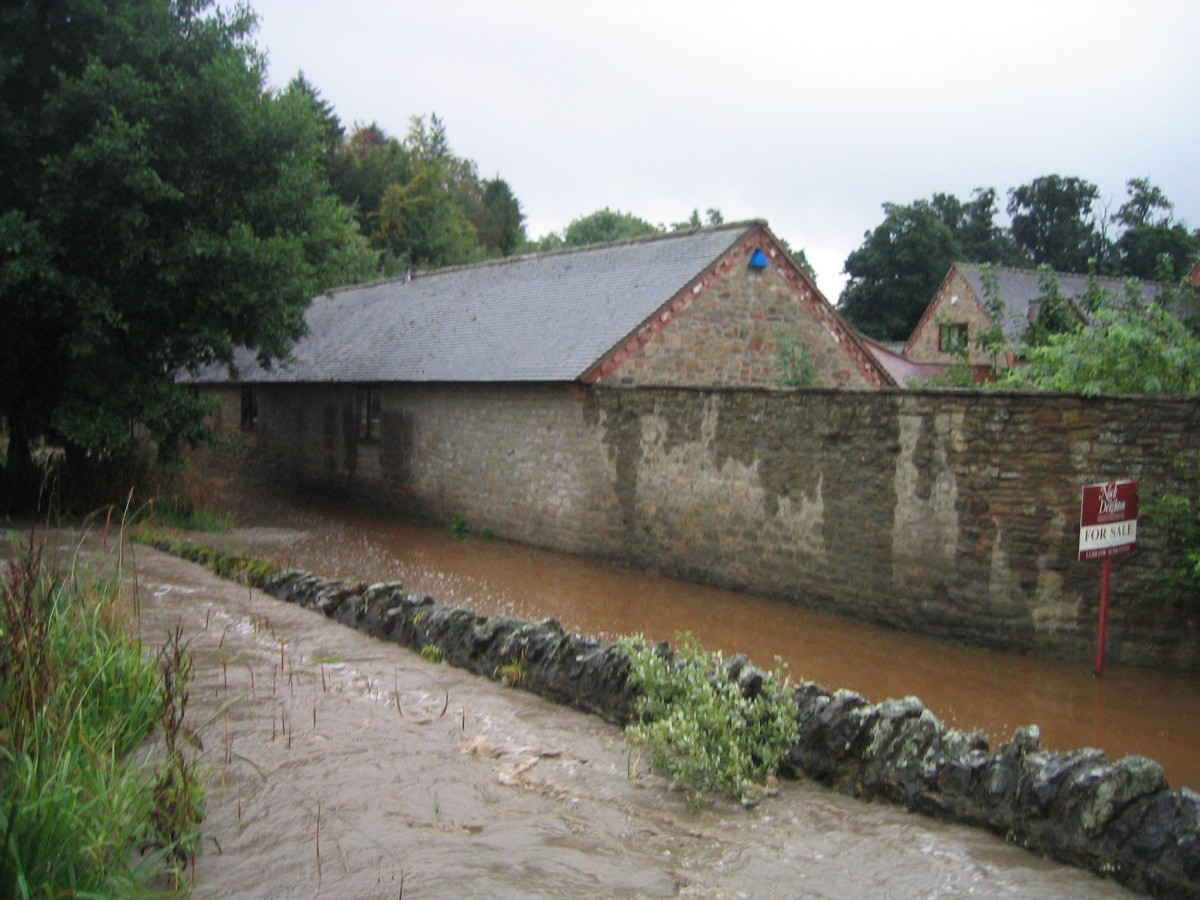
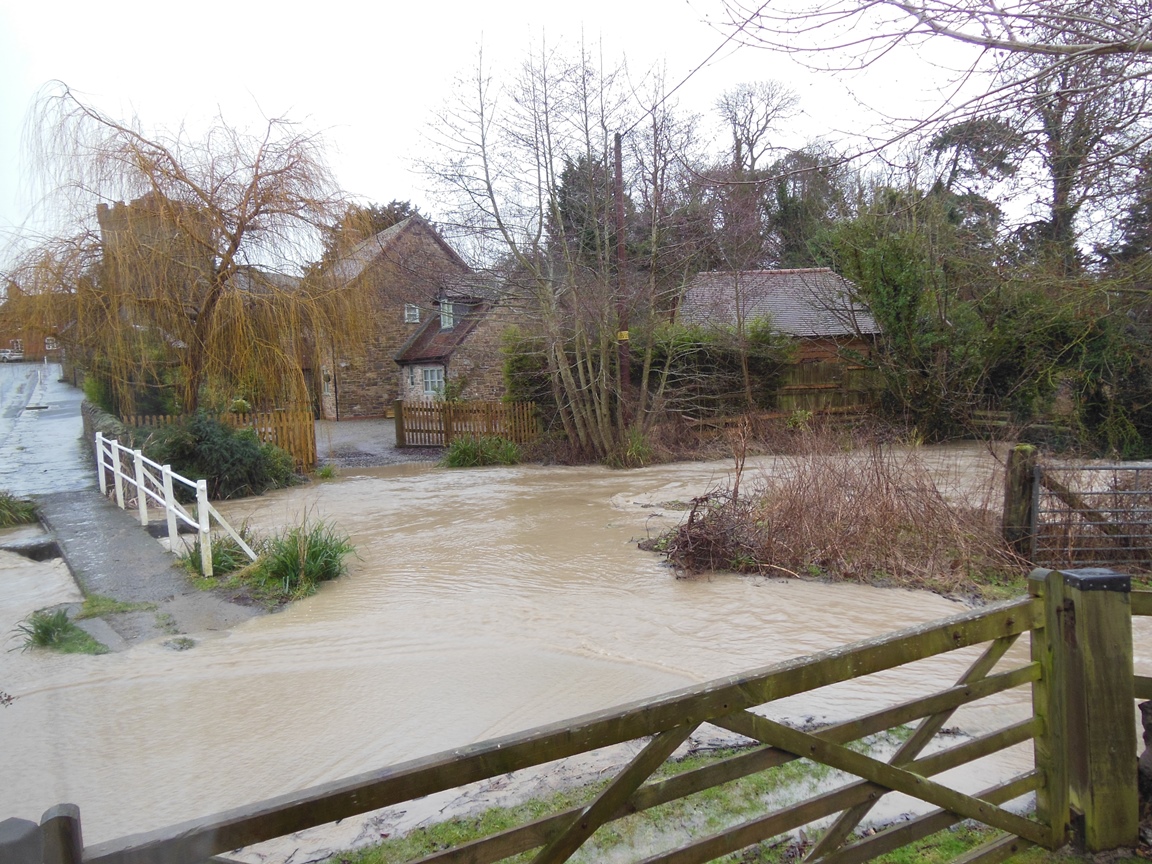
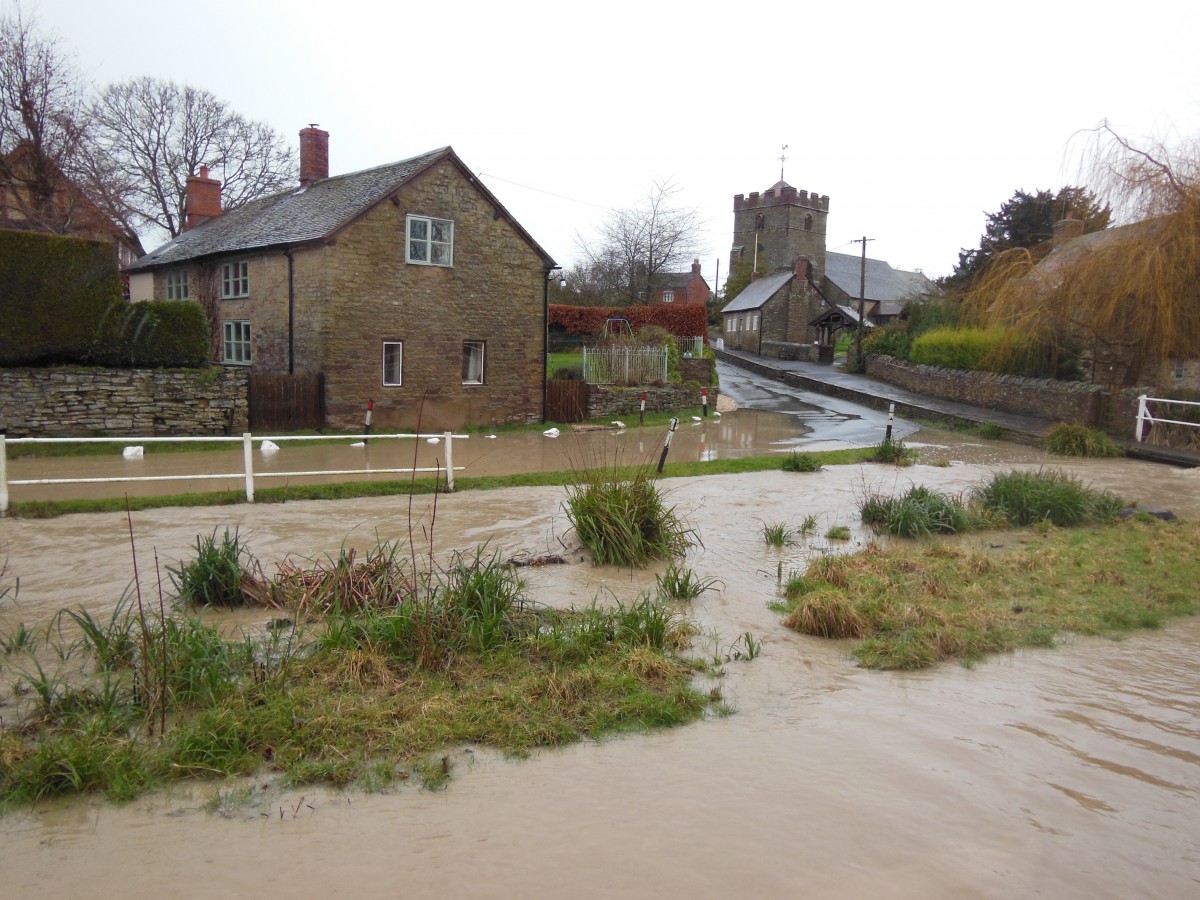
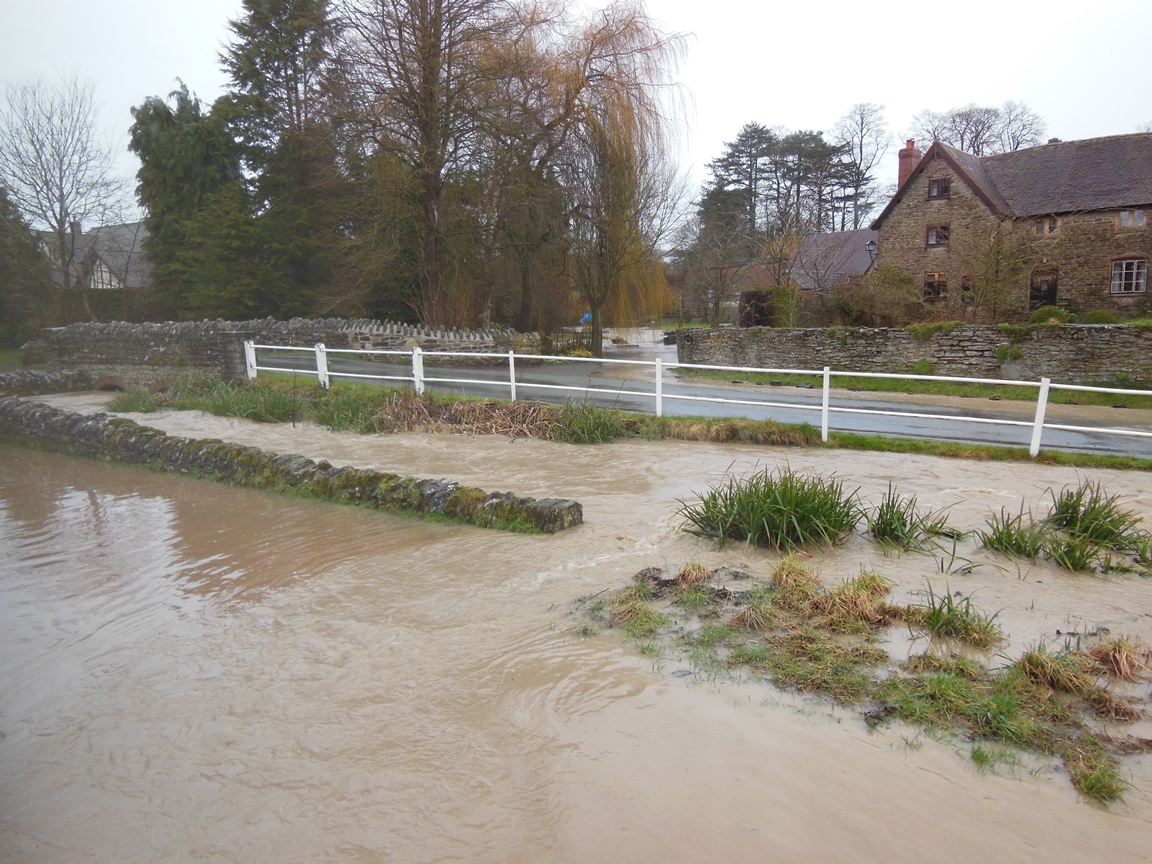
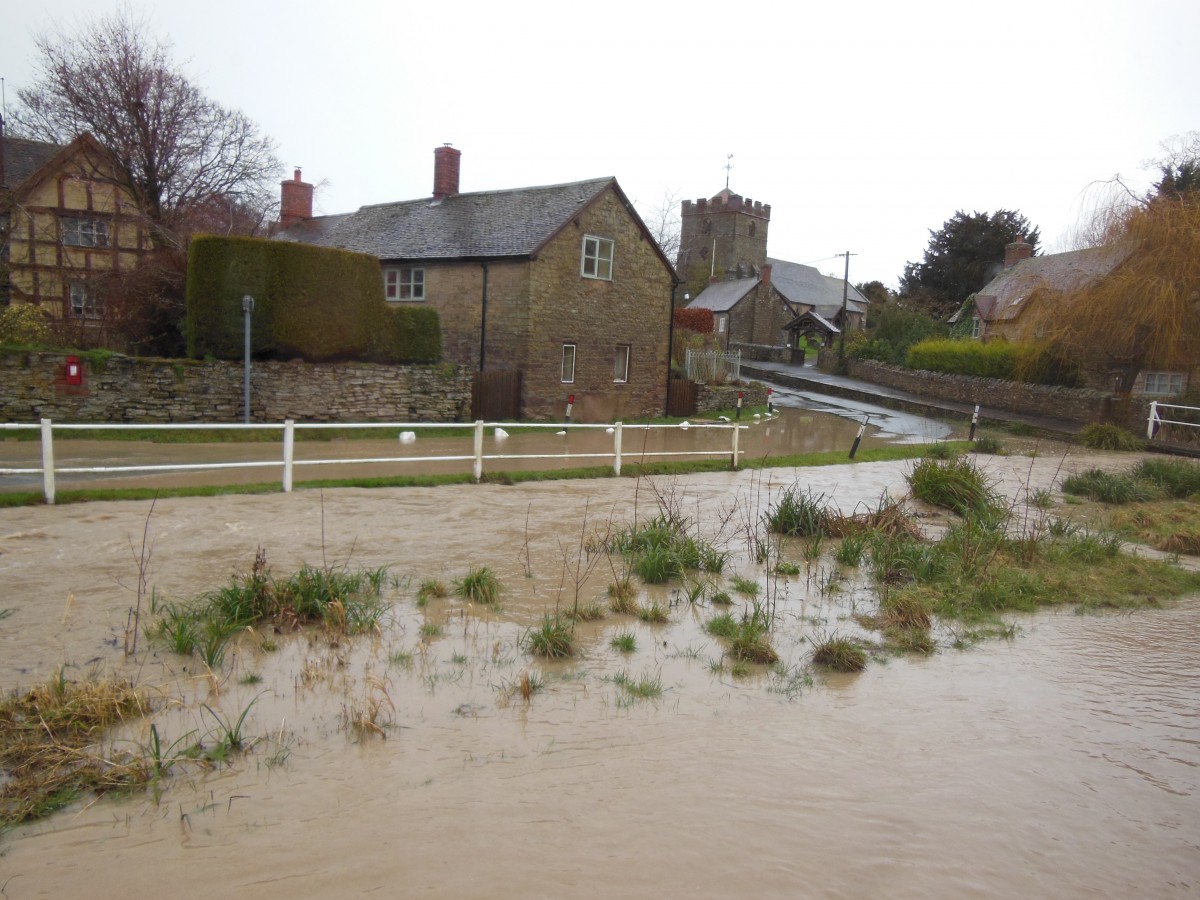
Diddlebury Parish Council Flood Action Group
Meeting held in Diddlebury Village Hall on Thursday 15th February 2018 on Shropshire Slow the Flow
Around 60 people attended the meeting including many members of the local farming community.
Andrew Osbaldison – catchment co-ordinator, Environment Agency - spoke first. He went through the new Farming Rules for Water which come into force on 2nd April. Afterwards, Andrew answered several questions from the floor.
Luke Neal – River Officer, Shropshire Wildlife Trust – then gave an overview of how Natural Flood Management, of which Slow the Flow is one important part, works and how effective it can be. He then gave an update on his present project in the Corvedale. Many leaky dams have already been installed in the Seifton Brook above Culmington and about 130 in the stream below Wilderhope Manor. Work starts on 21st February on the installation of 50 leaky dams in the Diddle Brook catchment above Diddlebury with the kind permission of Delbury Estates. Luke took several interesting questions from the floor and then showed an excerpt from the film “High Water Common Ground” which looks at Slow the Flow in practice around the Country and which included some clips about Culmington and Diddlebury.
Also present were James Turner of the Environment Agency and Anne Marie Jones who works with Catchment Sensitive Farming, run by Natural England. This organisation has grants available to carry out farm improvements with water quality benefits – yard concreting, feeder improvements, fencing, water storage etc. Her contact details are: anne-marie.jones@naturalengland.org.uk
I will provide further updates from time to time on the Corvedale Project.
Geoff Neden
16th February 2018
Diddlebury Parish Flood Action Group
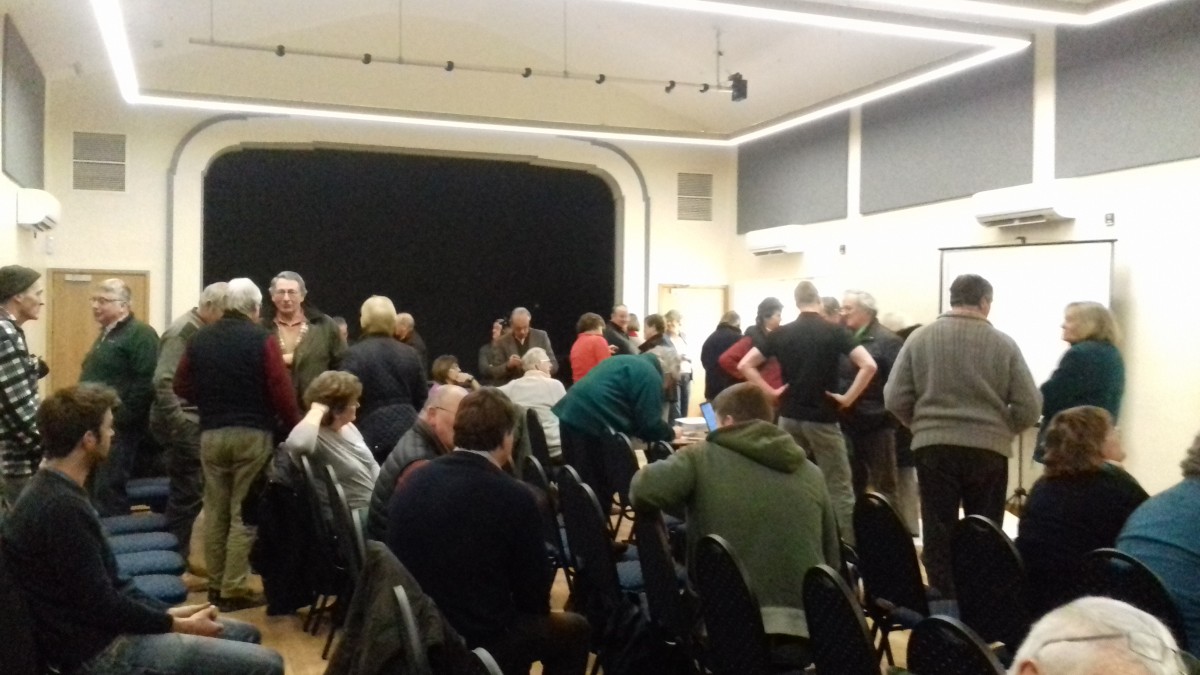
Diddlebury Parish Flood Action Group
News
The following images were taken at the recent meeting at Culmington Village Hall and subsequently at WestHope on the Seifton Bache when our local MP - Mr Philip Dunne, came to be briefed about the Slow the Flow concept and see it in action.
He subsequently wrote an Article on this topic which can be seen on the following link.
Slow the Flow in South Shropshire
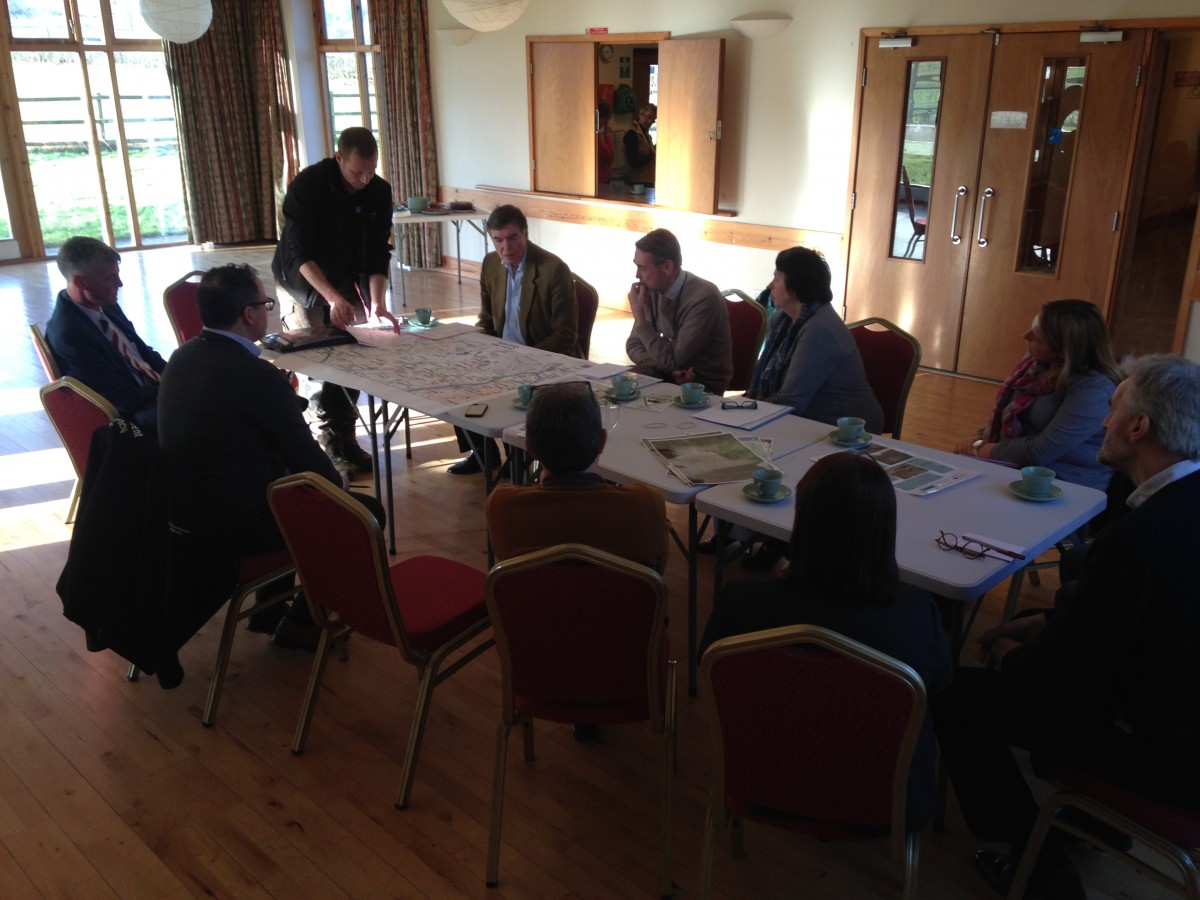
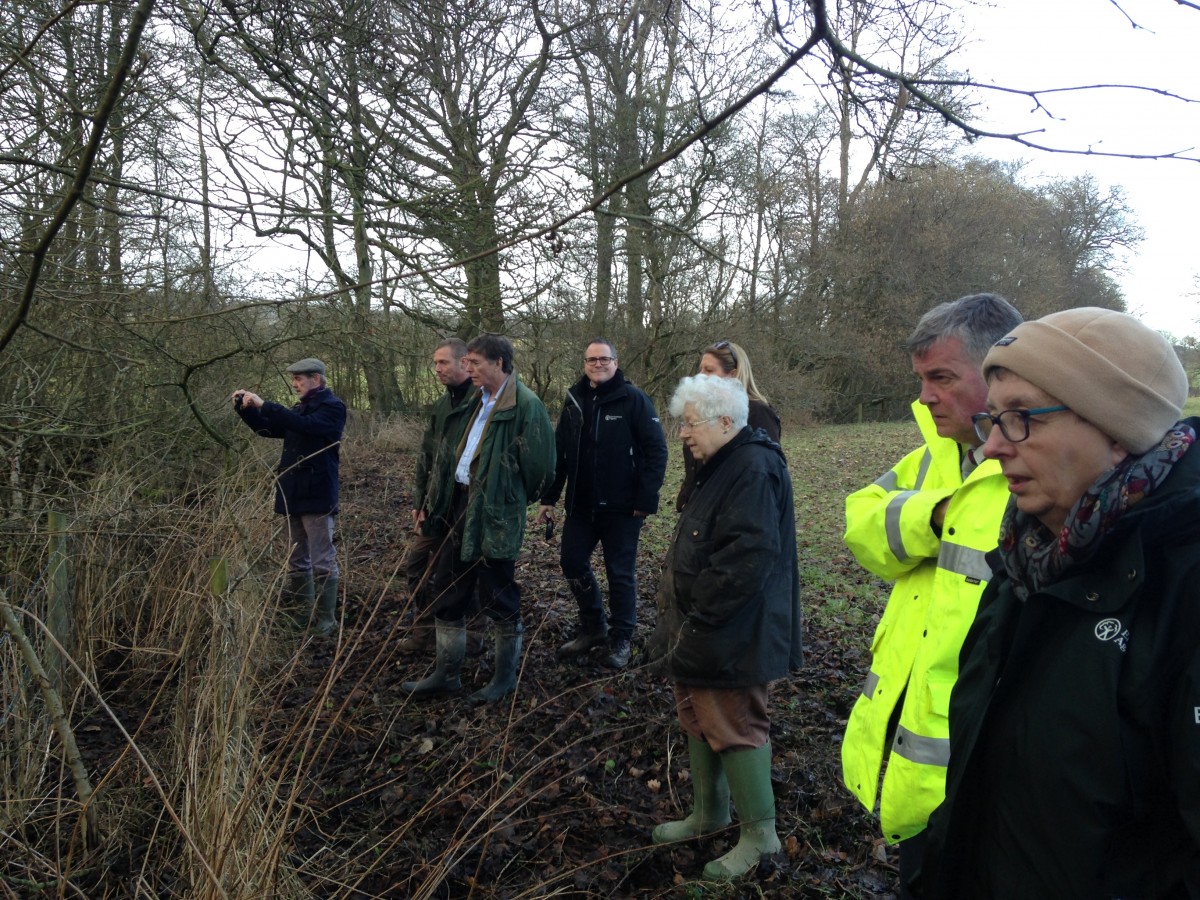
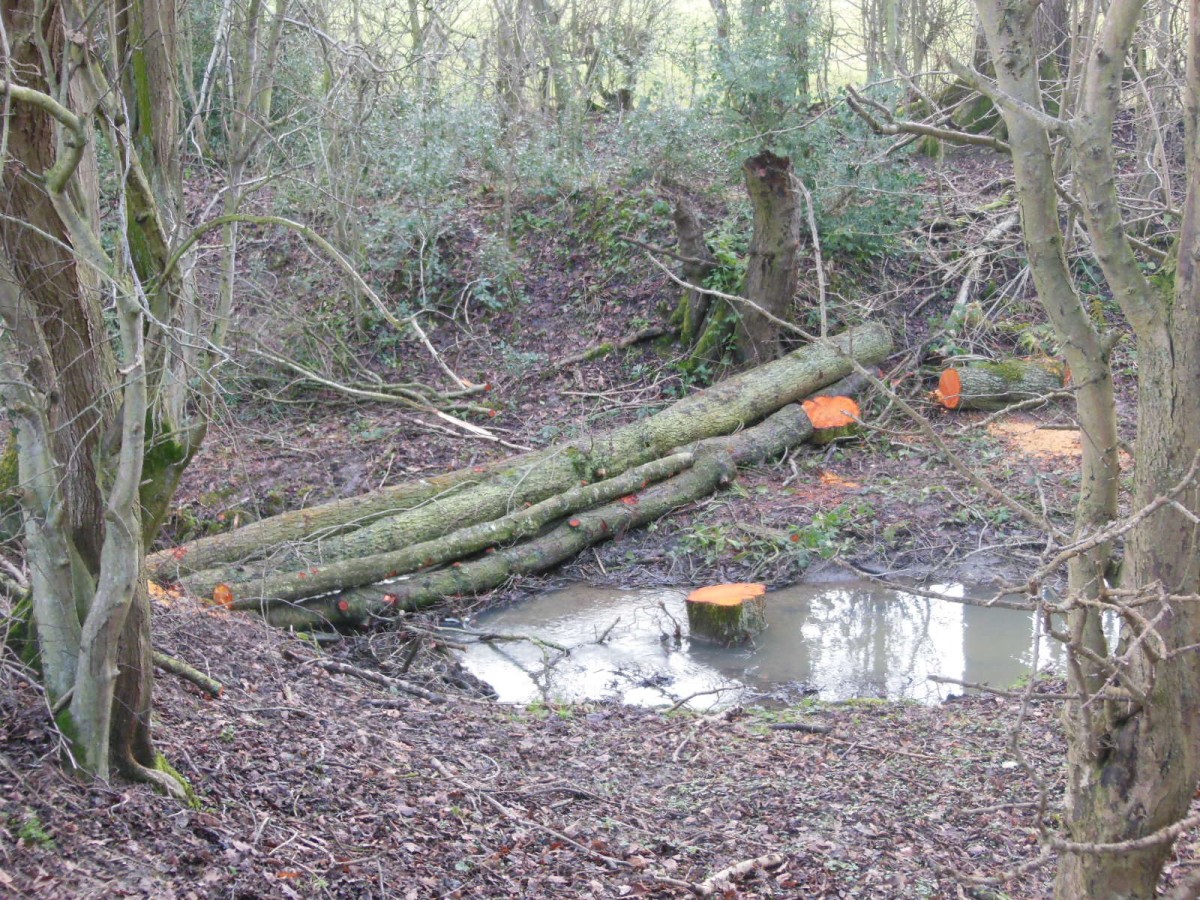
Geoff Neden
14th February 2018
Diddlebury Parish Flood Action Group
Diddlebury Parish Flood Action Group
Progress Report # 8 - January 2018
The good news is that an Agreement has been reached with the local landowners which will allow a start on the construction of over 50 leaky dams in the Diddle Brook catchment in February.
Geoff attended a meeting held in Culmington on 26th January at which Mr Philip Dunne MP was briefed on the progress of the Slow the Flow project throughout the Corvedale. This was followed by a site inspection of the leaky dams already built in the Seifton Brook catchment. These have already worked well during recent rains. Mr Dunne was also acquainted with our concerns over the EA’s proposed large increases in the cost of Consents to any works in Rivers. These increases of over 4 times the present costs would price small volunteer groups such as ours out of existence. He will take this up with the relevant Minister. At the same meeting, representatives from the EA confirmed that they were aware of these concerns, which had been expressed by many other similar groups and that they would be addressed now that the Consultation period was over.
There will be a public Meeting at the Diddlebury Village Hall at 7.30pm on Thursday 15th February at which Luke Neal of the Shropshire Wildlife Trust will present an update on the Slow the Flow project in the Corvedale. This is probably the largest scheme of its kind in the UK.
The Parish Council now kindly send all Planning Applications to the Group for comment on the drainage aspects.
Geoff Neden
27th January 2018
Diddlebury Parish Flood Action Group
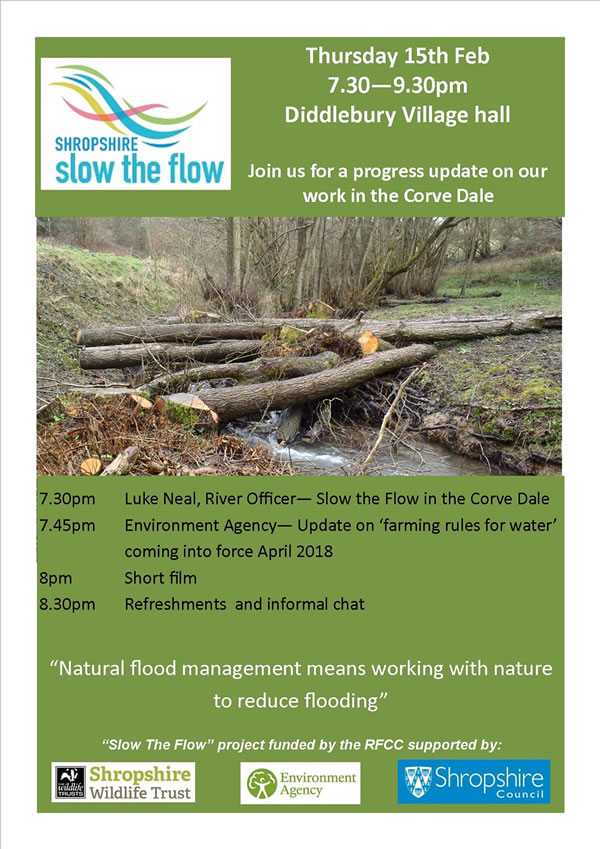
Diddlebury Flood Action Group
Notice of Meetings
Green Futures Seminar - 1st February, Craven Arms
The Environment Agency will be giving information to landowners and farmers about the next round of regulations and funding available at 7.00pm in the Craven Arms Community Centre.
Progress on Slow the Flow - 15th February, Diddlebury
A Progress Report on Slow the Flow in the Corvedale will be presented by Luke Neal of the Shropshire Wildlife Trust at the Diddlebury Village Hall at 7.30pm. The talk will be followed by a short film. Refreshments will be provided and after the film, Luke will be available for an informal chat
Diddlebury Flood Action Group
Work Party 22nd October 2017
Images
Diddlebury Parish Flood Action Group
Progress Report # 6 – October 2017
Since the last Progress Report in March, there has been a lull in activities due in part to the very low local rainfall. A successful stream working party was however held in the section at the bottom of Mill Lane which removed excess growth including some Himalayan Balsam plants and lots of silt leaving the bed clear to handle the flow of water.
Activities have picked up recently. We had a stall at the recent opening of the Village Hall where we showed a video of High Water Common Ground which was filmed partly in the Corvedale. We held a Multi Agency Meeting on 11th October, preceded by an Ordinary Meeting on 4th October.
Following these meetings, site visits by the Agencies have been arranged to view problems at Corfton, Peaton, Peaton Strand, Diddlebury and Bouldon and these will take place in the next few weeks.
The other good news is that Luke Neal of the Shropshire Wildlife Trust (WLT), is now working full time in the Corvedale. He has already surveyed and designed around 50 sites for leaky dams or similar structures upstream of Diddlebury in the Diddlebrook catchment in cooperation with Delbury Estates. These will be constructed in a few weeks after the 1st February 2018, when the shooting season finishes. The FAG will then assist the WLT by taking regular images from fixed points above some of these structures so that their efficacy can be determined and measured over time. Once work has been completed in the Diddlebrook catchment, Luke will move on to the Pye Brook catchment.
Luke is also to arrange for de silting the Diddlebrook at the bottom Mill Lane which the FAG will then maintain. It is hoped that schoolchildren from the Corvedale Primary School will then be able use the stream as an environmental resource.
We are trying to ascertain ownership of the wall beside the bridge carrying Mill Lane over the Diddlebrook and a request for information has been placed in this web page and will also appear in the forthcoming edition of the Corvedale News. The reason for this is that while the Shropshire Council accept ownership of the bridge and have it in their regular maintenance programme, they do not as yet accept ownership of the adjacent wall. Only when they do will it enter their maintenance programme. The wall is essential to direct flows emerging from beneath the bridge along the stream bed towards the foot bridge and not into adjacent properties. At the moment it is not in good repair and needs re pointing. If this work is not soon carried out, the wall will then require more major rebuilding work and in the meantime, if it were to fail during a flood event, it would lead to serious flooding of nearby properties.
We hope soon to be in a position whereby all relevant Planning Applications will be sent to us for comment on the flooding aspects of the proposals.
We are now officially Affiliated to the National Flood Forum who are to establish a Corvedale Forum, linking up all the Flood Action Groups in the Dale.
Geoff Neden
17th October 2017
Diddlebury Parish Flood Action Group
Diddlebury Parish Flood Action Group
Request for information
Mill Lane Bridge
The walls adjacent to the Mill Lane roadbridge over the Diddlebrook require maintenance. There is a lack of information over who is responsible for this work. In order to resolve this, it would be helpful to know when the bridge, together with the adjacent wall on the south side was built. It appears that the stream was diverted and the bridge and wall were built in order to obviate the need for a ford near where the present footbridge is sited. An old map dated 1832 show the stream heading diagonally across the front garden of Glebe Farm and then carrrying on across the weir below the foot bridge with the road crossing it at a ford near the footbridge. A map dated 1883 shows the stream and bridge as they are now. A further map dated 1854 is not clear but appears to show the present set up. If this is so, then the work was carried out between 1832 and 1854.
We are appealing to any long term residents of the village or the neighbourhood whose ancestors may have talked to them or their parents about this work, to pass on to us any information they may have. It's a long time ago so this is a long shot but worth a try! You can contact me on 01584841815 or gneden@googlemail.com.
Geoff Neden
FAG
16th October 2017
Diddlebury Parish Flood Action Group
Shropshire Wildlife Trust - Land Owner Event held at Beambridge Clubroom and Wilderhope Farm on 22nd June 2017
Notes on Meeting
The meeting was well attended, principally by land-owners or their land agents or tenant farmers, together with various Flood Action Group (FAG) representatives. Unfortunately there was no complete list of attendees available.
The event was hosted by Shropshire Wildlife Trust (SWT), and started with a general introduction by Kate Singleton, followed by introduction of the four speakers. These were Kate Singleton of SWT who spoke on pollinators, Luke Neal also of SWT who spoke about 'Slow the Flow' (STF), Anne-Marie Jones of Natural England who spoke about Catchment Sensitive Farming and Liam Bell of Millichope Estate who spoke about the Estate's work in re-establishing grey partridge habitat.
Each of the above spoke about their work and conservation philosophies and then we made visits to examine the practical work being carried out at various sites.
The over-lapping of all the above topics was well understood by all of those involved in carrying out practical works; this fact would clearly assist in achieving all parties’ goals in the future. It was particularly good to see and hear the understanding, sympathetic and supportive views of the farmers present, most of whom were already practising many of the preferred methods proposed by the speakers.
We were all provided with copies of two documents - Habitat Creation and Management for Pollinators (85 pages) and Increasing the Value of Hedges for Wildlife with Relaxed Cutting Regimes (2 pages) both published by Centre for Ecology & Hydrology (www.ceh.ac.uk). Both these documents can be viewed, downloaded, and printed from the CEH website noted above.
Basically, the main thrust of these reports is two-fold. First, instead of field hedge cutting every year, it is proposed that hedges can be cut every two or three years; this allows the hedges to provide increased amounts of blossom and berries. In addition, if the hedge cutting takes place in late winter, rather than as traditionally in early to mid-autumn, then overwintering wildlife benefit from more food in the form of hawthorn, blackthorn and blackberries. There are negatives to this of course as hedges adjacent to roads and lanes etc. need to be cut annually to ensure safe visibility but there are plenty of hedges between fields where this relaxed cutting regime can be adopted.
Second, the provision of habitat strips in fields, usually adjacent to hedges, and appropriately planted and managed is proposed. The recommendation is to provide between 0.25 and 0.5 hectares of appropriate wild flowers per 100ha, depending upon whether the landscape is lacking in flowers in the first place or not. The areas suggested do not have to be to the complete perimeter of a field, as they could be in corners or awkward, less accessible portions of fields. Also, shading from hedges and/or trees can have an important effect on the value of pollinator habitat, as can the aspect and prevailing weather.
Obviously the 85-page document provides much detailed information about habitat planting and management, mainly for pollinators but also for small mammals.
The grey partridge re-establishment issue dealt with the use of hedges and habitat strips where provision of some bare ground away from the hedge and some intermittent bare narrow strip 'corridors' between the bare ground through the wildflower corridor into the hedge would provide safe access for fledglings.
Partridges are ground-nesting birds and as farmland has historically been cultivated right up to the hedges their habitat has been reduced and the birds have been in severe decline. This habitat loss combined with increased use of pesticides has caused the reduced survival rate of chicks and thus the severe overall decline in the grey partridge population.
It is hoped that increased areas of suitable habitat and reduced use of pesticides will contribute to a reversal of this trend.
Finally, all members of the FAG are well aware of the STF information provided by Luke, and have seen it in practice in the form of leaky dams between Westhope and Culmington. However, it was good to see the Wilderhope Farm leaky dams in places which, I suspect, are still awaiting a real test! The proposal to record the effectiveness by dated and timed photography will add to the wealth of information already available.
The meeting concluded back at Beambridge over a buffet lunch and further general informal discussion amongst all present.
Andrew Kirk
FAG
Diddlebury Parish Flood Action Group
Progress Report #5 – March 2017
The Group recently held a regular Multi Agency Meeting where we join up with representatives from local Government Agencies to discuss flood related issues - including our input to local Planning Applications. A good working relationship has been reached with these representatives and this has resulted in quick responses to specific local problems such as blocked drains.
In January, Sarah Halford from Peaton presented a Paper on our behalf to a Conference held at the University of Gloucestershire to discuss Natural Flood Management (NFM).
A trailer for the forthcoming film "High Water Common Ground" which promotes NFM and which is based on interviews with members of Flood Action Groups across the Country, including Diddlebury and Culmington is available via the following link:https://vimeo.com/194145332 . We hope in the next few months to arrange a public showing of the full film to all those interested in the whole of the Corvedale.
Actual construction work on Slow the Flow Structures should commence in the Diddle Brook catchment during the next Financial year with work in the Pye Brook catchment following on.
Geoff Neden
10th February 2017
Diddlebury Parish Flood Action Group
Diddlebury Parish Flood Action Group
Progress Report #4 - December 2016
The Parish suffered a serious flood event on Monday 21st November. Anecdotal evidence suggests that it equalled the 2007 flood. The level gauge under the B Road bridge in Diddlebury recorded a 1M rise and fall over a four hour period. The severity varied across the Parish but flooding of roads occurred in several places and Diddlebury, Peaton and Bouldon all suffered.
Mill Lane in Diddlebury flooded but not as severely as in 2007 and it is hoped that this was at least in part due to the stream clearance carried out in October.
In the Autumn Statement, the Chancellor allocated some £15M towards Slow the Flow projects so it is good to see that this sensible approach has Government support.
A trailer for the forthcoming film "High Water Common Ground" which is based on interviews with members of Flood Action Groups across the Country, including Diddlebury and Culmington is available via the following link:https://vimeo.com/194145332
Geoff Neden
10th December 2016
Diddlebury Parish Flood Action Group
Diddlebury Parish Flood Action Group
Progress Report #3 – November 2016
The stream at the bottom of Mill Lane was recently cleared of excess silt and vegetation by a work party, vastly aided by the use of a machine. The waterway is now clear for any winter floods.
The Slow the Flow survey in the Diddlebrook catchment is under way by the Shropshire Wildlife Trust and areas suitable for leaky dams and other low key structures have been identified. Funding is available in the current financial year to actually start work on these during the winter months which is excellent news.
In the Pye Brook catchment, suitable sites have also been found and discussions with the relevant land owners will soon take place. Old rainfall records at Abdon and Clee St Margaret are being utilised and it is hoped that further level boards and rain gauges can eventually be placed in the catchment which is larger and more varied than that of the Diddlebrook.
The leaky dam structures may look like a build up of driftwood and other rubbish in a watercourse but they are in fact properly designed and constructed. Members of the public are requested therefore not to dismantle these in a well meaning effort to clear obstructions in a watercourse.
Future regular maintenance of the Mill Lane bridge and other drainage structures is being pursued by the FAG and Planning Applications for new housing developments in the area are also being scrutinised to ensure that run off’s are not increased as a result of the development.
Geoff Neden
28th October 2016
Diddlebury Parish Flood Action group
Diddlebury Parish Flood Action Group
Progress Report #2 – August 2016
At the risk of sounding rather like Fotherington Thomas (Down with Skool), I can report that the Diddle brook in Mill Lane, Diddlebury has had a good few days.
The bollard recently knocked down by some youths has been re erected, the gravel beneath the road bridge has been cleared and irises have been planted along the banks.
My thanks to the Parish Council EMO, Shropshire Council, Bridges Dept and Tom.
Around 10 tonnes of gravel was removed from beneath the bridge arches and the old foundations are now visible. The area of waterway is now significantly larger. The leaks in the training walls have also been repaired.
Geoff Neden
23rd August 2016
Diddlebury Parish Flood Action Group
Diddlebury Parish Flood Action Group
Progress Report – August 2016
The Group has made good progress over the past two months and has benefitted from close cooperation with the various Central and Local Government Agencies involved and with the National Flood Forum.
We also liaise with the Severn Rivers Trust, the Culmington FAG and the Friends of the Corve and Teme in Ludlow.
In Bouldon, blocked drains have been cleared and placed on the regular maintenance programme. A survey has been completed and a design is under preparation for diverting flood water round the bridge.
The flow gauge had been installed on the main Diddlebury bridge and the excess gravel beneath the Mill Lane bridge will soon be cleared and leaks in the adjacent wall repaired.
The mapping of drainage features has commenced and drains runs will be confirmed by the use of dye. All this information will then be added to the Shropshire Council data base. Ascertainment of land ownerships in both catchments is under way.
Work has started on the Shropshire Wildlife Trust survey of the Diddle Brook catchment and it is hoped that the Pye Brook catchment will be next in line.
The Diddle Brook section in Mill Lane was cleared of a build up of silt and weeds by a working party last month. The Diddlebury ducks are back along with a moorhen.
Members of the Group were recently interviewed and videoed for an upcoming feature on flood action groups.
Geoff Neden
Stream Clearance Month
May was the designated Stream Clear Up month and work parties carried out clearance operations on the Diddle Brook in Diddlebury and on the Pye Brook in Bouldon and Peaton.
On 3rd May, the Diddle Brook was cleared of excess vegetation from the Mill Lane road bridge to the foot bridge leaving a much wider drainage path for the water. The banks were strimmed to keep the grass under control.
In Peaton on May 20th, a group of 5 cleared quite a lot of wood from the stream and also plastic, metal, asbestos, two dead lambs and rubber roof liner. An informal “leaky dam” was found up stream and more work is required in future upstream of this towards Peaton Strand as well as downstream but this will involve a major work party.
In Bouldon, much hard work had already been done the previous week by the owners of Bouldon farm clearing some large trees which blew down into the stream in the high winds. Then on 20th May eight Bouldon residents cleared large branches and trash upstream of the village by the weir. A good time was had by all who then retired to the Tally Ho where the owner had kindly offered to pay for a meal for them to reward their hard work.
Further working parties will be arranged and members of the Group in Diddlebury also keep the stream bank grass under control between the formal dates.
Notes on trial kick survey carried out at Culmington on 12th May 2016
The trial survey was run by Helen Campbell of the Shropshire Wildlife Trust (SWT) for the Culmington FAG.
The technique produces results which indicate the quality of the water in the stream and which can be compared with other results from the same place on future occasions – say twice per annum – and hence show whether the water quality is improving, static or deteriorating. Stream water quality can be degraded by such things as leaky septic tanks, incorrect plumbing connections which allow say dishwasher effluent to run directly into streams, agricultural practices such as fertiliser run off, silage pit drainage etc, housing developments in the catchment and so on.
The technique uses a large, framed fine mesh net with a flat bottom which is held down tightly to the stream bed using a long handle. Just upstream of the net, the operator disturbs the stream bed (kicks it) for about a minute and a half. If the sample site contains different types of bed (gravel, mud, vegetation etc) then the sample should be weighted accordingly. The technique is easy, the equipment basic and the test does not take long to carry out.
After the time has expired, the contents of the net are tipped into a large container which already has stream water in it. The small creatures caught can then be individually spooned out into smaller containers and examined against an Identification Field Guide (available on the SWT website – along with survey instructions) to establish which species have been found. Each type is then counted so that the survey produces both the number of species existing at the sample point and the quantity of each one. In general terms, the greater the diversity, the better the water quality.
From what appeared to be the clear water of the Seifton Brook, we found a huge diversity of stream life ranging from Cadis Fly Larvae to leeches, fresh water shrimps etc. It was fascinating to see what had emerged. Hopefully we can use this in time in the Diddlebury Parish Catchments.
Geoff
Diddlebury stream clearance 3rd May
A good turnout last night ensured that the stream benefitted. It looks much better now and has a cleaner flow path. Thanks to all who took part.
Geoff Neden
May stream clearance programme
Work starts on the Diddle Brook at Diddlebury by the Mill Lane bridge at 6.00pm on Tuesday 3rd May. Please being garden tools and wellies.
Then on Friday May 20th, clearance work will be carried out on the Pye Brook in Peaton and Bouldon - both starting at 6.00pm. Soup and a visit to the Tally Ho will follow. Volunteers from elsewhere in the Parish would be particularly welcome here due to the small populations of both villages.
Geoff Neden
Notice of Meeting
Helen Campbell of the Shropshire Wildfile Trust will be carrying out "kick" surveys in the Seifton Brook in Culmington in conjunction with the Culmington FAG on Thursday 12th May at 7.00pm. Members of the Diddlebury Parish FAG are welcome to attend and see what a "kick" survey entails. Bring wellies
Geoff Neden
27th April 2016
Notes on talk given by John Curtin to the U3A in Ludlow, 25th April 2016
John is Acting Executive Director of Flood and Coastal Risk Management for the Environment Agency
John’s talk related mainly to the floods caused by the three storms over the Christmas period which gave rise to catastrophic flooding in Cumbria, Yorkshire and Lancashire.
He showed slides of the devastation and also provided statistics which illustrated the huge scale of these events which broke many records.
The presentation was excellent overall and gave rise to many good questions which he answered honestly. The satellite views of the three storms were fantastic – showing how the third one was so large that it shifted the jet stream, which had been stuck farther south than normal, far to the north. Some people who were camped at the North Pole went to bed the previous night in temperatures of -5 but woke up to +25!
Whatever one’s views are on climate change, the fact is that statistically, severe flooding events are on the rise in UK. The Government recognises this and is planning accordingly within economic constraints.
With particular relevance to our situation, he confirmed that in his view the correct way to deal with flooding is to use a combination of “hard” engineering methods – embankments, pumping schemes, dredging and son on – and “soft” methods by which he means catchment management projects.
The catchment management scheme around Pickering has been in use long enough to have produced meaningful statistics comparing downstream flows after similar rainfall events before and after its installation. These show a reduction in peak flows of up to 20%.
Geoff Neden
25th April 2016
Notes from Meeting with Culmington FAG on 14th April 2016
Those present:
Hugh Disley Chair Culmington FAG
Jayne Disley Secretary Culmington FAG
Peter Lines Member Culmington FAG
Suki Gregson Smith Member Culmington FAG
A N Other Member Culmington FAG
Graham Harding Culmington PC
Carol Byng Culmington PC
Thomasin Sayers National Flood Forum
Helen Campbell Shropshire Wildlife Trust
Jane Collier Chair Diddlebury FAG
Geoff Neden Diddlebury FAG
The meeting started with feedback from the recent field trip to see the flood alleviation work carried out near Stroud. This had been extremely useful. The different types of structure were seen, and as it had rained heavily for the preceeding few days, it was possible to see how effective the measures were. The trip had confirmed to members that what they were trying to do in Culmington was achievable. A slide show will be prepared from all the images taken on the trip and this will be presented at a forthcoming meeting.
Helen Campbell then gave an update on her field work. This is nearing completion with most land owners already on board. She also said that physical work on site should commence in early summer this year using local Contractors. She confirmed that funding was available for both the survey and the follow up physical work. She will be conducting “kick” surveys in local watercourses to determine what wild life is there and asked for volunteers. Dates are to be circulated.
Hugh pointed out that some work done in Culmington Parish will impinge on land in the Diddlebury Parish as administrative boundaries do not coincide with catchment areas. Carol pointed out that cooperation between Parishes was the policy of Shropshire Council.
The rain gauge is now in operation and visible on the same web address as the depth gauge on the bridge.
G C Neden
Notes on meeting held in Culmington on 26th January 2016
Firstly thanks to those members who were able to attend the meeting. I hope you found it as interesting and useful as I did. I estimate that there were upwards of 40 people present - many of them local land owners.
The meeting was called to show a video produced by a group in Stroud who suffered from bad flooding in the past and who subsequently took action to try and prevent this happening again.
It showed the low tech measures taken, with the cooperation of the landowners, in the upstream catchment.
Although all catchments are different, these are the same measures which in principle could be applied in Diddlebury Parish.
I hope to have a link to the video on U Tube shortly and will circulate this so that those of you who were unable to attend last night can see what it is all about.
After the video, Pete Lambert who is running the current work in the Culmington catchment gave a Power Point presentation on the work his group are doing in Shropshire and in particular in Culmington. This was refreshingly free from jargon and acronyms and clearly showed how small low tech works of many different sorts can make a big difference with the long term benefits not restricted to flood reduction but also extending to improvements in land use management. The current timetable envisages work on control structures starting in the Culmington catchment by the end of 2016.
There was also useful input from officers of the Shropshire Council and the Environment Agency.
The question of controlling flows in the Corve was raised and it was pointed out that by restricting flood flows in the tributaries using the means illustrated in the presentation, the overall flow reaching the Corve would also be slowed down leading to less flooding of the main river.
G C Neden
DIDDLEBURY PARISH FLOOD ACTION GROUP
NOTICE OF PUBLIC MEETING
The next meeting is to be held in the Diddlebury Church Hall at 6.30pm on Tuesday 12th January 2016.
Before then it would be most helpful if all those residents of the Parish who are aware of flooding problems either with their own property or otherwise could contact me so that I can collate all such information and mark it up on a map to be presented at the January meeting. I would like to visit the problem areas and hear details such as depth of water, frequency of flooding etc. so as to arrive at as comprehensive a picture of flooding in the Parish as possible.
I can be contacted by e mail : gneden@googlemail.com or by phone : 01584841815
Geoff Neden, Diddlebrook Barn, Diddlebury
25th November 2015
Notes on meeting held in the Culmington Village Hall at 7.30 pm on Thursday 12th November 2015
In attendance:
Mr Hugh Disley Culmington FAG
Mrs Jayne Disley Culmington FAG
Ms Suki Gregson Smith Culmington FAG
Ms Thomasin Sayers National Flood Forum (NFF)
Ms Grace Martin National Flood Forum
Kevin Shropshire Wildlife Trust Volunteer
Helen Shropshire Wildlife Trust
Geoff Neden Diddlebury Parish FAG
Progress
Work has commenced on the habitat survey in the stream catchment. Prior to this, details of nearly all affected land owners have been collected and shown on a plan so that they can be contacted to arrange entry.
The survey will map all the different habitats such as woodlands - broadleaf, conifer, wild or plantation - grassland and so on in the catchment area to a format developed by the Wildlife Trust. This is designed in such a way that the work can be done by volunteers with no detailed knowledge of habitats.
The mapping will include all water features - streams, ditches, land drainage, springs, ponds etc and will also identify areas where new flood alleviation features such as leaky dams, tree planting and so on could be sited.
Once these are decided on in liaison with the land owners, finance will be sought (assisted by the NFF who can arrange funding from the EA via the Shropshire Council and/or using funds already allocated to farmers by other agencies such as Stewardship schemes both high and low level) and formal Contracts with the land owners will be drawn up and signed. Physical work on site can then commence.
Geoff briefly told the meeting what was happening in Diddlebury Parish. Following the October meeting addressed by Thomasin, requests have gone out to residents asking for information on past flooding problems. The next public meeting will be held on 12th January 2016 at 6.30pm in the Diddlebury Church Hall when this information will hopefully be available and marked on mapping.
Publicity/Information
The Wildlife Trust would be interested to hear from anyone willing to be trained as a habitat surveyor.
Culmington FAG will be promoting the scheme at their Xmas Fair on 4th December by means of a table and display.
The Wildlife Trust will be putting on a show at the Culmington Village Hall at 7.30pm on Tuesday 26th January 2016. The programme will include a Video featuring flood alleviation work done by the Stroud FAG.
The Wildlife Trust will also be making an evening presentation at their Shrewsbury HQ on the evening of Thursday 24th March 2016 (to be confirmed) around the book "Taming the Flood". Also included will be Woodland for Waters setting out the use of trees in flood management and the potential economic benefits for farmers arising from this.
It was suggested that other local FAG's be invited to these events.
Hugh suggested making a model which could be used to show the public the various ways in which flood flows can be slowed down. This would involve real water and a means of incorporating model dams etc which would then show immediately what happened when they were introduced. Helen promised to follow this up as it would be an excellent piece of kit to be used in local schools.
Emergency Plan
The meeting went on to discuss the Emergency Plan but I had to leave early so missed this.
G C Neden
Below are the minutes from 2015 meetings >>

